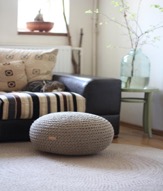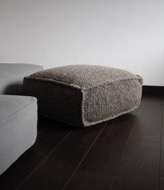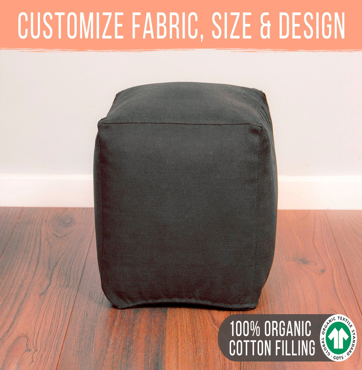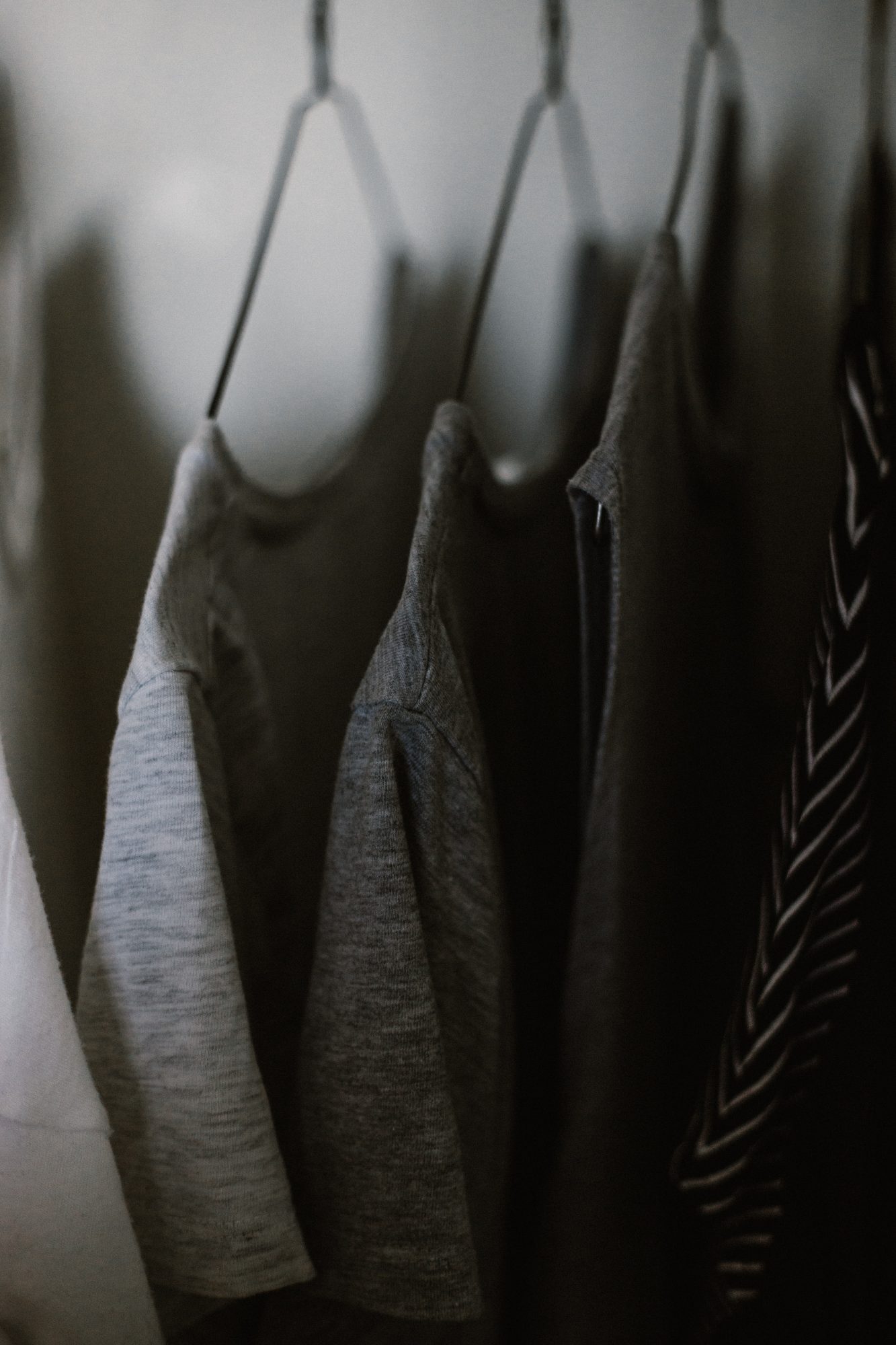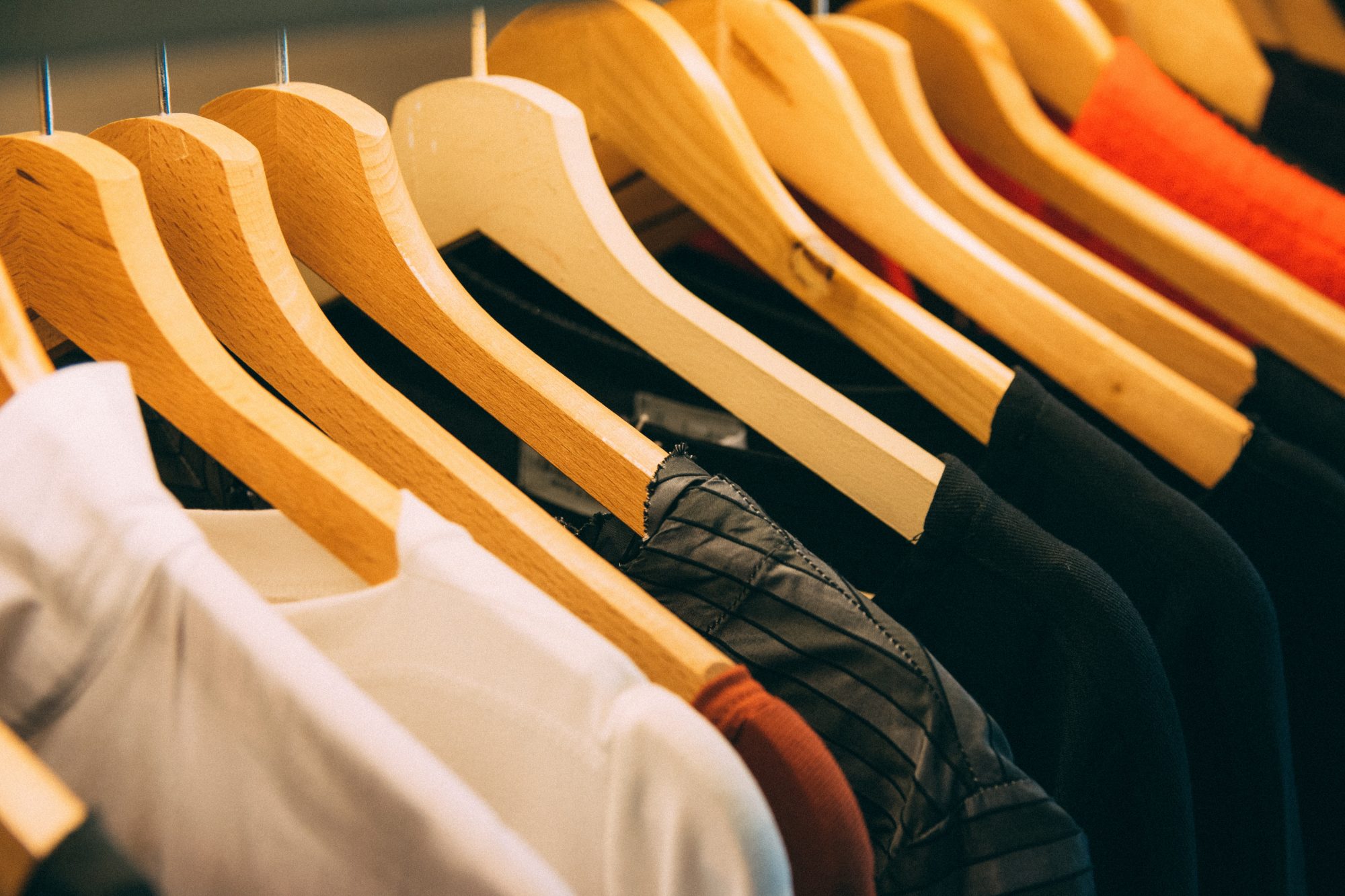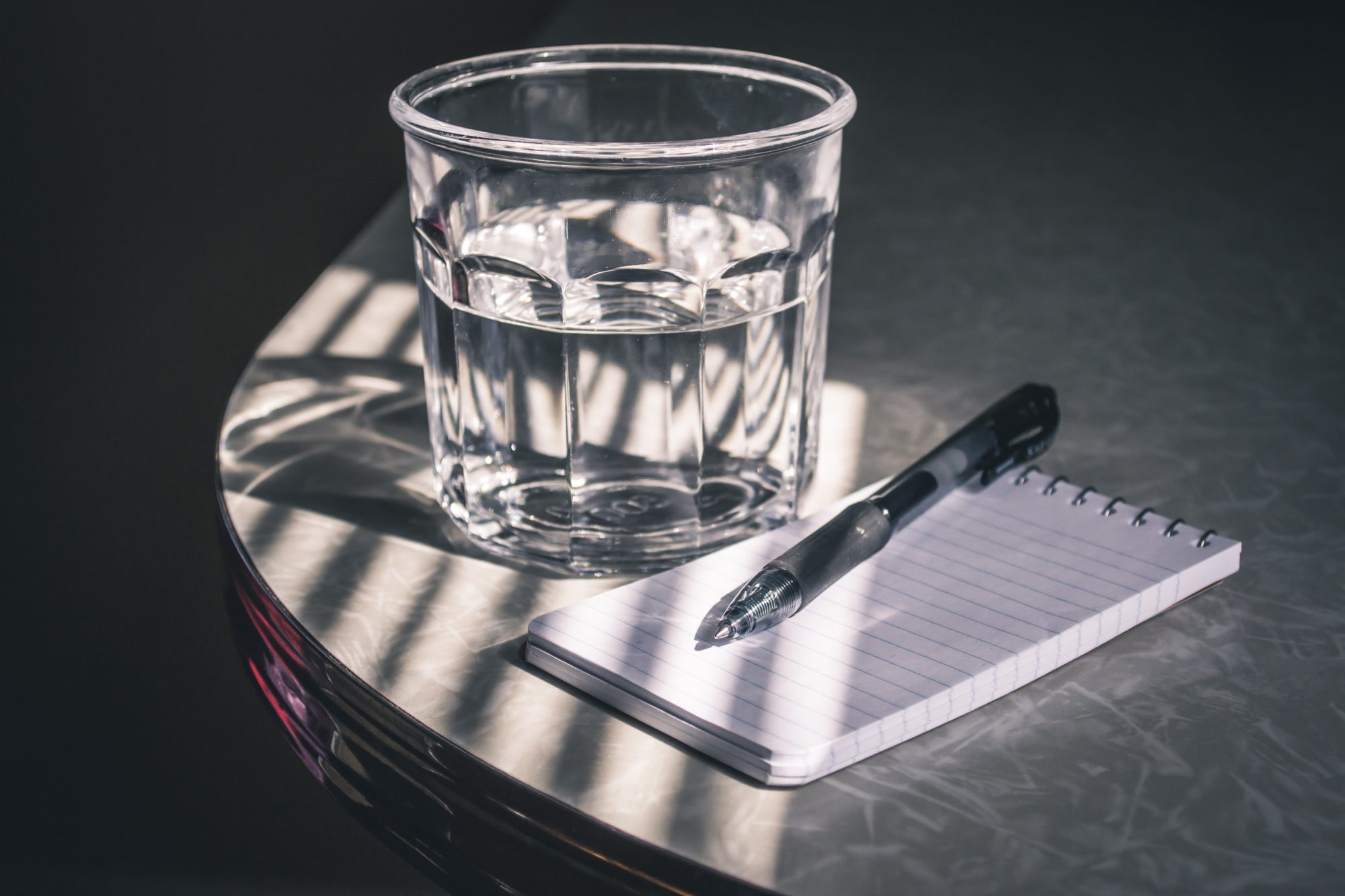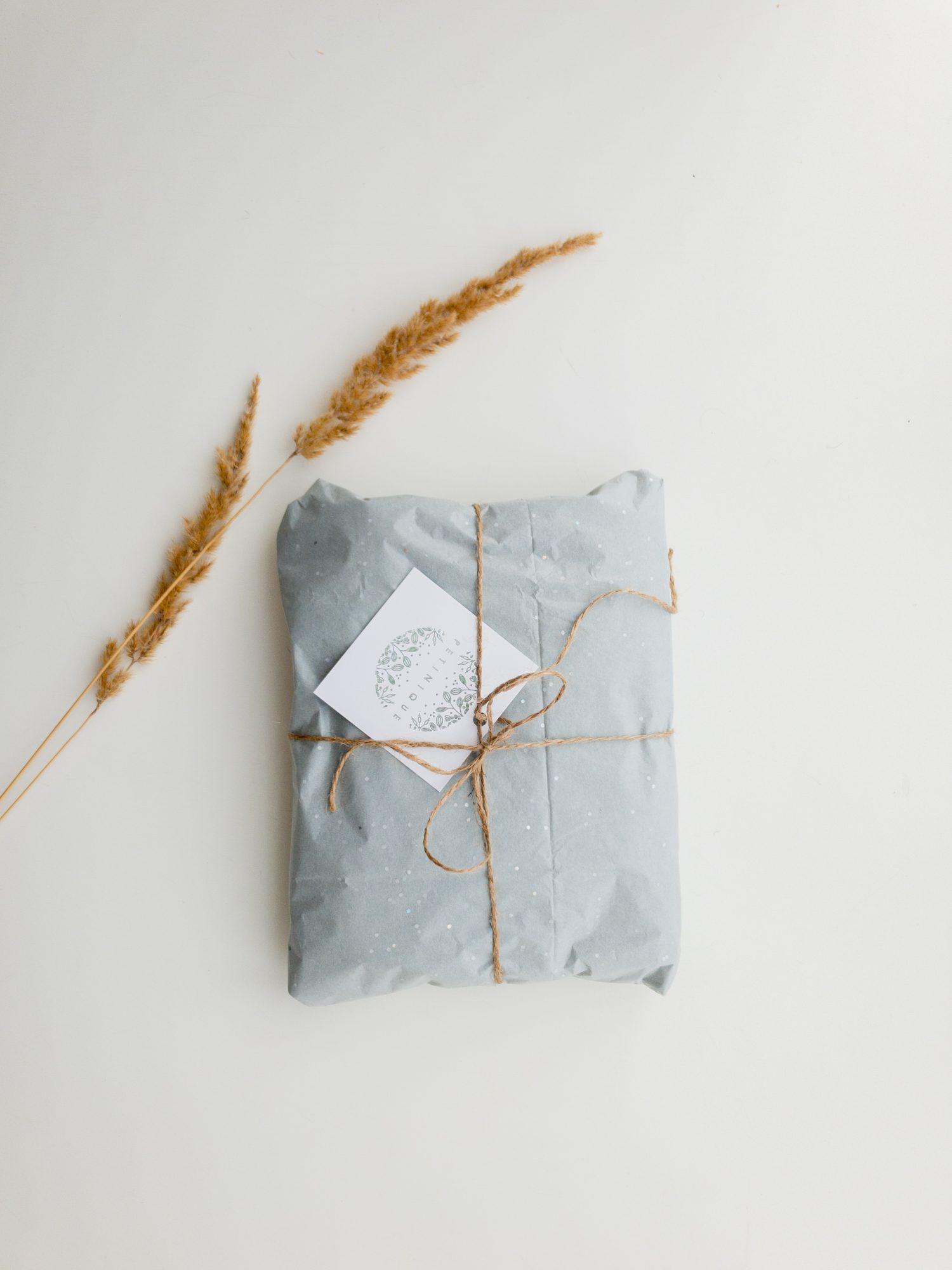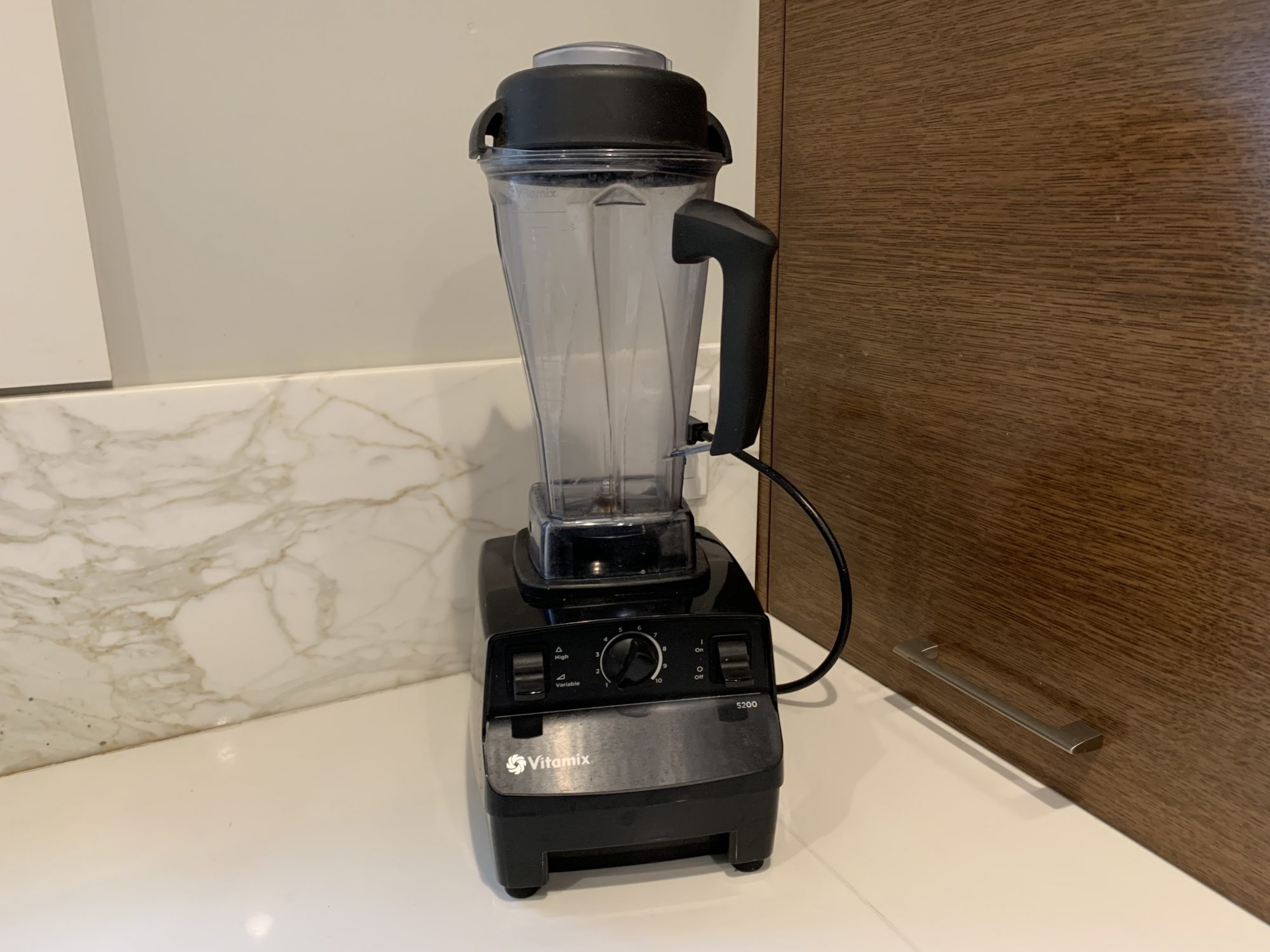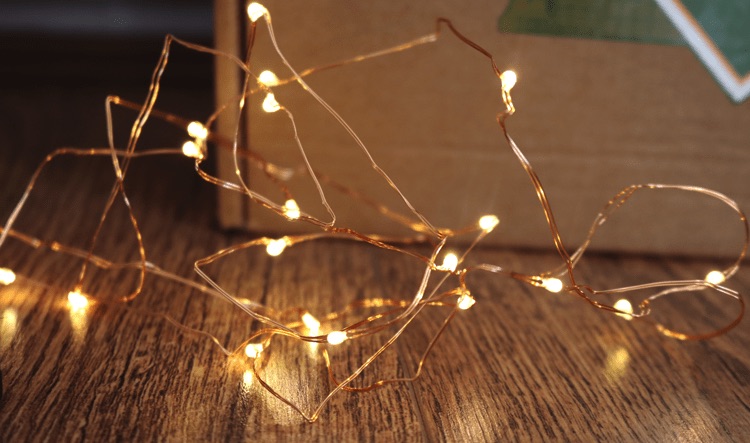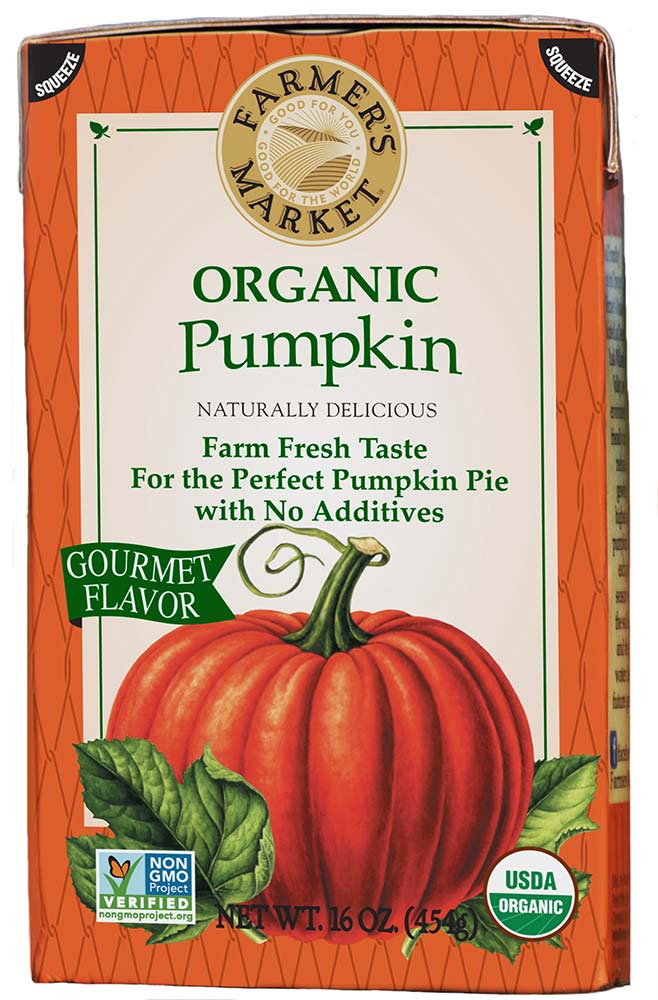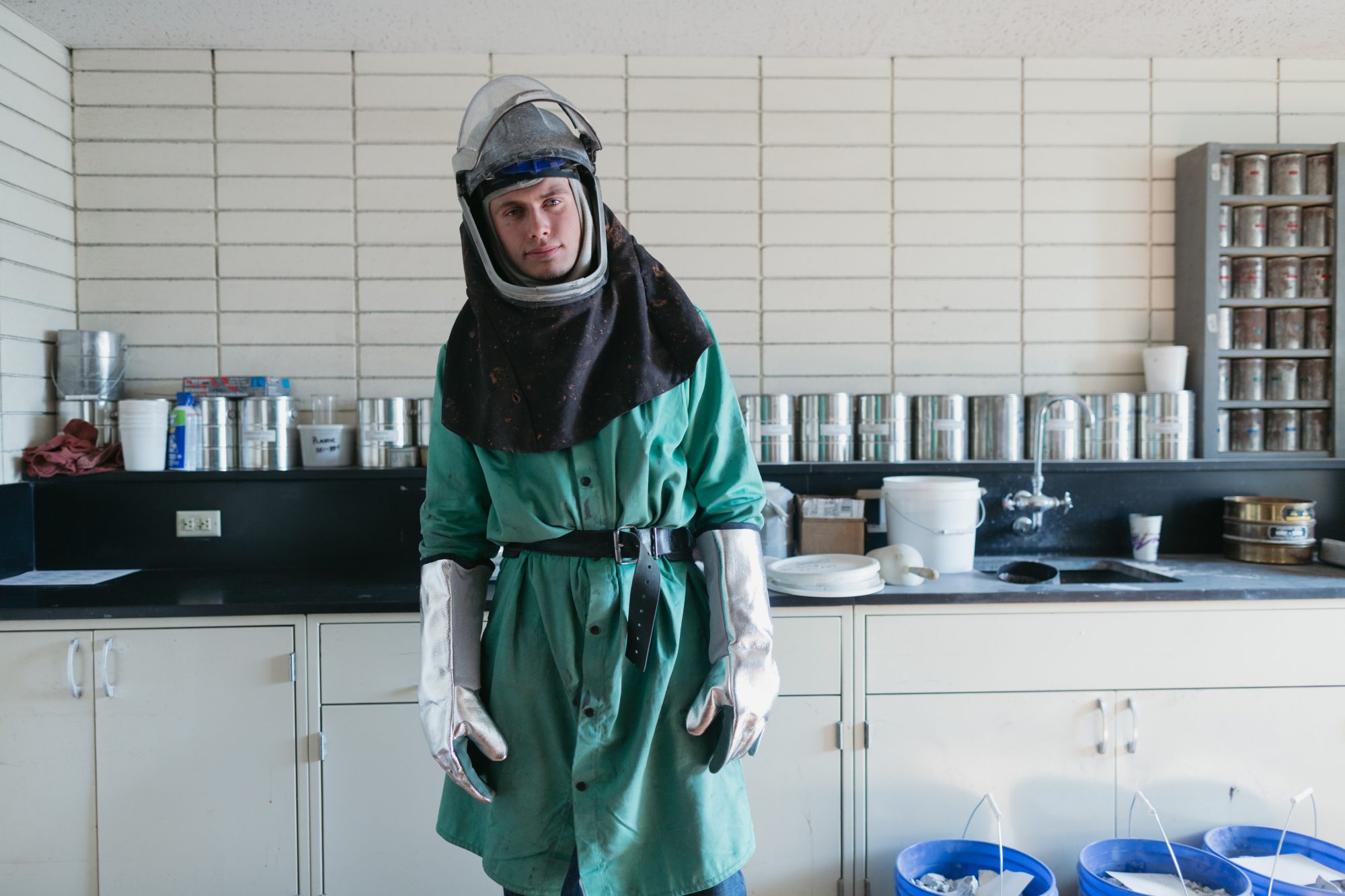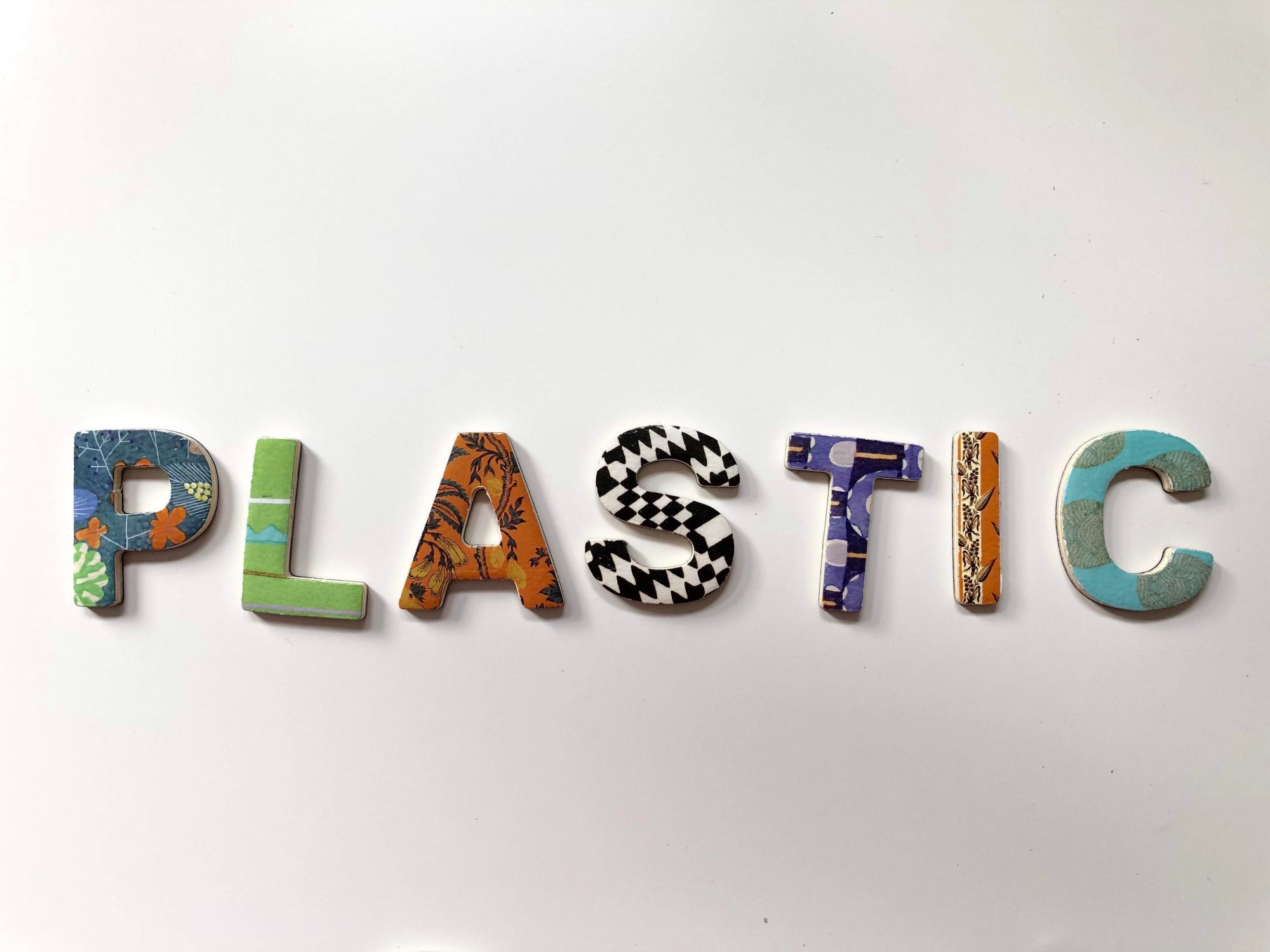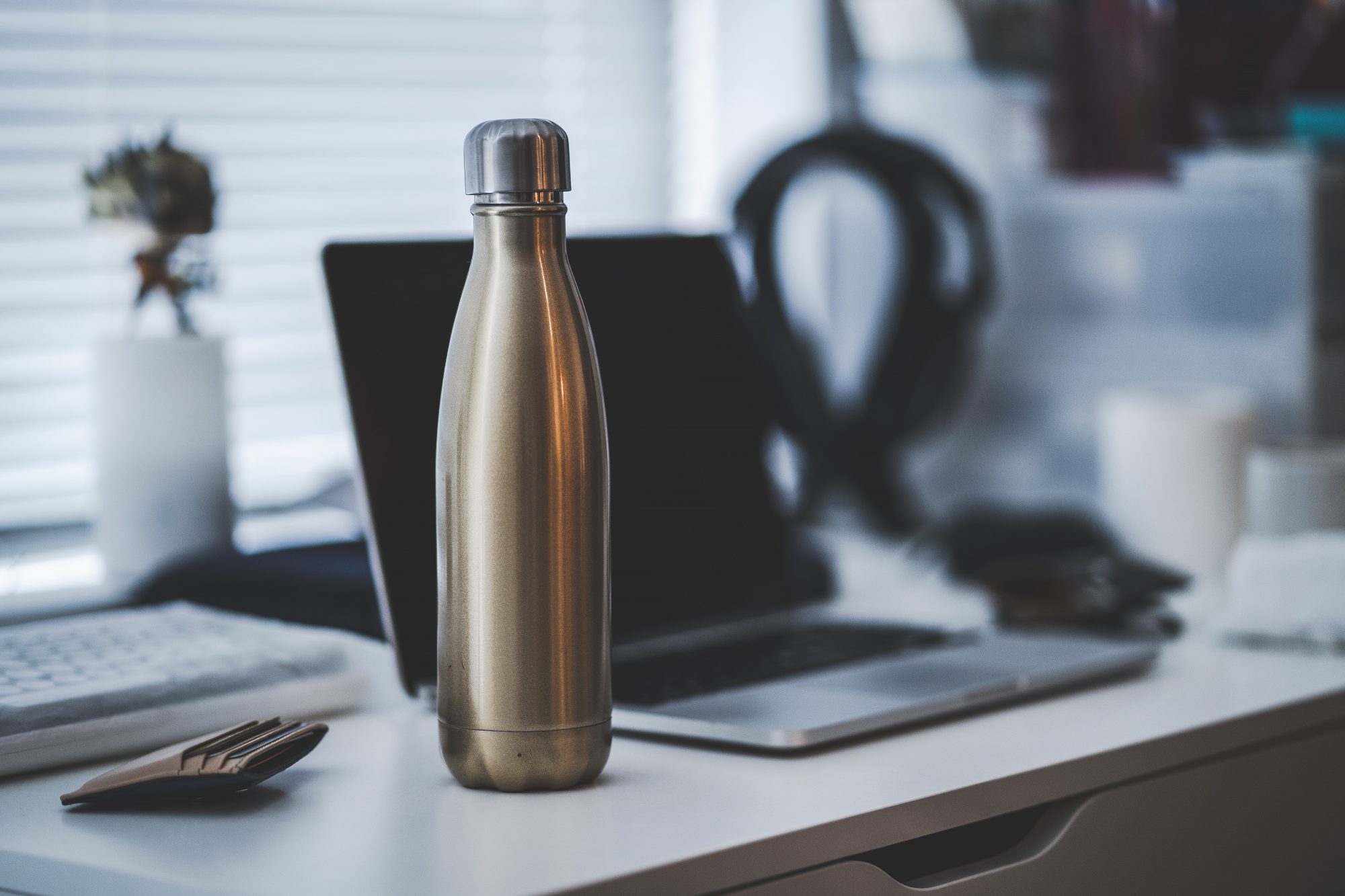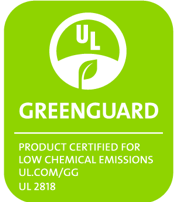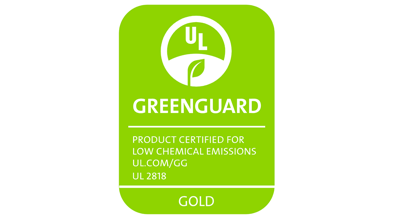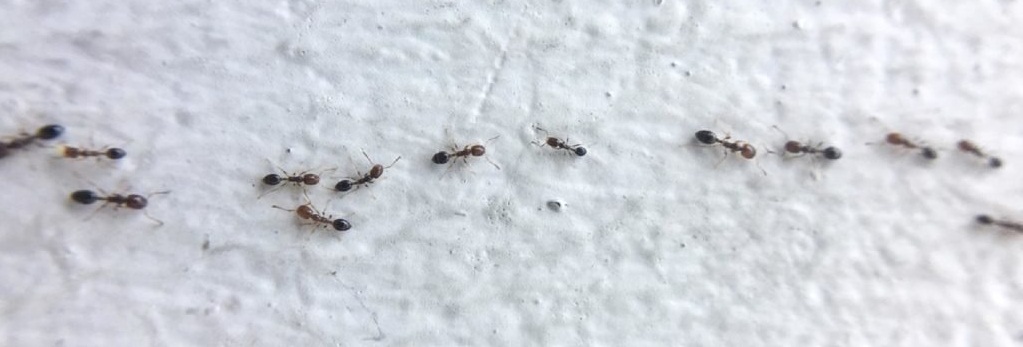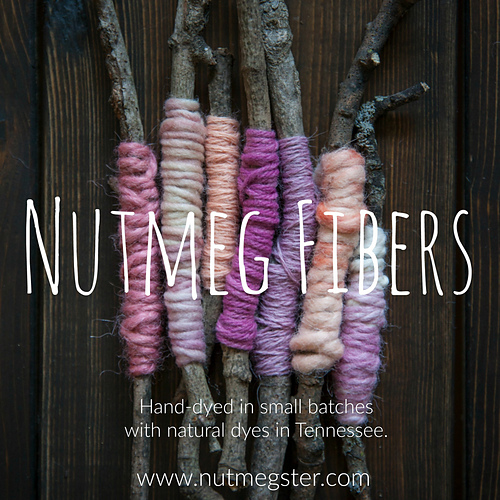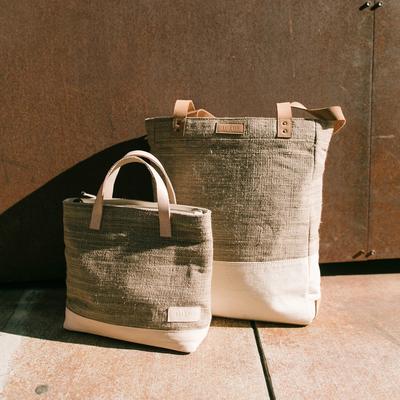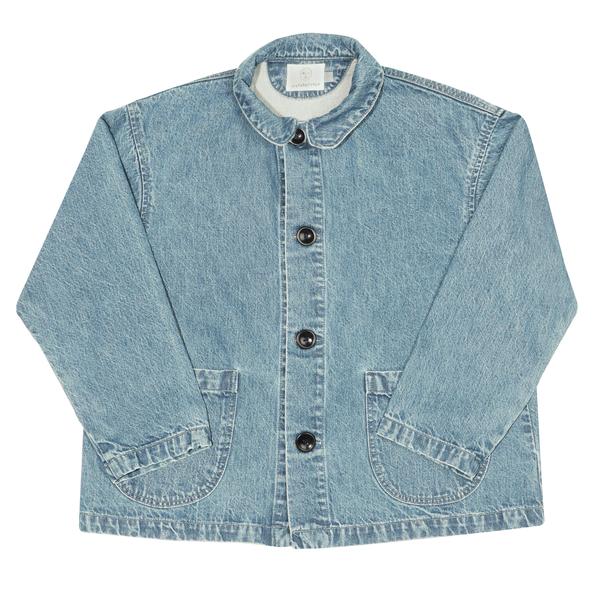
Travel
Camper
Question from John
Has there been any new updates on non toxic campers? It seems like all campers are still using toxic materials and then the mold issue. Is it best to perhaps just get an aluminum trailer and build yourself?
Lisa’s Answer
I am not aware of any new updates. Debra is blogging about her reasons to build a tiny house on a motorhome chassis. You can follow her progress here.
Tiny House
Question from Mary
I have severe mcs
Looking for what would be the best place to live toxic free.
Possibly a tiny home
Would u give me direction.
Lisa’s Answer
Debra is blogging about her reasons to build a tiny house as well as the progress she is making. You can follow her here.
Another good source is mychemicalfreehouse.net.
Air Purifier
Update April, 2020: Read more in the Portable Air Purifier Buying Guide
Home Printer
Question from Martha
Do you know of a home printer that does not offgas when in use?
Lisa’s Answer
All printers will offgas. In addition to off-gassing, printers can emit particles into the air which is also harmful. Always use a printer in a well-ventilated area, keep it away from your bedroom, and use a high quality air purifier.
Here is a helpful resource to identify less harmful electronics. Look for “gold” level printers that score highly on reducing environmentally sensitive materials.
Mattress Wrapping
Question from Kristin
I’d like to wrap my mattress to protect myself from off-gassing. My research has brought me here, after this site was referenced in an idea to use foil insulation. I love this idea, but does it pose any risks? Are there any toxins I need to be aware of that might be added to the insulation? Any recommendations on brands? If I buy a polyethylene roll to wrap, what are the specs I’m looking for. So many choices pop up, and I’m not sure exactly what I’m looking for except high density, clear. Does it need to be food grade?
Lisa’s Answer
I believe you are referencing this post from 2011. Debra recommends a specific product that is just aluminum foil and polyethylene. I would be very careful to select a product that does not have any added chemicals. Here is a company that sells polyethylene wraps for mattresses. This may be a safer bet.
I know that buying a safe mattress is not affordable for everyone but it is a much safer option than wrapping a traditional mattress in plastic.
Cabinets
Question from Tamra
Hi I am trying to find bathroom and kitchen cabinets that will not off gas, and a healthy choice for home. Seems finding a painted finish on cabinets that is Low VOC is difficult, as I am told they do not wear well. Are there any companies you like for MCS? Mainly I have looked at Crystal cabinets ( seems if I understand right that their stained cabinets do have a low VOC finish top coat? But I do not think painted ones do?) Wood Cabinets 4 less I came across on this site, but I did not see much on Crystal cabinets. Also trying to find a more affordable, but HEALTH and not reacting to new cabinets is the most important thing.
Lisa’s Answer
Crystal Cabinets do not specify on their website if their paints or stains are low VOC. You could call them and ask. You could purchase solid wood cabinets from Wood Cabinets for less and get them unfinished and have someone paint them for you using a low VOC, or preferably a zero VOC paint.
I can tell you whether or not products are toxic but I can’t tell any individual whether or not they will react to something as everyone is different. Readers, are there any recommendations for cabinets for those with MCS.
Laptop Computer
Question from Sherry
Any suggestions for a laptop computer that doesn’t outgas much. Thank you for any help you can give.
Lisa’s Answer
There is a very helpful resource called the Green Electronics Council. “Purchasers can search for electronics based on product category, manufacturer, geography or EPEAT rating. EPEAT-registered products can even be identified based on specific attributes valued by an organization (reduction of toxic materials, recyclability, use of recycled plastic, etc.).
Manufacturers register products in EPEAT based on the devices’ ability to meet certain required and optional criteria that address the full product lifecycle, from design and production to energy use and recycling. Bronze-rated products meet all of the required criteria in their category. Silver-rated products meet all of the required criteria and at least 50% of the optional criteria, while Gold-rated products meet all of the required criteria and at least 75% of the optional criteria.”
More Sources for Non-Toxic Clothing
I’ve gotten a lot of comments and questions about my posts on toxins in clothing and where to find non-toxic clothing. It occurred to me that some readers may not be aware that Debra’s List currently profiles over 80 companies that sell all, or predominantly, non-toxic clothing. You can either look through the entire list or search specifically for companies that use only botanical dyes.
I have been searching for more companies to add to the growing list. The following five web-based companies have unique or hard-to-find styles. All are committed to using non-toxic materials and production processes and are fully transparent. Three of the companies are based outside of the U.S. so ordering may be more of a challenge but their wide range of choices may make them worth the effort.
Mate
Mate sells California-style basics, dresses and sleepwear for women. You can shop by fabric type which is helpful because some of their fabrics are better than others. Their cleanest fabrics are GOTS certified organic cotton and Super Flax, which is 100% linen. Their less optimal fabrics are slub cotton, which is not organic, and Tencil, which uses petroleum-based chemicals for processing. All of their clothing uses low-impact dyes and the company is considering natural dyes for the future.
Brook There
Brook There is based in New England and sells organic cotton and silk underwear and minimalist lingerie. The cotton is GOTS certified. These items are a step-above most organic cotton undergarments.
People Tree
People Tree is based in the UK but they sell and ship to the U.S. This is a unique company with a full range of clothing for women, men, and children including denim, jumpsuits and outerwear. The great selection may make it worth the hassle of ordering from overseas. Just be aware, if you need to return items you will need to pay return shipping costs. They use FLO certified organic cotton. “Although FLO (Fairtrade International) is for cotton itself, goods made with the cotton have to be certified throughout the supply chain and adhere to strict social and environmental standards.” Most items are organic cotton but some use Tencil or a percentage of synthetic fabrics. The materials are clearly identified in the product description.
Thought
Thought is UK based company with a great selection of contemporary women and menswear. The line includes hard-to-find items like work clothes, outerwear, and denim. All finishes are Oeko-Tex certified and all dyes are Azo-free. You can search for clothing by fabric, which is helpful because some are better than others. Look for organic cotton, hemp and wool and avoid bamboo, Tencil and modal. Some cottons include a small percentage of synthetic fabric like elastane but it is clearly listed in the description.
Shift to Nature
Shift to Nature is based in Australia and ships to the U.S. Returns are not allowed from orders outside of Australia but, like Thought, this company has a great selection of unique clothing for women, men and children. You can search by fabric so look for organic cotton and hemp and avoid bamboo and recycled synthetics.
Portable Air Purifier
Question from Karen
I have been looking at the IQ Air Atem personal space air purifier: https://www.iqair.com/us/support/tech-specs/atem-desk
Do you have any experience with this? I would like to use it in our car (offgassing new car chemicals) and hotel rooms.
Lisa’s Answer
Organic Pillow
Question from Andi
I always have trouble getting a pillow to stop smelling strong. This one is from Janice’s and they aired out the stuffing for a week. I also have trouble with the smells of pillows from White Lotus , so it is not any particular store, it is the organic cotton. (Also had trouble with smells of kapok, etc). It has been airing out since end of August. It still smells so strong that I cannot use it. Any suggestions?
Lisa’s Answer
Air Purifier- Bissell air320
Question from Bonnie
Just saw an ad for a new purifier called the Bissell Lifestyle Air 320. Wondering if you have heard of it or if anyone here has tried it. Thanks.
Lisa’s Answer
Denim Jeans
Question from Bonnie
Thanks for the recent coverage on non toxic clothing. It was helpful. Just wondering if anyone has been able to find denim jeans ?
Lisa’s Answer
Rawganique has organic cotton and hemp jeans. They seam to be discontinuing many styles so act fast!
Styrofoam
Question from Judy
More on styrofoam please. I have orchids on windowsills that are terrazzo and very cold in the winter. I’ve put styrofoam boards from a craft store on top for their protection. Should I be worrying about this particular application?
Lisa’s Answer
The more significant health concern about styrofoam is that it can leach styrene, a probable carcinogen, into food and beverages when it is used as a container. There is probably not a significant exposure from this application.
I try avoid styrofoam, in general, because it is particularly bad for the environment due to a chemically-intensive manufacturing process and its inability to break down when it is disposed.
Air Purifier for MCS- no carbon
Question from NIT
I’ve tried two air purifiers and they unfortunately exacerbate my symptoms, particularly in the sinuses.
I believe the problem is the carbon. I get similar symptoms when using a nose filter with carbon in it.
Are there are any alternative air purifiers which can remove formaldehyde and other VOCs which may not trigger me?
Lisa’s Answer
EnviroKlenz does not use any carbon. Everyone is different so I can’t tell you what will or will not trigger you. If you use the search button on the site, search for air purifiers and you will find threads where readers with MCS comment on what has and has not worked for them.
You can also read my Portable Air Purifier Buying Guide.
Yeast-Like Smell from Air Purifiers
Question from JP
My doctor prescribed an Austin Air for my MCS in 2005. It emitted a yeast-like smell, but I thought it was normal. Then, I purchased a smaller Austin Air and the air was mega fresh. I could tell instantly when I shut it off for a few hours and then turned it back on. So, I ordered another one, plus a filter for my original unit. Every single one them are now emitting a yeast-like smell. So, I purchased a Dyson air purifier and it worked like a charm, so I purchased another one. Every Dyson filter I have order in the past two years emit the same yeast-like smell. Has anyone ever complained about yeast-like smells? I’m wondering if that means the filters are old and have been sitting on the shelf for too long? I recently ordered an EnviroKlenz purifier and it emitted a strong odor and now it seems to be fine. I put it in my garage because I have a piece of new furniture that is off gassing, and the purifier is not helping. I’ve spent thousands of dollars and I’m losing hope. 🙁 Any suggestions or ideas?
Lisa’s Answer
Readers, has anyone else had this experience? Any suggestions?
You can read more about air purifiers in my Portable Air Purifier Buying Guide.
Chantal Induction 21 Cookware
Question from Chris
I see that Chantal cookware is on the list of recommended products. I have read concerns about ceramic coating in numerous sources. What are your thoughts on the safety of Chantal’s Induction 21 cookware with ceramic coating?
Lisa’s Answer
I agree that new research has shown that ceramic-enameled coatings can leach nanoparticles. I will remove Chantal from Debra’s List.
Vinyl Plank Flooring
Question from Janett
Hello. We have been looking at vinyl plank flooring . Home Depot carries a brand called Lifeproof that has the Floorscore stamp on it. I read on this site that Floorscore doesn’t test for everything that is dangerous.
We are also looked at Homecrest Cascade and Coretec Plus. Homecrest has a product safety assurance statement on their web site of what chemical are not in them.
Do you know anything about either of these products by chance? We definitely need waterproof.
Lisa’s Answer
Check out The Green Design Center. The owner, Andrew Pace, tests the products he sells and has found formaldehyde emissions from products that claim to be formaldehyde-free. Cali LVP flooring is the only LVP brand he sells.
Mattress Options for a Toddler
Question from Liz
I’ve been agonizing over what type of twin mattress to purchase for my 3.5 year old. I was set on buying an all natural mattress with organic cotton and latex components. However, I’ve been reading that many people have had issues with all natural materials developing mold. With a young child who is going to wet the bed (potty training at night), mold is a big concern to me, even with a waterproof pad. I can’t decide what the lesser of the two evils is – the potential for mold, or a polyurethane mattress (flame retardant free). Help!
Lisa’s Answer
Naturepedic 2-in-1 kid’s mattress is your best bet. One side has a food-grade waterproof coating made from sugarcane. I have not heard of any mold issues with these mattresses.
Styrofoam Sheets
Question from Hope
I love your site…as I appreciate your info so much…I’ve been through a lot with chemicals ~yikes!
I have a question, do you know of a “toxic-free” styrofoam sheet product/company that is available in the market? I need it for a major project. I need to buy in sheets, but everything I have found so far seems to have fire retardant and other chemicals added. Do you have a suggestion?
Lisa’s Answer
I am not aware of any, readers?
I try to avoid all styrofoam. Using it in a project is probably not a significant exposure but it can leach styrene into food and drink. Also, it is terrible for the environment due to it’s chemically-intensive production process and inability to bio-degrade.
See How I Search for a Non-Toxic Footstool
I’m in the market for a non-toxic footstool for my husband. He has a chair that he uses in a quiet corner of our house and would like to be able to put his feet up. Since it’s not in a main room of our house, I’m not looking for investment-quality furniture but I would like it to look nice and be built to last.
I thought it might be interesting to show the steps I take and thought process I go through before I buy a new product for my home.
Identify a Trusted Source
A quick search of my go-to, non-toxic furniture makers, Medley and Cisco Brothers, confirmed my suspicion that all of their options would cost far more than I wanted to spend. So, I went to another favorite source; Etsy.
I really like buying from Etsy for many reasons. I like to support small businesses, particularly those that are women-owned, and handmade goods are generally environmentally-friendly. Most importantly, Etsy sells many products made with natural materials and the artisans are often willing to customize when materials are not optimal.
Eliminate Problematic Materials
I chose to steer away from stools with wooden legs because it eliminates the need to evaluate adhesives and stains, each of which are potentially toxic. I also chose to avoid leather because even vegetable-tanned leather can be processed with harmful chemicals. This led me to focus on stuffed cushions or poufs to serve as a footrest.
Evaluate the Materials
Most Etsy shops do a good job of identifying the materials used in each item. The more detail that the artisan provides, the more comfortable I feel that I can adequately assess the product. I look for natural fabrics and fills and then make note of questions I have for the artisan.
I assumed that many of the items I looked at have a zipper so that the cover can be washed, but most didn’t list this as a material. Though zippers are made of plastic, it is a minor exposure and I am not worried about it.
Look for Certifications
When purchasing fabric, it is optimal to find products certified by GOTS or Oeko-Tex. Read more about certifications here.
Contact the Producer
I always like to verify the materials with the artisan and confirm that there is nothing else used in the product.
For fabrics, it’s important to know what types of dyes are used and if they have any treatments, like stain resistance. This is often not specified in the description.
I also ask for verification of organic claims and certifications.
Finally, I ask about the ability to customize if there is a material that I would like to substitute for something less toxic.
My Search
I started by searching for organic poufs. Adding the word “organic” to the search helps to identify products that attempt to use more natural materials. It is a good filter but does not guarantee that the finished product is organic. I found dozens of options and narrowed down my choice to three items. Each have pros and cons.
Option 1:
Materials:
- Crochet part: natural linen cord
- Filling bag: natural linen fabric
- Filling: Styrofoam beads.
- Linen is not beached, no dyes used, 100 % pure Baltic linen
My Evaluation:
- The fabric for both the inner and outer fabric is undyed linen.It’s not certified organic but flax (which is used to make linen) requires little to no pesticides and can be mechanically processed into linen fabric with few chemicals. Some cheaper linen can be processed with chemicals so I’ve reached out to the artisan to confirm that the linen is mechanically processed and to see if it has any certifications.
- I love that it is undyed because the dying process can be chemically intensive.
- Styrofoam beads are not something I would buy. Read more here about Styrofoam. I confirmed that it is possible to buy this unfilled. I would fill it with this GOTS certified organic cotton fill.
Option 2:
Materials:
- Exterior: 100% organic wool
- Interior: Organic linen
- Stuffed with high quality polystyrene beads
My Evaluation:
- I love that the wool and linen are organic. I have asked for confirmation of organic certification and also inquired about the dyes. They look to be undyed but I want to be sure.
- Polystyrene is the same things as Styrofoam. Styrofoam is a trademarked brand name for polystyrene. I would not buy this. I have asked the artisan if I can buy the cover without any filling.
Option 3:
Materials:
- Filling: 100% Organic GOTS Certified Cotton
- Insert Cover Fabric: 100% Cotton, lightweight
- Zip-Off Cover Fabric:
-
-
-
-
-
-
-
-
-
- Max Cotton (100% Cotton)
- Canal (60% cotton/40% polyester)
- Mimos (50 % Cotton/50% Polyester)
- Bella (67% Cotton/33% Linen)
- Velvet (65% cotton/35% Polyester)
- Water/ Stain repellent fabric (60% Cotton/40% Polyester)
-
-
-
-
-
-
-
-
-
My Evaluation:
- This is the only option I found that has a GOTS certified fill. This is ideal.
- The insert cover is 100% cotton. There is no information about dyes or certifications.
- The outer cover is available in many options, including synthetic fabrics and stain repellent treatments. This raises concerns about the 100% cotton fabric. Most cotton fabric is dyed and processed using harsh chemicals. It seems unlikely that this cotton is organic or certified.
- Interestingly, this option has the best fill but the most questionable outer fabric.
While I am still waiting to get some answers from the artisans, I am leaning toward option 2, assuming I can supply my fill and the wool and linen are undyed. If I can’t confirm the type of dye used on the wool, I will go with option 1 and use my own fill. Either will be non-toxic and will get the job done beautifully!
PVC-Free Adhesive Cord Cover
Question from Melissa
I’m having trouble finding PVC-free adhesive cord covers to cover my long ethernet cables in the house. Optimally they are like these ones, but PVC-free:
https://www.amazon.com/gp/product/B07KFP5SJ8/ref=ox_sc_saved_title_1?smid=AIVUHJ2NABNJF&psc=1
Lisa’s Answer
All of the plastic covers that I found were PVC. Would you consider a fabric cover? It would be safer to avoid the adhesive as well.
Etsy has many fabric cord covers including ones made from natural fibers. These are made from linen.
I have a magnetic strip on the back of my desk and I organize my wires with metal clips.
Old Tupperware
Question from Theresa
I have pieces of Tupperware that are now 30 years old in my kitchen. I’d like to make use of it, but am wary of old plastics. Is there any health threat from it? What about 20-year-old Rubbermaid storage containers?
Lisa’s Answer
BPA has been used in plastic since the 1940’s. Once plastic containers are scratched, they are more likely to leach chemicals. I would replace them with glass containers.
Modem
Question from Andi
I got a new modem in early November and was concerned that it would produce smelly fumes. I was pleasantly surprised – it was fine. But now, just over two months later, when I am near it, it smells very strong from the fumes. Maybe I am just more sensitive right now – under a lot of stress. I do shut it off at night. Is there anything I can do about this? Cannot cover it with aluminum foil due to it heats up.
Lisa’s Answer
You are not alone. Many have written in with this problem. Read the thread here. Try to place the modem as far from your bedroom as possible and keep the area well ventilated. Its great that you shut it off at night. Make sure it’s not near a vent or any other heat source. In the thread you will see some more intensive solutions like building a sealed box around it and venting it to the outside. Additionally, there are suggestions for modems that have been better tolerated by sensitive individuals.
Oeko-Tex and Bedding Material
Question from Roger
I try to buy organic or natural bedding but it can be expensive and I am not from the United States. For pillows I can’t use down/feather and want to avoid synthetic but all natural options are very expensive or have other issues (Kapok is very flammable). If I buy a pillow with a 100% cotton cover AND 100% polyester fill and the pillow is OEKO-TEX certified, does that mean the cover only is certified or both the cover and filling/batting is certified? Thank you so much.
Lisa’s Answer
Good question. It depends how it is worded; either is possible. It’s best to call the manufacturer to check. You should ask if the finished product is certified or just the cover. Unlike GOTS certification, Oeko-Tex does certify synthetic fabrics as well as natural fibers. If it is the whole pillow that is certified it is a good, more affordable solution to a GOTS certified pillow. Even thought the polyester fill is not ideal, at least you know that the chemicals used in the processing of the product are relatively safe.
Cutting Board
Question from Adriana
I would like to know if there’s a wood and wood alternative cutting boards available that are toxic free; ie, they contain no formaldehyde, no mineral oil or any other toxin. I’m looking for individual cutting boards for veggies, fruits and meats. However, everything out there seems contain some type of toxin.
Lisa’s Answer
Urthware is my favorite brand. They are made with solid wood, no adhesives, and treated with organic oils and wax (no mineral oil!). Even the feet are made from natural rubber. They are sturdy and beautiful.
Sodium Ascorbate to Absorb Chlorine
Question from Fran
I have chemical sensitivities and chlorine is one of my triggers. I just ordered filters (from Igor) for my kitchen sink, bathroom sink, and shower. Because Pure Effect does not have a whole house system anymore, I am also wondering about my laundry. What is your opinion of putting several teaspoons of sodium ascorbate into my washing machine with my detergent?
Lisa’s Answer
Sodium Ascorbate will neutralize chlorine. I am not a chemist so I don’t know for sure, but it is a neutral PH so I don’t think it will have a negative impact on your washer. Readers, any additional thoughts?
Where to Find Non-Toxic Clothing
Last week I wrote about toxins in clothing. The thought of finding non-toxic clothing when there is so little transparency can be overwhelming. Fortunately, there are many companies selling chemical-free clothing. Here’s how to find them.
Debra’s List
There are dozens of companies profiled on Debra’s List that sell women’s clothing, men’s clothing and baby & kid’s clothing. A good way to start the process of detoxing your closet is to focus on pajamas, undergarments and basics like tee shirts and jeans. Here are some good sources to get you started.
Pajamas
Invest in a couple of pairs of GOTS certified organic pajamas. This way, you will spend roughly one third of your day in chemical-free clothing. It’s a good start.
All of Coyuchi’s pajamas (and all of their other clothing) are GOTS certified organic cotton. Their products are expensive but they are the highest quality and will last for years. These are the most comfortable pajamas I have ever owned.
Undergarments
Try to wear GOTS certified undergarments so at least the clothing that touches your skin is free of chemicals.
You can’t go wrong with this brand. “Super soft organic cotton. No toxic dyes. No toxic pesticides. No sweatshops. No child labor.” All of their products are GOTS certified. Great for underwear and socks.
Maggie’s Organics is a great source for socks. All of their products are GOTS certified organic cotton or wool. Some of the socks have a small percentage of synthetic fabric for elasticity which is allowed under GOTS rules. They have athletic socks which can be hard to find. Maggie’s also has a full line of clothing and accessories.
This company specifically provides clothing for people with skin contact allergies to latex and other common allergens. While not certified by GOTS or Oeko-tex, they use organic cotton and are very transparent about the chemicals used in the process. They focus primarily on undergarments and socks, but also have basic pants and tops for loungewear. “All of our products are made from natural and chemical free 100% combed cotton material. Our elasticized garments are made from a newly developed material that is both latex-free and spandex-free. Our Cottonique fabric is…PH balanced to conform with the body’s natural acidic level and is totally free of dyes, bleach and textile chemicals commonly used in other apparel.”
Basics
Clothing basics like tee shirts and leggings that can fit often into your rotation will help you build a non-toxic wardrobe.
Pact sells more than underwear. They have a full collection of clothing for women, men, babies and children.
Coyuchi has recently expanded their clothing line and now sells tees, sweaters, cotton pants and shorts.
Sustainable Clothing Websites
The websites donegood.co, which is based in the U.S., and goodonyou.eco, which is based in Australia, feature brands that do good for people and the planet. Be careful, though. Not all brands or items are entirely free of harmful chemicals. Fortunately, most of the featured companies are transparent about their materials and manufacturing processes so it is easier to find non-toxic options. Many of the brands are GOTS certified.
So Many Chemicals in Clothing
Clothing can be one of the most challenging areas to navigate for people trying to live a non-toxic lifestyle. Over 8000 chemicals are used in the production of clothing but the U.S. does not have a regulatory agency dedicated to overseeing textile production. There is little transparency in the industry, but fortunately, some companies are beginning to restrict the use of the most hazardous chemicals.
What are the Most Concerning Chemicals Used in Clothing?
Formaldehyde: Used to keep clothes wrinkle or shrink-free, and as a preservative for colorfastness and to prevent mildew, particularly when shipped overseas. Avoid clothing labeled wrinkle-free, iron-free, permanent press, or stain resistant. Washing will remove some, but not all of the chemicals.
Azo Dyes: These are the most common types of dye used for clothing. They release aromatic amines, a chemical linked to cancer.
PFCs: Polyfluorinated chemicals are used for waterproofing and stain-resistance.
Heavy Metals: Lead, cadmium and mercury are used in dyes and for leather tanning.
Flame Retardants: Brominated and chlorinated flame retardants are still sometimes used in children’s clothing.
Other chemicals of concern include phthalates, ammonia, chlorine bleach, and high-VOC solvents.
What Types of Materials are Best?
Look For:
GOTS-Certified Organic Cotton or Wool:
Choosing clothing based on fabric alone is not enough to avoid chemicals. Even organic cotton can be processed and treated with hazardous chemicals. GOTS, The Global Organic Textile Standard, restricts the chemicals used throughout the manufacturing process. The Oeko-Tex Standard 100 certification also restricts chemicals used in the manufacturing process and covers both organic and non-organic fabrics.
Use with Caution:
Tencel:
Tencel is made from eucalyptus trees which are sustainable and ethically grown. The chemicals used to process the fiber are petroleum-based but generally less toxic than those used to process cotton.
Linen (Flax):
Flax requires little to no pesticides and can be mechanically processed into linen fabric with few chemicals. A cheaper alternative that is becoming more common, however, is chemically processed linen.
Conventional Cotton:
While much of the pesticides from growing cotton are washed off during processing, even small exposures to pesticides have been linked to adverse health effects. The processing of cotton is chemical-intensive, including steps to bleach, scour, dye and finish the fabric.
Rayon:
Rayon is made by a chemical-intensive process that converts wood pulp into fiber.
Polyester:
Polyester is derived from petroleum but the process to dye it uses fewer chemicals than cotton because it retains the dye better.
Avoid:
PVC:
Faux or vegan leather is often made with PVC. The main ingredient in PVC, vinyl chloride is a carcinogen. PVC also contains phthalates.
Leather:
There are hundreds of chemicals used in the tanning of leather. Most leather is tanned using the toxic metal, chromium.
Unfortunately, there is not a simple, affordable way to build an entire wardrobe of non-toxic clothing. Here are some helpful tips to minimize your chemical exposure.
- Wash before wearing.
While you can’t wash out all of the chemicals, washing new clothing will help to remove residual finishing treatments.
- Invest in GOTS certified pajamas.
This is a great way to ensure that you will be free of toxins for the 8 or so hours of your day that you are asleep. Make sure your sheets and bedding are also GOTS certified.
- Wear GOTS certified undergarments.
It’s important that the garments closest to your skin are free of harmful chemicals. Fortunately, there are an increasing number of options available.
- Buy from retailers with transparent chemical management policies.
Check out Green America’s scorecard of major U.S. apparel retailers. (Target, The North Face, Nike, and the Gap get a thumbs up for chemical management.)
- Buy vintage clothing.
Clothing that has been washed for a period of years is more likely to have fewer chemicals. This may not be an option for people who are sensitive to fragrance.
- Buy Less.
This one’s simple. Less clothes = less chemicals.
Sources:
Green America 2019, Toxic Textiles, January 2020, https://www.greenamerica.org/sites/default/files/2019-07/GA_TextilesReport_Final_0.pdf.
Stockholm University 2015, Toxins remain in your clothes, ScienceDaily. ScienceDaily, January 2020. <www.sciencedaily.com/releases/2015/10/151023084508.htm>.
GAO 2010, Formaldehyde in Textiles, January2020, <https://www.gao.gov/assets/310/308673.pdf
Low-EMF and Low Off-gassing Heater with 3 Prongs
Question from Sue
I read through the recommendations for space heaters on this site. I did further research, and though the suggestions are low-offgassing, they are not low-emf. I have severe electrical sensitivities (as well as severe chemical sensitivities). I had a Lakewood oil-filled radiator heater with 2 prongs which died, and then I found a Lakewood oil-filled radiator with 3 prongs on the cord, and it was much more emf-safe for me (than the 2-prong one). I bought them both USED, so they were off-gassed. The 3-prong one just died. I have been unable to find a 3-prong replacement by any brand. I am willing to try any type of space heater, as long as it is both low-emf and low-offgassing.
Lisa’s Answer
Readers, any suggestions?
Weighted Blankets
Question from Kiersten
I’ve been searching for a weighted blanket to find and am having no luck finding one that doesn’t include some kind of polyester. The best I’ve found is this for example, with glass beads and certified toxic-free fabrics, but they still say the use a thin layer of polyester batting to hold the beads in place: https://balooliving.com
Have you done any research into weighted blankets and found one that is made entirely with toxic free materials?
Lisa’s Answer
A reader recommended Bearaby.com which make the Napper which is made of GOTS certified organic cotton. It is the best one I have found. Be careful, Bearaby sell other blankets that are not organic, natural materials.
Here is another one that was recommended by a reader. It is not organic, but it is 100% cotton with glass beads.
Coil Mattresses
Question from Viki
What is your opinion on organic mattresses with coil inner springs in them? Does it work like an antenna, collecting waves? (I have heard that before but never researched it.)
Lisa’s Answer
I am not an expert on EMFs (although I will be trained in it this coming summer). But, based on what I have read a steel mattress coil by itself does not emit EMFs. And it also does not attract or concentrate EMFs. This can be measured with a gaussmeter.
Bad Smell
Question from Vangie
A friend of mine made me a coffee table out of an electrical pole, its beautiful but it smell very bad and as if its toxic from where I read about electric poles… can Zinsser Bull’s eye shellac block the smell?
Lisa’s Answer
Shellac may block the smell but it will also contribute chemical off-gassing. I would try a non-toxic sealer like AFM Safecoat, which is designed to seal in toxins.
Pressure Cooker
Question from Edy
I found this pressure cooker online supposedly toxic free. Any thoughts?
https://miriamsearthencookware.com/mec-blog/non-toxic-pressure-cooker-for-healthy-cooking/
Lisa’s Answer
The product looks to be non-toxic and they do independent testing for lead and cadmium. I don’t have personal experience with it.
I have an Insta Pot but do not use it very often and never use it to cook acidic foods like tomato sauce. Some people, particularly those with a nickel sensitivity, chose to avoid stainless steel. Here is more on my thoughts on stainless steel.
Enameled Steel Tub
Question from Tami
Hi I am wondering if you know anything with the Kaldewei enameled steel, porcelain bathtubs. We are going to have our bathroom redone and I am looking for a non toxic tub to replace a fiberglass surround. Any advice would be appreciated.
Lisa’s Answer
I don’t have personal experience with the brand but it looks like a good option.
New Refrigerator
Question from Audrey
I may need to get a new refrigerator. I called Needs in Syracuse and they said that the moso bags will not help with the outgassing/plastic smells in new refrigerator. She had no suggestions except keeping the door open and putting an air cleaner in front of it. Can you please post this question to see what mcs people have done to outgas the inside of a new refrigerator? Thank you so much.
Lisa’s Answer
I have not yet researched the materials used in refrigerators but one reader with MCS reported that Summit refrigerators do not have an odor. Have you considered buying a used refrigerator or a floor sample that has already off-gased?
Dinnerware
Question from Sandy
I am looking for safe dinnerware sets that would be heavy metal free as possible that is affordable? Is there any brands I could check into that you would know of? I did check with corelle and they said it meets prop. 65 but I know no amount of heavy metals are safe. So just want to see what else may be out there that I dont know about.
Fragranced EVERYTHING
Question from Shirley
I read the comments from people hoping to find unscented or garbage bags without fragrance. Why did the makers of household products and trash bags start adding fragrance anyway? In most places a garbage can is provided or used for trash disposal. Where I live, we put our trash to the curb in bags, Paper is not an option due to our wet climate. I sympathize with the people who are sensitive to fragrances. I call the laundry aisle the “Aisle of Death”. How do those sensitive to the overly fragranced world we live in survive? Where can we find truly unscented Garbage Bags? Costco is not an option anymore. Neither is Walmart. I suggest calling Hefty & complaining. Thanks for listening
Lisa’s Answer
Click here for a thread with readers offering several suggestions. Readers, any other recommendations for unscented garbage bag?
Eczema and Furniture
Question from Bryan
I have very severe eczema and sensitivity to all things. I’ve noticed that i tend to break out badly whenever i touch a couch with my bare skin. Same goes for carpet, rugs and stretchy fabric.
I’ve heard that this is because of synthetic fabrics.
How on Earth can I find furniture with all natural fabrics? I’ve searched your site but couldn’t find anything regarding furniture.
Lisa’s Answer
There are more and more companies offering couches made with natural fabrics. Here are some on Debra’s List. I’m not sure what you are sensitive to, but I would also look out for treatments on the fabrics/rugs as well as chemicals inside your couch. For example, a couch with a cotton fabric can be treated with stain resistant chemicals and is likely filled with polyurethane foam that can contain fire retardants, formaldehyde, benzene, and toluene.
The best option is to get a custom-made couch that uses only natural materials but this can be costly. I recommend working with your doctor to find out what you are sensitive to so that you can avoid those specific irritants.
Safe Finish for a Table
Question from Stacey
I am trying to find a safe kitchen table. Is a table with a lacquer, or water-based polyurethane finish safe? Is one safer/preferable over the other?
Lisa’s Answer
It really depends on the specific product used. Some lacquers are now water-based. You might consider buying a floor model that has already off-gassed.
Tips for Non-Toxic Holiday Gatherings
One of the best things about the holidays is gathering together with family and friends for special meals and gift-giving. Unfortunately, all of that cooking and decorating can add to indoor air pollution and toxic exposures. Here are some easy tips to keep your gathering safe and healthy.
Avoid Candles and Scented Décor
Candles made of paraffin wax can emit benzene, toluene and other dangerous chemicals. They also emit particulate matter that can get deep into your lungs. Fragrance from scented candles and scented décor usually contain phthalates which are released into the air and can be inhaled or absorbed by the skin.
Ventilate While Cooking
Cooking is a major source of poor indoor air quality. Proper ventilation is critical, particularly if you are cooking with gas. If you don’t have a range hood that vents to the outside, open your windows while cooking. If your range hood doesn’t extend over your front burners, make sure to cook on your back burners. Also, clean up any food particles on the burners because as they burn, they can release toxic by-products into the air.
Skip the Fire
Wood smoke can emit particulate matter as well as harmful chemicals including formaldehyde, and benzene. Studies show that up to 70% of the smoke released from the chimney re-enters your home. If you just can’t do without a fire, engineered logs, such as Duraflame, have been shown in third-party studies to burn cleaner than natural wood.
Skip the Gift Wrap
Some papers can be treated with inks, dyes and other chemicals. Additionally, some foil and colored gift wraps can contain lead. If you really want to wrap your gifts, IKEA has strict limits for lead and offers several unbleached wrapping paper styles. You could also try reusable fabric gift bags, which are better for the environment.
Choose Untreated Tablecloths
Wrinkle-free tablecloths can release formaldehyde and water-repellent cloths can contain perfluorinated chemicals, like Teflon. Choose an untreated, natural material like cotton or linen.
Ask Guests to Leave Their Shoes at the Door
Shoes can track in toxins from the outdoors including coal-tar from driveway sealers, pesticides, and bacteria. Keep a basket of slippers or socks at the door for guests to use.
Use Lead-Free Holiday Plates and Serving Pieces
Look for lead-free labels on holiday plates and serving pieces and don’t eat off of products labelled “Not for food use” or “For decorative use only”.
Be safe and enjoy the holidays!
Non-Toxic Furniture Store for Sofa
Question from Janine
I have been a long time “client/customer” of Debra’s. She has guided me through many projects and purchases.
I am trying to find information on stores that carry California compliant Sofas. Such as, Crate and Barrel. I do not want a custom sofa. I saw on your site a list of stores that were compliant and for some reason I cannot find that page again no matter how many times i try.
Please advise.
Again, my question is, where can I purchase a sofa that is safe and non-toxic and is polyester/acrylic safe? I am not chemical sensitive, I just want a clean, non-toxic home environment for my family.
Lisa’s Answer
Fiberglass/Acrylic Shower
Question from Marie
I need to have a plumber replace the shower valve. Is it safer to cut a bigger hole in the fiberglass/acrylic shower wall to get into the plumbing, or safer to go through the drywall in the hallway to get into the plumbing?
The cut through the shower wall will just be covered with a bigger plate/fixture. The drywall we will have to fix and patch up on our own. Which is more toxic – cutting through fiberglass and/or acrylic, or cutting through drywall and patching it up? Are there nontoxic drywall options? I don’t like the idea of any particles and dust, but this needs to be fixed pretty soon.
Lisa’s Answer
Proposition 65 Warning for Styrene and BPA in Toaster Oven
Question from Naomi
I recently purchased a Black and Decker Toaster oven, model TO3290XSD, online to replace our old one which is severely rusted and not functioning well. When the box was delivered I noticed a warning that read as follows: WARNING: This product can expose you to chemicals including Styrene, which known to the State of California to cause cancer, and Bisphenol-A, which is known to the State of California to casue birth defects or other reproductive harm. For more information go to www.P65Warnings.ca.gov. I went to the website and there is a list of chemical and their potential adverse effects but no explanation of how exactly the particular product in question would expose a person so such chemicals or how such chemicals are incorporated into the product. I feel as though I do not have enough information to make a decision about the safety of this toaster oven for preparing food. I am also concerned that if I return it I may not be able to find a chemical free alternative because it is likely that most new toaster ovens out on the market contain some sort of toxic chemical as well. Can you help me figure out how to better evaluate the safety of using such a toaster oven ? I have sent an email to the company inquiring further about the nature of how the chemicals are used in the product but I am not certain I will get a helpful response. I could not find a phone number for the company but will look again. Thanks so much for any insights you can provide
This is a follow up to my previous submission. I finally found a working phone number at which to speak to a live customer service representative at Black and Decker: 800-544-6986 and spoke to a representative named Debby. She said that the styrene and BPA are used to harden the plastic in the feet and some other small plastic pieces on the outside of the toaster oven and that there are no plastic parts inside the oven so there is no concern that the chemicals can come into contact with food. I asked her to email me some printed information explaining this so I could have something to refer to and pass on to others and if she does indeed send it, I will pass it on to you.
Lisa’s Answer
Oven Without Non-Stick Coatings
Question from Suzannah
I am trying to find a full sized range (I need 36 inches) that does not contain any non stick coatings of any kind on the inside or on the outside. Do you know of any thing like this that is available in the USA?
Lisa’s Answer
Sulphur Odor from Organic Thermal Fabric
Question from Lina
I recently purchased a fabric from a credible online store and have been ordering from them for years and years. This was a surprising experience so I am hoping maybe you may be familiar with how this could happen.
I purchased organic natural thermal fabric. It had a sulphur odor during the washing cycle and the drying process seemed to intensify it. I washed this fabric 3 times!
Is this a sign that they used pesticides or contaminated water during the process of the fabric? Are you in any way familiar with this type of odor emanating from organic cotton particularly un-dyed fabrics?
Lisa’s Answer
Bathtub and Tile Reglazing
Question from Abby
Do you have any advice for a non-toxic way to have a tub reglazed ? We live in a pre-war NYC apartment and don’t want to replace the whole tub/bathroom tiles, but can have them reglazed. We will vacate during the process and for 48 hours thereafter, but am concerned about toxicity thereafter, including when bathing our 3 year old.
Lisa’s Answer
Non-Toxic Oven Brands
Question from Tony
I just had a question about non toxic oven brands, I had an old oven that seemed non toxic and didn’t seem like it was chemically altering my food, but it broke and now my current oven from Frigidaire seems very toxic and it seems like it’s chemically altering my non toxic food (Trader Joe’s), and I’ve been feeling very sick all the time ever since this new oven has been installed. I feel like I’m not getting the health benefits from the food. Do you have any suggestions on any non toxic oven brands or any non toxic baking options? It would really help me out it’s a huge problem.
Lisa’s Answer
Safe Shampoo and Conditioner
Question from Carole
I used the Janice Shampoo and conditioner for many many years from their catalogs or web page….now seeking more safe shampoo and conditioners…I’m 78 and have severe chemical allergies since 1942
Lisa’s Answer
Xtrema Cookware
Question from Jackie
I was very concerned to read that a lead-free advocate found that Xtrema cookware, highly regarded by many clean living advocates, tested positive for multiple metals. What are your thoughts on this?
Lisa’s Answer
Duraflame Vs. Natural Wood
Question from Ted
My daughter just bought a house and she was questioning the dura- flame logs versus natural wood. Which is more toxic.? They have a four-month-old baby and she’s concerned about the toxicity.
Lisa’s Answer
Is Your Tap Water Safe?
This past summer I wrote a post about PFAS chemicals in farm produce. The source of the chemicals was from ground water that had been contaminated from firefighter foam used primarily on military bases. At the time, the contaminated ground water seemed relatively contained to areas in close proximity to military bases. Now, EWG has updated their database and it shows PFAS contamination of tap water in almost 1400 sites in 49 states. This is impacting up to 110 million Americans.
As a resident of New Jersey, I was shocked to learn that over 500 water sources in my state are contaminated. I went back onto the updated EWG interactive map and found that, sure enough, my town is one of those sites. While there is no federal standard for PFAS chemicals in drinking water, studies estimate the safe level at 1ppt (part per trillion). My town has 8 times that amount and one site in New Jersey exceeds that amount by more than 200,000.
According to EWG, even very low doses of PFAS chemicals in drinking water have been linked to an increased risk of cancer, reproductive and immune system harm, liver and thyroid disease, and other health problems.
What You Can Do
- Find your municipality on the EWG PFAS Contamination Map to see if your water supply in impacted. You can also check to see if there are other contaminants in your tap water.
- Contact your local government to ask questions and demand answers. Learn more here.
- If you don’t already have a water filter, invest in one that filters out the specific contaminants found in your local water. I believe the best water filter on the market is PureEffect, which removes a broad range of toxic pollutants, adjusts the quality of the water, and is made with non-toxic materials. PureEffect has recently discontinued its whole-house filter but you can meet most of your needs with their Undercounter or Countertop model and their shower filters for a lot less money than the whole-house system. For those of you still interested in a whole-house system I will be looking into other options now that PureEffect does not offer one.
- If a comprehensive system like PureEffect is not affordable, purchase a carbon-filter pitcher. While they do not remove a full range of pollutants, some do filter out PFAS chemicals.
After the holidays, I will contact my local government to find out what they plan to do to address the contamination of our water supply. I will keep you posted on my progress. Please share your stories if you find successful ways to encourage local authorities to take action.
Versatile Almond Cookie Recipe Will Let you Make Almost Any Holiday Cookie You Love Gluten-Free, Egg-Free, and Dairy-Free
I know many of you reading this have enjoyed my holiday cookies recipes in the past in my food blogs.
This year I don’t have a food blog, but I will be launching a new food blog in January. It’s called Wholefood Cuisine, and all the recipes will be made with whole foods, like this almond cookie recipe. If you want to be notified when it goes live, you can subscribe here to the Wholefood Cuisine newsletter list.
- Preheat the oven to 350 degrees F.
- Place the almond butter in a bowl and mix with a fork or mixer to soften. (If you opened the jar and the almond butter had separated, mix the oil back together with the butter and then measure.)
- Add the almond flour, sweetener, and extracts and mix thoroughly.
- Place parchment paper or a silicone baking sheet on a baking sheet. If you want, you can roll this dough between two pieces of parchment paper to 1/4″ – 1/2″ thick and cut with decorative cookie cutters. Or, you can just put all the dough on the baking sheet, pat it down to about 1/4″ – 1/2″ thick and then cut squares with a dull table knife. Or roll into balls and make thumbprint cookies. Either way, take the cut pieces and spread them out across the baking sheet, about 1/2″ apart. They WILL spread.
- Bake 10-15 minutes, until golden brown and set. Cookies will crisp as they cool.
- Allow cookies to cool and store in an airtight container.
For crisper, harder cookies, bake them longer at a lower temperature.
Heaters
Question from Sandi
I can’t find a radiant heater that doesn’t smell& also have small duraflame which only supposed to smell at first but I still smell have sinus issues & allergies bad headaches t,nausea wondering if from fumes & if toxic?I need heat for bedroom. I’ve googled and called companies with no good answers,all say fumes will go away ,keep looking & when find rated good one,it will have proposition 65Thanks
Lisa’s Answer
Non-Toxic Sofa
Question from Stacey
I am trying to find safe/safer, affordable furniture. I see one popular store (Crate and Barrel) makes a sofa that has “soy-based polyfoam” cushions, “wrapped in fiber-down blend and recycled fiber, encased in downproof ticking.” There are also springs in the sofa.
What do you think about this sofa? Is it better than most or would you completely avoid it?
Lisa’s Answer
Wool Blanket Marked “Mothproof”
Question from Eugenia
bot in thrift store.
label states:
65% new wool
35% reprocessed wool
Mothproofed
looks in good condition – cant judge age of blanket – has one small tear on an edge.
I want to cut it up for mini blankets to put in Catio (indoor/outdoor) cat beds for extra warmth this winter .
Should I wash it first (& with what?) or might it be safe for cats as is?
My research does show blankets can be washed with Woolite and rinsed with white vinegar.
But nowhere does it say it might be a problem for warm cat or dog beds. Also my daughter buys wool sweaters etc at thrift stores for catsbeds for the Hobo cats shelters and her indoor cats too. (She lives in cold mountain area.) We always washed first.
Lisa’s Answer
Safe Bakeware
Question from Reenie
My niece wants to buy her mom new cake baking pans. She wants to buy some sort of coated copper bakewear. Is there some writeup in Q & A that you could point me to that reviews best green bake ware. Thank you!
Lisa’s Answer
Silicone Bakeware
Question from Judy
Are silicone bakeware products safe for cooking/heating food or liquids?
Lisa’s Answer
Elevated VOCs
Question from Kristen
We have lived in our home for 10 years. My daughter is now 18 and her health has steadily and drastically gone downhill over the same time period. She has been seen by every specialist you can think of but they’ve all been stumped. It recently occurred to me that maybe our house was the problem so I bought an air quality test on Amazon. The report came back that we have very elevated levels of VOCs, particularly those from flooring, coating and cabinets. We never open windows due to allergies, which now seems like a bad idea. I’m overwhelmed and don’t know where to start to eliminate these VOCs as quickly as possible. I did buy a couple Vornado air purifiers to get started. Specific advice or steps to take would be most welcome. My poor daughter has missed all of high school (had to actually drop out) and most of the past 10 years. I’m pretty desperate to help her. Thank you.
Lisa’s Answer
Safe Toys
Question from Shelley
I would like to get some Peppa Pig play sets for my granddaughter. I wrote to the company about materials, and this is the response I got:
“Thank you for contacting Jazwares LLC and for your interest in our products. All of our toys comply with CPSA standards as required by law. We also have the COC (Certificate of Compliance) Tests results posted on our website www.jazwares.com. You do have to have an item number to check the COC on that item. Having said that, I hope this helps and answers your questions.”
I’m not sure what this means, and I’d love your perspective on their toys. Thank you in advance.
Lisa’s Answer
Earrings
Question from Sheryl
My daughter got some earings that come with a warning that says this product may expose you to chemicals such as nickle and cyanide which are know in the state of California to cause cancer, etc. Would you be concerned or is this just one of those Prop 65 warnings that has to be labeled?
Lisa’s Answer
2019 Holiday Gift Guide
I’ve put together a list of holiday gift ideas for friends, family, and for yourself. Most of these items are ones I own or plan to buy. Please leave a comment if you have additional ideas to share!
Hostess Gifts/Stocking Stuffers
A great alternative to plastic or stainless steel travel mugs. They are made from tempered glass and have an option for a natural cork band for gripping. The lid is plastic (food-grade polypropylene and polyethylene) but the beverage only passes quickly through that part.
Use these in place of fabric softeners and dryer sheets. Made from 100% New Zealand wool and free of chemicals. Trader Joe’s also sells a version of these.
These wraps come in a variety of sizes. They are made with GOTS organic cotton and dipped in beeswax, jojoba oil and tree resin. They are a great alternative to plastic wrap and bags. Trader Joe’s also sell a version of these and they also have beeswax bags.
This company makes premium cutting boards and cooking utensils from solid, untreated maple. They don’t use any glues or chemicals. Even the feet on the cutting boards are made from natural rubber. These are built to last!
Kleen Kanteen Tumbler with Straw
Unless you have a nickel sensitivity, stainless steel is a good choice for drinking water. Kleen Kanteen has been a favorite of mine but I’ve long wished for a non-plastic cap that doesn’t need to be unscrewed so I can use it while cycling. This fits the bill and can be used for hot as well as cold beverages. I will remove the silicone tip since I will only be using it for cold water.
For the Home and Car
This is a new, smaller version of the powerful Molekule Air Purifier. It’s made for rooms up to 250 square feet, so it’s perfect for a small bedroom or office. The mini version is made of a medical grade polycarbonate unlike the full-size version which is made of aluminum. If you are particularly sensitive this might not work for you. It’s currently is on sale for $319.
A mini version of the IQAir Purifer designed for your car. Research shows that over 275 chemicals can be present in your car at any given time. This powerful unit removes 99% of particle pollutants and adsorbs odor and gas molecules.
A beautiful selection of chemical-free rugs. These rugs are made of wool or cotton, with no backing. A few of the rugs have no dyes and those that are dyed use natural vegetable and animal dyes. There are no post-production chemicals used. Please note, they also sell a few animal skin rugs. I don’t recommend animal skin rugs in general because of the many chemicals used in the tanning process.
This is a one-piece poor-over coffee maker, made of heat-resistant glass. Use it with Chemex unbleached filters.
A beautiful selection of FDA food-grade silicone placemats. I don’t recommend cooking with silicone products because there is evidence that they may leach at high temperatures. As a placemat, the material is safe to use. They are easy to clean and last for years. They have a 20% off sale for the holidays.
For Her
These are the most comfortable GOTS certified, organic cotton pajamas that I have ever owned.
I gave up using fragrances years ago because of the lack of transparency around their chemical ingredients. This is the first EWG Verified fragrance. While they do use synthetic ingredients, they are fully transparent about what they use. The scents are sophisticated and on par with high-end products. They sell a sample pack for $20. This is probably not appropriate for those with chemical sensitivities but perfect for someone who wants a safer alternative to traditional fragrances.
For Him
My husband is getting two of these because he is always leaving things behind on airplanes. This is the first travel pillow I have found that is made with GOLS certified latex and an organic cotton cover.
These are super comfortable house shoes made from felted wool. You can add a soft, felted insert for extra comfort and support. The soles are synthetic with a silicone grip but, overall, they are a much more natural choice than conventional slippers.
For the Kids
This is a unique selection of classic toys such as dolls, dollhouses, trucks, and crafts made from natural materials. They are pricey, but one-of-a kind.
These natural, vegan paints are made from earth and mineral pigments. They can be mixed with oil (we use walnut oil) and are surprisingly easy to use.
I haven’t included any items for teens, which reflects the fact that my two teenagers and I are at a stalemate when it comes to holiday gifts. They don’t want anything that I want to buy and I don’t want to buy anything they want. I don’t expect we will reach any common ground but I’ll keep you posted if we come up with any great compromises.
Pull-Down Kitchen Faucet Sprayer Replacement
Question from Miriam
Whew, that was a long title! We need to replace ours, as the part that pulls down has sprung a leak. What ought one look for in this type of purchase? It seems important as it will be in contact with our water.
I’ve found a few on Amazon that look decent – do these seem ok?
Lisa’s Answer
Living Near Power Lines
Question from Stacey
We are currently looking to move to a new twin and have found two possible houses. The house that is closer to school and more convenient is situated near large power/transmission lines ( approx. .25 mile away). I’ve called the town for more information, but since I do not own the house, they will only tell me that the wood poles will be converted to metal. What is your recommendation on living near power lines such as these? I’m not sure what else to do…
Lisa’s Answer
Fiesta Dinnerware
Question from TG
Is Fiestaware (claim to have glazes free from lead and cadmium) safe to use in any color? Historically, their famous red Fiestaware had uranium from the ’30’s to the ’50’s. They are manufactured here in the USA and are beautiful.
Lisa’s Answer
Xtrema Cookware
Update July, 2020:
Read more about Xtrema and more in The Ultimate Guide to Non-Toxic Cookware
New Tire Odor
Question from CMP
I never thought about it until after the fact…got 4 new tires put on my SUV today & the smell of them & in the inside of my vehicle is now intolerable. I have MCS, multiple allergies (including latex) & asthma. Does anyone have any suggestions as to what to do? I use many of the EnviroKlenz products & was wondering if washing the tires with their product might help? I’d appreciate any help.
Lisa’s Answer
Non-Toxic Art and Framing
When I moved into my new, non-toxic home I was very careful about which furnishings to bring with me. It didn’t make senses to invest so much time, effort and money into building a clean home only to fill it with items that could off-gas or leach harmful chemicals. Most of our old furniture was safe because I had made a house rule years before that any new furnishing must to be fully vetted for safety. One category I had not given much thought to was wall art; the pictures, paintings and other wall décor that help to make a house feel like a home! As we settled into our new house, our walls remained white and bare. I knew I had to do a deep dive on the topic.
Paintings: Acrylic vs. Oil
My husband and I love art and we hated the idea of not being able to display our favorite pieces. We have some oil paintings and I recalled reading that oil paint was more toxic than acrylic paint because acrylic paint is water-based. My research indicated it’s not that simple.
Oil paintings use a pigment for color and a vehicle that holds the pigment in suspension. Some pigments, such as cobalt and cadmium are toxic but only if you ingest them or breathe particles. A painter who works directly with pigment needs to take precautions, but pigments do not offgas and should not pose an issue hanging on your wall. The vehicle used in oil painting is a highly refined vegetable oil such as flax, safflower, poppy or walnut. If used alone these would not release chemicals into the air. What makes oil paintings potentially toxic is the use of solvents, such as turpentine or mineral spirits, to thin the paint or clean up brushes. Fortunately, artists are being educated about the health implications of the materials they use. Read more about artist materials here.
I contacted the artist of one of our paintings and was pleased to learn that he was very careful to use materials with very low toxicity. If you own oil paintings and are unable to determine the materials used, be assured that most off-gassing should occur within the first 2 to 3 months.
Acrylic paint uses the same pigment as oil paint but its vehicle and binder, which holds the pigment together, is plastic. When the painting dries components of the vehicle can offgas. Because acrylic paints are water based, they may also contain formaldehyde as a preservative. Even if you don’t know what materials were used in the painting, it is safe to assume that, like oil painting, most off-gassing should occur within the first 2 to 3 months. Formaldehyde, however, can offgass continuously. It is likely in small amounts but if you are sensitive to formaldehyde you might want to avoid acrylic paintings.
Pictures and Picture frames
Inks used to make posters and prints have toxins. Even water-based, eco-friendly inks have some toxins. Have you ever gotten a catalog in the mail, particularly a high quality one, that smells like it just rolled off the printer? That smell is off-gassing VOCs.
My kids like to decorate with posters, but it is very difficult to get enough information on a commercially produced poster to determine which chemicals are used in their materials and processes. While I’d prefer my kids don’t have posters in their bedrooms, I figured out a compromise to at least limit the VOCs. I buy an uncoated aluminum metal frame and have a local framing store cut a piece of glass to fit. Instead of foam board which is used in 90% of framing jobs, I use plain corrugated cardboard. I found a store that sells target practice supplies (go figure!) that carries many sizes of precut, unprinted cardboard. If you are concerned about adhesives used in cardboard production, you could cover it with a piece of plain kraft paper. Then, to further seal the enclosure I tape the edges with an aluminum foil tape to block fumes from the adhesive and any lingering VOCs from the poster.
Finding frames for your pictures and prints can also be a challenge. Metal frames or solid wood frames are best but if you have frames that you are not sure about you could seal them with a product like AFM Safecoat Hard Seal, which seals any off-gassing. If you are looking for solid wood frames, read more here. Etsy might be a good place to try and you could request that the artisan use low or zero VOC adhesives and stains.
Thinking Out-of-the Box
Fiber art is becoming more popular and widely available. Wall hangings made with natural fibers are prevalent on Etsy and might be found at local craft fairs. Search for macrame wall hangings, woven wall hangings or tapestries. Look for ones made with organic cotton, hemp or wool and hung on untreated wood.
If you are artistic, you can make your own art using natural art supplies. Learn more about them here.
https://www.debralynndadd.com/toxicfreetalkradio/natural-art-supplies/#transcript1 My daughter paints with these and finds them easy to use.
More About Blenders
Last week I wrote about PTFE as an ingredient in the seal at the bottom of Vitamix containers. I want to reframe this discussion because this is not an issue about one brand. I have researched further and found that other blenders, high-speed, professional-grade blenders in particular, also contain PTFE. And some that do not use it will not disclose what they use in its place to keep the containers water-tight.
I also want to make sure it’s understood that there is no regulation that prohibits PTFE use in consumer products including those that come in contact with food. Manufacturers are free to use it. It is a matter of choice whether consumers WANT it in their products.
What is PTFE and is it Safe?
PTFE is one of 3000 poly- and perfluoroalkyl substances (PFAS) used in consumer products. PFAS chemicals are known as “forever chemicals” because they are persistent in the environment and in our bodies. Most people looking to avoid toxins choose not to use non-stick pots and pans because the PTFE-containing coating, when heated, can release fumes that coat the lungs and can cause fluoropolymer fever, also known as Teflon flu. PFOA, another PFAS chemical, used to be used to manufacture PTFE and was sometimes found as a contaminant in products made with the chemical. PFOA is considered a toxic substance by the EPA and has been linked to adverse effects including cancer, birth defects and liver damage. Fortunately, most reputable companies no longer manufacture PTFE using PFOA.
So, is PTFE harmful even when it is not heated and when it is not contaminated with PFOA?
Some health experts contend that the chemical is safe because it is inert and will pass through the body without harm. According to the Environmental Working Group (EWG), PTFE is considered a moderate health concern because it hasn’t been studied and there is no evidence that the PFAS chemicals that have replaced PFOAs are much safer. There is no direct evidence that PTFE coming in contact with food is harmful, but there is also no conclusive evidence that it is free of harm.
Which Blenders Contain PTFE?
The following blenders use PTFE in the seal at the bottom of the container:
- Vitamix
- Blendtec
- Ninja
The following blenders do NOT contain PTFE:
- KitchenAid: There is no PTFE in any KitchenAid product.
- Breville
- Cuisinart
Are Blenders with PTFE Safe to Use?
It is important to understand whether or not the PTFE migrates into the food and unfortunately, I can’t answer that. All other things being equal, I personally would choose a blender without the chemical as a precautionary measure. However, I don’t plan to stop using my Vitamix because of the health benefits from the smoothies I use it to make. I do hope that companies, particularly those that sell the promise of better health, will look beyond regulatory compliance and seek materials that are proven to be safe for consumers.
Plastic-Free Holiday Lights
Furniture
Question from Shana
I’m looking for bedroom furniture for my son’s room, as well as the master bedroom. I’d like to find non-toxic furniture that’s traditional, rather than contemporary. The more I look, the more confused I get! There are many Amish manufacturers that use solid wood furniture, but the stains are low VOC. I know that no VOC is preferable, but is low VOC ok? Most of the Amish companies use either Ohio Certified Stain or a catalyzed conversion varnish. Are either of these ok?
Lisa’s Answer
Materials for a Desk
Question from Miriam
Lisa’s Answer
Chemical Smell New Paint
Question from Rick
We hired a painter to redo our master bedroom with BM low VOC paint and after 5 weeks it still smells. We’ve tried a number of things to clear it, but nothing works. I recently read that heating the room to 85-90 as a Bakeout for a couple days might remove the smell. Is that a real way to get rid of the smell? We cannot move back into our bedroom and winter is coming, so airing it out everyday is no longer an option.
Lisa’s Answer
Will Outside Deck Offgas Into Home?
Question from Linda
I live in San Francisco and am putting in about 50, 3″ x 10″ x 24 feet beams to cantilever a deck under our house. Its treated with ACQ-A and I’m wondering if the pesticides will off gas into our home, through the floorboards.
They will reach under our living room floor (between a basement room and the upstairs living room about 18 feet. The deck will stick outside about six feet.
Lisa’s Answer
Bite Guards
Question from Kathleen
Any recommendations or warnings about OTC and custom-made (by dentist) bite guards? I know to avoid phthalates (hence methyl acrylate), formalhehyde, and BPA. No one seems to even report BPB. And I’m guessing there’s a bunch of other yucky chemicals in these things.
The dentist-made guard looks like a combination of silicone or soft plastic on the inside and hard plastic on the outside. My dentist practices biologic dentistry, but doesn’t know what’s in the bite guards she makes. Said she’d try to get that info for me. Meanwhile, she gave me a sample. Holding it in my mouth for a couple hours gave me me an odd taste in my mouth; not sure what else it’s doing. Ugh….
Lisa’s Answer
Plastic Bins and Hairbrush
Question from Stacy
1) Does PET plastic containers offgas? I have the plastic in my car and can get hot.
2) What do you think of the Wetbrush materials? It says nylon66 (which is fine) but what about the epoxy tips?
Lisa’s Answer
Washing Clothing in Unfiltered Water
Question from James
My house uses city water i cant afford the pure effect whole home filter at the moment but i was wondering is their another way i can wash my clothes safely without worrying about any vocs,chemcicals getting in my clothes especially the organic cotton ones.Also is this something i should be concerned about or am i overreacting?
Lisa’s Answer
Plastics Used to Make Telephones
In the process of researching this, I came across this article:
Sink Repair
Question from Jade
My young daughter accidentally cracked my bathroom porcelain sink. It’s a very small crack so I would like to repair it over having it replaced but the products I’m finding are all very toxic. I suffer from Environmental Sensitivity Illness so a non-toxic product is necessary. Do you know of any porcelain sink repair kits that are non-toxic?
Lisa’s Answer
Vinyl Flooring
Question from Liberty
Looking for your opinion for safety on the LifeProof Vinyl Plank Flooring, which claims to be both phthalate-free and formaldehyde-free, and Cali LVP flooring, which is supposed to be no voc odor free vinyl flooring.
Lisa’s Answer
Insulation
Question from Maggie
Typically we have used fiberglass insulation. Son is building a Tiny house and researching a good insulation I’m finding very mixed information…alot of it depending on what they are trying to sell. although hard at time to differentiate the information at hand. I was going with the cotton batting until I read that cotton is the most heavily sprayed product. So how that translates into insulation I am not sure. Any ideas?
Lisa’s Answer
Teflon EcoElite
Question from Tricia
Hi – thanks so much for this service. I’ve been searching for eco/health friendly outdoor gear and recently came across Teflon EcoElite as a new waterproof coating. Have you heard about this or know anything about it? Seems to have won some eco/innovation awards, but who knows what that really means …
Lisa’s Answer
Water Bottles for Kids at School
Question from Sarah
Hello! Thanks for your dedication and helpful research. I’ve enjoyed your website for many years. What is the best water bottle to send to school with kids (first grade)? I know that I could send a Life Factory but worried about glass and having it sent home because it is glass.
Any stainless steel ones testing well?
Lisa’s Answer
Lacquer Paint
Question from Claudia
I found this website while searching how to remove the smell of lacquer paint from our home. We had our kitchen cabinets recently painted, and I never thought to ask what they would use. The smell was so horrible we had to stay in a hotel for the weekend. When I came back home, there was a layer of colored dust on the floors and counters. I moped it all up and cleaned as good as I could – only to have a sore throat in the morning and a stomach ache. I have 3 kids that sleep upstairs and I’m worried the smell will hard us. I have aired out the house continuously, used air purifiers, placed out activated charcoal….but I’m still worried because the smell is strong. It was a lacquer oil based paint and I regret it all now. My question is, if I try heating the house to 90 degrees, will it still be benifical to do it for say 3 hours a day and then air it out, repeatedly? I only have a few hours a day I can do it during the week with kids naps and school schedules. I appreciate your advice and time. Thank you so much.
Lisa’s Answer
Colophon in Shoes
Question from Nikolay
Are there any shoes proven free of Colophon?
Lisa’s Answer
Water Repellent Treatment
Question from Anderson
Are the water repellent treatments used on clothing toxic? For example, the “Rain Guard” by Carharrt? Its described as a DWR durable water repellent. It is my understanding that it means its probably a fluoropolymer such as the cancer causing class of chemicals used in Teflon and firefighting foam.
Lisa’s Answer
Toaster Oven and Air Fryer
Update September, 2020: Are Air Fryers Really Healthy?
Are Tetra Paks Non-Toxic?
With fall in full force and Thanksgiving looming on the horizon, I started to stock up on some kitchen staples that I don’t buy at other times of the year. A favorite is pumpkin puree that comes in a shelf-stable box, which I use to make soup. During the summer it’s easy to eat mostly fresh food but during the colder months, I admittedly look for a few short cuts. My pumpkin puree got me thinking about aseptic boxed packing, more commonly known by its brand name, Tetra Pak.
I remember when I first started to see items that were typically packaged in aluminum cans cropping up in boxed packaging in the supermarket. I had sworn off canned food because of concerns about BPA in the lining and was happy to have a safer alternative for the few packaged staples I liked to have on hand. But my recent pumpkin purchase got me wondering, just how safe are Tetra Paks?
Tetra Paks are made with 75% paperboard, 20% polyethylene, and 5% aluminum and the layers are adhered using heat and pressure. Polyethylene is the only material that comes in contact with food. Food-grade polyethylene is considered one of the safest plastics but, as I wrote about in this post, even plastics thought to be safe can leach chemicals with estrogenic activity.
I only found one study that specifically tested Tetra Paks and it concluded that Tetra Paks showed estrogenic contamination similar to that from plastic water bottles. So, are they any safer than cans? Cans with BPA lining have been widely tested and are known to leach BPA. The evidence is clear that they are best avoided. Read more here about BPA-free cans and why they may not be any safer. The evidence is not as clear for Tetra Paks, but there is enough to cause concern. I’ll be keeping my purchases of boxed shelf-stable food to a minimum. Fortunately, more products are being introduced in glass jars, such as organic diced tomatoes, ready-made soups, and nut milks. Glass is the safer choice.
IKEA Enameled Pot
Question from Karen
I know that Debra has recommended Le Creuset in the past and I would love to own one one day, but its just not in the budget for me right now. When I was in Ikea the other day I noticed they have their own enameled steel pot. It says that the materials are just steel and enamel and that there is no lead or cadmium added.
https://www.ikea.com/us/en/p/vardagen-pot-with-lid-enamelled-steel-90391122/
Do you think this is a safe alternative or is there more information that I need?
Lisa’s Answer
Polyester Slip-Covered Chairs
Question from Stacey
I am trying to find affordable, safe, comfortable dining chairs for my family. I see one company makes a slipcovered chair but the slipcover is made of polyester. The foam in the chair is polyurethane and polyester-wrapped. A customer service rep told me that this company does not add flame retardants to any furniture (Pottery Barn). The slipcovers are washable, which I would wash a couple times before first use. Would you say these chairs are just too toxic and not safe, or would they be okay?
Lisa’s Answer
Staub Stoneware
Question from Lisa
Staub is on your list of safe products. But does include their ceramic stone ware rectangular baking dish here?
I read your post about enamel coating- it’s essentially glass sometime mixed with something else.
But this uses “porcelain enamel.” It’s my understanding enamel is as you describe glass based. Porcelain though is clay based. So what is “porcelain enamel.”? Does that meet your safe criteria?
To make it more confusing it’s called “stoneware.” Does that give you an idea what the enamel is coating exactly?
Lisa’s Answer
Comfortable Mattress
Question from Karen
I am shopping for a non toxic mattress. Do you have a list of Comfortable mattress that is not drowned in flame retardant ?
Lisa’s Answer
New Apartment
Question from John
I moving into a new apartment How shoud i go about storing my clothing, pots, pans, and etc when having to work with an apartment where you cant determine what materials the closets and cabinets are made of or if you know they are made of things such as mdf,particleboard, etc
Lisa’s Answer
Paint Off-Gassing
Question from John
Painters painted our room with eco spec claimed no smell I went in 3 days later not much smell but I felt poisoned with a headache
Fans going windows opened
I have asthma
Any suggestion? Or experience with this paint?
Lisa’s Answer
Vinyl Plank Flooring
Question from David
I was trying to put floor in kitchen called life breath vinyle and have one box in room to test no odour and voc and philates free I am mcs so odour big for me is this floor okay to use I have filter with hepa and carbon running in room
Lisa’s Answer
Non-Toxic Kitchens
Question from Pam
Who creates a non-toxic kitchen environment? IKEA??
Lisa’s Answer
Plastics in Hydroponics
Question from TL
I hope u can help provide more educational information related to hydroponics materials used to make the plastic frames, net pots etc. Most sellers claim they are HDPE food grade so totally safe to use at home. But as consumers, how do we know if they are truly HDPE Food Grade materials? My concern is there any such recognized industry standards that the sellers have to produce to substantiate their claims as totally HDPE food grade, safe for human consumption?
Lisa’s Answer
Bemberg Fabric
Question from Jason
Im about to purchase a dress suit and the jacket is made of 100% organic wool however the lining is made of Bemberg is it safe to buy this suit?
Lisa’s Answer
Why I Don’t Recommend Bake-Outs
Bake-outs are a frequent topic of discussion on Toxic Free Q&A. Many people have reported success reducing odors from off-gassing building materials and household items using the bake-out method. After reviewing available research, I believe the risks outweigh the potential benefits.
A bake-out is a method of heating rooms to make chemicals from paints, finishes, and other building materials offgas more quickly.
The bake-out method was designed to accelerate the curing process of certain building materials that have some toxicity during application, but cure to a nontoxic finish. In these materials the sources of off-gassing are solvents used to keep the material pliable (as in the case of caulks, paints, and other finishes) or residual chemicals used in manufacturing that have not completely dissipated (such as adhesives used to hold together wood floor tiles). Once these chemicals offgas, however, the resulting product is non-toxic.
Unfortunately, research shows that the method does not routinely lower VOC levels.
Bake-Outs Can Increase VOC Levels
Researchers have found that bake-outs do not lower, and can sometimes increase, VOC levels (1,2,3). One explanation for an increase in levels is that the high concentration of VOCs generated by high temperature can become reabsorbed by porous material.
According to the Healthy House Institute, bake-outs seem to have little effect on formaldehyde levels, probably because formaldehyde-containing materials, such as particle board, are thick enough to have a substantial reservoir of formaldehyde in them.
There are additional risks to conducting a bake-out:
- Studies show that some chemicals are released into the air that are not released at room temperatures.
- All materials in the heated room can potentially emit VOCs. The mix of chemicals could form new, harmful compounds.
- Some materials will heat faster than others which can cause building materials to warp or crack.
Flush-Outs Recommended for New Construction
A flush-out is a technique that forces large amounts of air through a building before occupancy to lower VOCs. This is the method recommended by the U.S. Green Building Council for LEED credit prior to occupancy. The method requires very specific levels of ventilation, humidity and temperature.
Tips to Reduce VOCs in Your Home
- Purchase building materials and home furnishings with low or no VOCs.
- Improve ventilation. Open windows frequently and use fans to bring outdoor air inside. Consider mechanical ventilation for new construction.
- Seal building materials and wood furniture that are known to have high levels of VOCs with a product designed to seal in toxins, such as AFM Safecoat.
- Use a high quality air purifier designed to remove VOCs.
- Work with an indoor air quality professional if you are considering a flush-out for new construction.
Blackout Shades and Curtains
Question from Deborah
I’m looking for advice on a few toxic free items such as blackout shades and curtains and couches. My husband died from leukemia so I’m very concerned about toxins in the home. I’ve searched but have been unable to find zero VOC blackout shades and curtains.
Lisa’s Answer
Organic Wool Dress Slacks
Question from Jamison
I’m wondering do you know of any Organic Wool or Cotton Suit dress slacks available for purchase. I have some wool ones however they are not organic and i know non organic natural materials has toxins in it but im dealing with it at the moment ssince im unable to find these types of slacks.
Lisa’s Answer
OdoBan
Question from Mary
I’m wondering if there is anyway you (or one of your associates) could comment on the toxicity of OdoBan?
I am disabled due to autoimmune problems. I live with my Mother – along with my five rescue cats, including one of whom has asthma).
My Mother uses a lot of OdoBan to clean the carpets and the floors. Because it’s used in hospitals, she thinks it’s “safe”. The fumes make me nauseous for days. If someone besides myself were to explain that there is reason to be cautious of this product, she would be much more likely to listen to reason. (Some mothers think they always know more than their kids).
Lisa’s Answer
Blenders and Juicers
Question from Marcella
I have decided to start eating healthier by going plant-based. This will require a blender. Are there any companies on this website that sell toxic free blenders and juicers? I look forward to hearing from you.
Lisa’s Answer
Non-Toxic Sealer and Pre-finished Flooring
Question from Brenda
We are looking to find a good non-toxic sealer to seal plywood sheathing from entering our living space. Also, looking for non-toxic hardwood prefinished flooring without formaldehyde or pesticides. Need to know a company ? I’m on the east coast . Any updates on safe building materials would help. I have MCS! Are there any pre-finished floors that use water based sealers?
Lisa’s Answer
Space Heaters
Question from Michael
I have a toxic brain injury and I just moved into
a condo and it has natural gas heat. I turned it on and got so sick we could not get my pulse down.
I react to mostly hydrocarbons and toluene very bad. I have a Gaba / glutamate receptor
Damage.
I have a 800 sq foot condo and I’m trying to figure out how to heat it now. I’m in the Midwest and it gets cold.
I read all about space heaters for large rooms and I also read Debras recommendations.
My choice were between a
1) wood base edenpure infrared with metal inside.
2) Penoris oil filled radiator
I tried plastic heaters and they give off odors that make me sick.
I was worried about the oil filled radiator leaking or possibly off gassing because petroleum is the end of me and I go to the ER room.
I was also concerned about the wood base around the eden pure because I react to paint
And chemicals new wood finishes. But I’m more scared of oil.
Do you have any suggestions? Winter is coming and I’m stuck. I was looking for used oil heaters off eBay that may have been off gassed. As for the Eden pure I would buy that new.
Lisa’s Answer
Electric Slow Cooker and Skillet
Question from Linda
Lisa’s Answer
Foam Packaging
Question from AJ
Lisa’s Answer
K-Cups
Question from Jane
Lisa’s Answer
Are All Plastics Toxic?
We often hear that some types of plastics are safer or less toxic than others, but what does that really mean? There are many guides available that categorize plastics according to their toxicity. These guides can be misleading because most plastic consumer products have additives to enhance their functionality. A single plastic product can contain dozens of chemical additives. Most manufacturers don’t disclose those chemicals which makes it very difficult to assess the toxicity of a particular item.
Chemical Additives Can Be More Harmful Than the Plastics Themselves
One study tested over 400 plastic food packaging products including baby bottles, plastic bags, deli-containers, and water bottles. Most of the products leached chemicals that have estrogenic activity, meaning they mimic human estrogen, which has been linked to adverse health effects. Products that were stressed to replicate normal usage leached even more. Also, some BPA-free products leached at greater levels than BPA-containing products.
A surprising result of the study was that some of the products that leached these harmful chemicals were made of plastics thought to be safe including:
- polypropylene (yogurt cups, ketchup bottles),
- low-density polyethylene or LDPE (grocery bags, food storage bags),
- high-density polyethylene or HDPE (milk jugs, butter tubs, juice bottles).
The study went on show that in these particular materials, it was the additives and not the plastics themselves that were the source of the leached chemicals. When they tested pure polyethylene and polypropylene resins with no chemical additives there was no detectable levels of chemicals with estrogenic activity. Additives are more likely to leach because, in most cases, they aren’t chemically bound to the plastic (1).
This highlights why it’s so important for manufacturers to disclose all of the materials used in their products. Safer plastics are possible. But without full transparency, it is very difficult to determine the toxicity of any individual item.
Treatments Added to Finished Plastics May Also Be Toxic
I’m often asked if plastic fabrics such as Nylon or polyester are non-toxic. In their pure forms, they are relatively inert. However, treatments can be applied to add features such as waterproofing to nylon or wrinkle-resistance to polyester. For example, most nylon raincoats will have some type of Durable Water Repellent (DWR). Most DWRs are made with perfluorinated compounds (PFCs) which are linked to numerous health concerns and are persistent in the environment. Some manufacturers are working to find PFC-free waterproofing treatments but they are not yet as effective. See a statement from Patagonia, the outdoor retailer, on their progress with finder safer alternatives.
When you can’t determine all of the additives or treatments, here are some general tips to follow:
- Always avoid plastics known to be harmful to humans and the environment. Avoid PVC, Polystyrene, and Polycarbonate.
- Avoid all plastic products that come in contact with food or drink. If you must use plastic, avoid heating and dishwashing. When the plastic becomes scratched or damaged, throw it out.
- Look for manufacturers that fully disclose the additives and treatments used in and on their products.
- Consider how and when the product will be used to determine the exposure to you and your family. For example, a plastic storage bag used to hold paper clips is much less of a concern than one used to hold orange slices for a child’s lunchbox.
Elastics in Clothing
Question from Larry
Lisa’s Answer
Spandex, also know as elastane or the brand name Lycra, is made of at least 85% polyurethane. Like other synthetic fabrics, the cause for concern is in the chemicals used during the finishing process. Some sensitive people may react to spandex due to these chemical treatments. If you are buying clothes from a company that uses organic cotton and wool, they are likely knowledgeable about the spandex they use and what chemicals it may contain. Give them a call.
Nylon in Socks
Question from Larry
All the socks I like to workout in have a decent percentage of nylon included in them.I’ve heard nylon is also quite toxic. Do you, or readers, know of a good, sock to run and/or workout in without nylon or is nylon ok to have in small percentages when buying socks?
Lisa’s Answer
Non-Toxic Sleep System for Sale
Question from Jackie
I am trying to sell my non-toxic sleep system because it is not comfortable for me. Our king size bed has 2 coconut coir bed mats, medium dunlop latex from Savvy Rest, Shepherd’s Dream Wool mattress, and 2 wool toppers.
Lisa’s Answer
Off-Gassing Furniture
Question from Clara
I am currently doing a bakeout in my garage. I have a pleather couch I am trying to off gas and a table and chairs. Will the bake out off gas furniture? if so how long would it take?
Lisa’s Answer
Non-Stick Cookware
Question from Nancy
Is there a truly “non-stick” safe skillet? Even with Xtrema cookware they suggest using some type of oil and their skillets are on backorder.
Lisa’s Answer
Crumbling Polyurethane Coating
Question from JoAnneh
I am a Pilates fusion teacher and yoga teacher. In many of the corporate group exercise rooms I teach in, we use weights coated with polyurethane or neoprene. In many cases these coatings are cracked, chipped or falling off in pieces. I have read that these disintegrating materials are quite dangerous to 1) touch, re: skin toxicity, 2) to hold (as they continue to fall apart with use and expose the student to bits of toxic chemicals both on the skin and in the air), and 3) to breath near, as the materials send small bits of inhaling-friendly chemicals into the lungs. I did a study for our town on leaf blowers and found that even the smallest microns of particulate matter blown into the air from them enters the lungs, passes the blood brain barrier, and causes all sorts of disorders, including contributing to heart disease, high blood, ADD like symptoms, and even–long term–Alzheimer’s symptoms. I’m wondering if the materials on these falling-apart weights are just as dangerous? The management has been slow to address this.
Lisa’s Answer
Is Marble Toxic?
Question from Anonymous
Is marble non-toxic or does marble cause cancer?
I have a black marble mortar and pestle from IKEA and I’m wondering if black marble is safe and non-toxic or should I be concerned about using a black marble mortar and pestle?
Lisa’s Answer
Choosing a Safe Steam Iron
|
Many of you have asked for help finding a non-toxic steam iron. The main concern with steam irons is that several models have non-stick coatings such as Teflon, the best-known brand name for polytetrafluoroethylene (PTFE). When PTFEs are heated to high temperatures they break down and release toxic chemicals. Some non-stick coatings may be free of PTFEs, but it is very difficult to find out which chemicals the coatings do contain. Fortunately, there is an easy way to find a safer iron. Most irons have one of three types of soleplates. The soleplate is the bottom of the iron that comes into contact with your clothes. The most common types of soleplates are stainless steel, ceramic, and titanium. Stainless steel soleplates are the preferred type because they do not have non-stick coatings. Many top-rated steam irons have stainless steel plates but there are pros and cons of using them. The advantages are durability, good heat conduction, even heat distributions and ease of maintenance. The main complaint with stainless steel soleplates is that they can cause sticking of glue or decals on their surface. Additionally, they can melt silk or other lightweight fabrics when used on a high setting. The following stainless steel irons are highly rated on Amazon. Don’t be confused if some manufacturers refer to their stainless steel soleplates as non-stick. This does not mean that it has a chemical coating. It simply refers to the inherent non-stick property of the metal surface. I confirmed with each of the manufacturers below that they do not use non-stick coatings on their stainless steel models. Rowenta DW5080 1700-Watt Micro Steam Iron Ironing board covers can also be treated with PTFEs. Here is an untreated, 100% cotton cover. Unfortunately, none of these options will make ironing more fun…just healthier! Sources: |
DriCore Subfloor Panels
Question from Llya
I’m currently finishing my basement and planning to use DriCore subfloor panels.
It is almost impossible to find health effects of this product.
Would you know if the product emits formaldehyde or other chemicals dangerous for health?
Lisa’s Answer
Latex-Free Condoms
Question from Anonymous
Do you know of any latex-free condoms that are safe?
Lisa’s Answer
Does Stainless Steel Leach into Water?
A recent post on stainless steel cookware revealed when to avoid cooking with stainless steel and when it might be acceptable for some people. The post was based on studies that showed that stainless steel cookware leached nickel and chromium into acidic food that was cooked for a long period of time. But what about stainless steel water bottles? Are they safe to use or do they leach heavy metals into water and other beverages that are not highly acidic?
Stainless Steel Does Not Leach into Plain Water
One study looked at a number of beverages with different PH levels and found that chromium and nickel did leach into beverages with high acidity such as fruit juice. It also leached into a solution with high alkalinity. However, there was no detected leaching into distilled water, which has a PH of 7 and is considered neutral because it is neither acidic nor alkaline. It also did not leach into beverages with low acidity such as tea (PH of 6.65), coffee (PH of 6.50) and milk (PH of 6.88). Tap water was not tested in this study but the EPA recommends that municipal drinking water have a PH level from 6.5 to 8.5. Based on the result of this study, it is unlikely that tap water would cause leaching.
Does This Mean I Can Keep My Stainless Steel Water Bottles?
The choice to drink out of stainless steel is a personal one. Individuals with nickel sensitivity may choose to avoid any contact with stainless steel. Also, this is the only study found that looks specifically at water and other low-acid beverages. Further studies would be beneficial.
Glass bottles are a safe alternative however, they are prone to breaking and are often heavy. If you do choose to keep your stainless steel bottles make sure they do not have the following features:
Sealing dot or painted markings
Read more about how one blogger detected lead from the sealing dot, which is a dimple at the bottom of some bottles, and from paint or painted markings on the bottles.
Plastic lids that are not BPA or BPS free
In my opinion, plastic lids are of greater concern than the stainless steel bottles because hormone disrupting chemicals can leach from all types of plastics depending on the additives used. Unfortunately, there are no safer alternatives that provide the functionality and convenience of a plastic lid, particularly if used for sports or other outdoor activities.
Low-grade stainless steel
Look for #304 or 18/8 food-grade stainless steel.
Is Nylon Toxic
Question from T
Is nylon toxic?
Lisa’s Answer
Lead in Corelle Dishes
Question from Becka
Yes wondering also if the color in the
Corelle dishware actually is lead free
And if it is not if it leaches into say a Corelle
Bowl if the color /paint is only on the outside of the bowl ?
Appreciate ur help ,,
Also if Anchor Hocking blue glass made today is also lead / toxic free or not?
Lisa’s Answer
Glass Water Bottle with Non-Plastic Lid
Question from George
I am looking for a water bottle (glass preferably), to have the alternative to stainless steel.
Since I use reverse osmosis water, it can be 6.5-7pH with no minerals left in it (rain water).
Apparently this type of water due to being ‘demineralised’ can react with stainless and make the stainless leach into the water (chromium nickel etc) to balance the water out.
This would result in using a stainless steel bottle 7 days a week for 2 litres of water a day (14 litres of water in a week) a very unpleasant metal flavoured health hazard.
So I look for glass… (alternatives like you said you look for alternatives).
Problem is, every glass bottle has either plastic, aluminium, or stainless still lids.
The ones with silicon lids that I found are narrow mouth and a pain to drink from.
Where on earth can one get minimum of 1L water bottle without the metal/aluminium?
Lisa’s Answer
Softer Latex-Free Mattress
Question from Bonnie
I am allergic to latex but would love to know if anyone has found a comfortable softer type mattress without latex.
Lisa’s Answer
Vinyl Plank Flooring
Question from Grace
Thank you for all the fabulous info. We are looking to remodel our house and live in it 5-7 years before we build a house with a more non toxic budget. I am trying to find a good wood flooring that I won’t be worried about us living with but also something that we can afford for our remodel. Our contractor would like to use lifeproof vinyl plank, which claim to be phthalate & formaldehyde free. Any other cautions for this brand? This seems good but I would prefer hardwood. I was reading your post which I will link below, was there any final decision on Home Legend Hardwood? Also have you looked into OptiWood? We live in Alaska and have animals & kids so trying to find a balance between price, durability & non toxic.
Lisa’s Answer
Stainless Steel Drinking Glasses
Question from Shauna
Good morning, I stumbled upon your website trying to research stainless steel products from China. I recently got my kids a set of stainless steel cups to drink water from. We primarily drink water or carbonated water in our house. Occasionally they do drink milk. Will nickel be leached into the water? I read your stainless steel section and I couldn’t come to a conclusion as to whether or not they are safe for drinking. It looks like it is only a concern if you have a nickel allergy? Is that right? I am trying to remove toxic Substances from my home and I am starting with the ones that are food and bodies come in contact with. I appreciate your work on your website and I can’t wait to dig in a little deeper.
Lisa’s Answer
Toxins in Tea
There have been many references in the news in the last few days about a new study that confirms that plastic tea bags release plastic particles into brewed tea (1). One tea bag can release billions of microplastic and nanoplastic particles into the brew. This is thousands of times higher than previously found in other food and drink. There is not sufficient research to determine the health impact of ingesting this amount of plastic on a regular basis.
How to Tell if Your Tea Bag is Made of Plastic
Fancier tea bags that come in pyramid shapes, sometimes called sachets, are often made of nylon or PET plastic. You can see a slight sheen to the material. Unfortunately, this is not the only type of tea bag that may contain plastic. Many tea bags made with natural fibers are sealed with polypropylene plastic. These bags may not be as much of a concern as those made entirely of plastic but there are plastic-free alternatives.
Other Things to Worry About in Your Tea
Epichlorohydrin is an epoxide often added to tea bags, coffee filters and sausage casings to make them stronger. Though considered food safe, epichlorohydrin is an occupational human carcinogen.
Heavy metals such as lead, aluminum, arsenic and cadmium have been detected in both organic and conventional teas (2). The heavy metals are contaminants from the soil in which the tea is grown. A 2013 study found lead in all samples ranging from 0.1 mcg/L (micrograms per liter) to 4.39 mcg/L. This is below the action level of lead for public drinking water (15 mcg/L) but lead is thought to be harmful to human health at lower levels. The study found that some countries of origin had higher levels of metals but later studies contradict the results so it might not be as simple as looking for tea from specific countries. Steeping time of 2 to 4 minutes reduces the transfer of metals to the tea by 10% to 50%, so make sure you are not steeping too long.
Pesticides have been detected in tea samples. A French study found 17 pesticides among popular tea brands, with many above EU safety limits. Look for organic tea with certification from reputable organizations such as USDA, QAI or CCOF.
You Can Find Plastic-Free Tea Bags
Look for tea bags made of natural fibers such as manila hemp. Steer clear of bags made of polylactic acid, which is derived from corn starch. It may sound like a natural material but is actually a synthetic polyester. There are no independent studies that confirm one way or another that it releases plastic into tea but more natural choices are available.
Here are some certified organic tea brands with plastic-free bags:
Numi Organic Tea is USDA Certified tea with compostable tea bags made from manila hemp. They are oxygen-whitened and the tag is made from 100% recycled materials and soy-based inks.
Organic India is USDA Certified tea with tea bags made from unbleached, biodegradable fiber.
Choice Organic Teas are USDA Certified. The tea bags are made from 100% unbleached, natural abaca fibers and are free of plastics and plasticizers. They are sewn shut with a natural cotton string or use a staple to seal the bag and attach the string.
Traditional Medicinals are CCOF Certified herbal teas. The compostable tea bags are madefrom a combination of wood pulp and manila hemp. The tea bags are attached with food grade aluminum staple wire to teabag string made of raw cotton and a paper tea tag. They are whitened using oxygen and peroxide.
Bigelow -All of their 18/20/28 count boxes and 100 count boxes are made from wood pulp and abaca. They are free of plastics, chlorine and epichlorohydrin. Only 5% of their products (40 count boxes) use a thermoplastic seal to close the bags but they are in the process of converting that to a plant-based sealer over the next few months. Not all Bigelow teas are organic but those that are have been USDA Certified.
Loose Leaf Tea is Best, if Brewed in Non-Toxic Containers
You can eliminate the tea bag entirely and opt for loose leaf tea. There are many certified organic loose leaf tea companies on Debra’s List. Look for cups, teapot and strainers made of non-toxic materials that will not leach toxins into tea.
Glass is the most non-toxic material for brewing, straining, and drinking tea. Teapots with glass infuser or teacups with glass infuser are readily available. You can also use a French Press made of glass to brew tea.
Organic Cotton Reusable Tea Bags are both non-toxic and environmentally friendly. Here is an example.
Ceramic teapots or cups are safe choices if they are made with lead-free glaze.
Stainless Steel may leach nickel if left to brew for a long period. If you are an infrequent tea drinker and are not sensitive to nickel, using a stainless steel strainer for 2 to 3 minutes at a time is not concerning.
The health benefits of tea are well documented. If you select natural fiber tea bags or use loose leaf tea and brew it using non-toxic utensils, the benefits should outweigh any risks.
Odor Neutralizing Laundry Products in EU
Question from Sharon
Does anyone know of a European supplier of laundry products odor-neutralizing (specifically chemical / formaldehyde) ? I learned about EnviroKlenz (only U.S., though) and their EU supplier in Denmark, called OdorKlenz — but they do not ship to where I am, in The Netherlands. Need help!!
Lisa’s Answer
Graphenstone Paint
Question from Marilyn
Have you looked into Graphenstone paint?
Lisa’s Answer
Windshield Adhesive
Question from Stephen
I’m looking for MCS safe Windshield replacement products. What is the best adhesives/primers to use? How long does the chemical off gassing take? and any tips to speed up the off-gassing process?
Lisa’s Answer
Bathtubs
Question from Pamela
Brilliant website thank you! I’m concerned about the chemicals in our standard jacuzzi tub (all that plastic! and whatever is in the actual tub–hot plastic?)! AND I’m concerned about the old school tub at my ex’ place coated with a chipping paint of sorts. Is there any bathtub on the market made in Europe perhaps–that will be a healthier choice? IT seems there is no regulation and i worry about my son with medical condition and hormone disruptors etc….I know you can lead test but really want to be able to buy or replace what we have but cannot find info on healthier tub material?
Lisa’s Answer
Ziplock bags
Question from Stacy
I am using Ziplock freezer bags to keeps things dry in the car for my emergency supplies. Do I have to worry about offgassing in the car and with the high temperature? It it made of PE.
Lisa’s Answer
Food grade polyethylene is the safest plastic there is.
Cavities and Braces
Question from Miriam
My son needs two cavities filled. The MSDS of the 3M filler our dentist uses has some unpleasant ingredients. What is the least toxic resin or non resin solutions for tooth fillers for a kid with allergies (including nickel allergy)? He also needs braces and I want to know the least toxic materials we can have placed.
Lisa’s Answer
I can’t speak to allergies. You would need to look at the individual MSDS to identify ingredients that your son is allergic to.
Is your son unable to wear metal braces due to his allergy? If you are looking at plastic brackets, polypropylene would be a less toxic option.
Another thing to watch out for is that many bracket adhesives have slow -releasing fluoride in them. Ask your orthodontist for an adhesive without fluoride.
Bike Trailer
Question from Debbie
I have a bike trailer which I’m guessing has flame retardants on it. Do these wear off over time? It is about 5 years old and I was wondering if I can safely use it for my new baby now?
Lisa’s Answer
It is impossible to tell without knowing what the product is and exactly what chemicals are used. In general, flame retardants are designed to not wear off. Other concerns are the use of PVC or water- proofing chemicals.
Is Stainless Steel Cookware Toxic? (Read This Before Throwing Away Your Pots and Pans.)
Are you wondering if it’s safe to use your stainless steel cookware? Searching the internet for answers can be confusing because some tout it as among the safest of choices and others deem it a toxic source of heavy metals and recommend complete avoidance. A more detailed assessment reveals that the safety of stainless steel is more complicated than a “use it” or “avoid it” label. Some individuals can use it safely under certain conditions while others should avoid it completely. Let’s break it down.
What Are the Concerns About Cooking with Stainless Steel?
Studies show that stainless steel cookware can leach nickel and chromium into acidic food. Before we get into specific results of these studies, let’s look at the health effects of nickel and chromium.
Is Nickel Harmful?
Nickel is an essential micronutrient that plays an important role in human metabolism (1). Too much nickel can be toxic, and therefore the National Academy of Sciences sets a Tolerable Upper Intake Level (UL) at 1000 µg (micrograms) per day. Adults ingest an average of 69-162 µg per day. Most nickel exposure comes from food and water. Foods that are naturally high in nickel include chocolate, soybeans, nuts and oatmeal. Once nickel is ingested it is removed by the kidneys and quickly passed out of the body.
Jewelry that contains nickel can also be a significant source of exposure and is thought to be why women are more at risk of developing nickel sensitivities than men. An estimated 10-20% of the population have a sensitivity to nickel that leads to dermatitis. For those who are sensitive, a single dose of 67 µg can cause a flare up or lead to systemic dermatitis.
The most serious risk is to people who breathe dust containing nickel compounds while working in an industrial setting. The EPA has determined that, under these conditions, nickel is a carcinogen.
Is Chromium Harmful?
Chromium is not as much of a health concern as nickel. It is an essential trace mineral in the human diet but is poorly absorbed. The recommended intake for adults is 50-200 µg and the most adults get 60-80 µg from their diet. Up to 7% of the population may have a chromium sensitivity that can cause dermatitis (2).
How Much Nickel and Chromium Leach During Cooking?
One study found that nickel and chromium leached into acidic food. A number of variables were studied:
The grade and composition of the stainless steel. The most common grades of steel are 304 and 316. The grade refers to the quality, durability, and heat resistance. Higher numbers mean higher quality. Many cookware items will also have a ratio, such as 18/8 or 18/10, which tells the percentage of chromium and nickel, respectively. This study did not find a correlation between the percentage of nickel and the amount of nickel leached, so it is unclear if there is any advantage to buying 18/8 over 18/10. Similarly, the study did not show that the higher grade (316) leached less than the lower (304) in all cases.
The cooking duration. In general, the longer cook times resulted in more leaching.
The age of the cookware. New cookware leached significantly more nickel and chromium. After the 6thcooking cycle, the amount of leaching levelled off.
On average, after the 6thcooking cycle, the cookware leached 88 µg of nickel and 86 µg of chromium. This is well within the Tolerable Upper Intake Level of 1000 µg. For perspective, a ½ cup of peanuts contains 68 µg of nickel. So, cooking with stainless steel may add a significant amount of nickel to an average daily intake but still be within acceptable levels. All tests were done using a high-acidic food (tomato sauce), so presumably foods with lower acidity would result in less leaching. It is important to note, however, that sensitive individuals could react to just one meal cooked in stainless steel cookware.
Recommendations for Using Stainless Steel Cookware.
- If you have a known sensitivity to nickel or suspect you may have one, avoid all stainless steel cookware.
- If your cookware is new, wash it thoroughly. Cook a solution of 50% vinegar and 50% water for a 2 hour period and discard the solution. Repeat these steps 6 times (3).
- There is a very high grade of stainless steel (430) that has only trace amounts of nickel. If you can afford it, look for cookware with this grade. Avoid any products that have an aluminum core as it could leach aluminum if deeply scratched.
- Avoid cooking highly acidic food, such as tomato sauce or chili, for long cooking durations.
- Rotate your cookware so that you do not get too much exposure to the same materials.
If you are simply more comfortable avoiding stainless steel cookware, it is a personal choice and do what it right for you. But, if you hate the idea of giving up your favorite pot or pan, follow these simple guidelines and keep cooking.
Dry, Chapped Lips
Question from Audrey
Would like to know what you and your mcs followers use for dry, chapped lips. I used to use vitamin E in a dropper from Needs – but they stopped making it. Too expensive to open up a vitamin E capsule. Coconut oil which is supposed to be great , smells and I cannot tolerate it. I have been using olive oil, but it gets rancid too fast and if I put it in the refrigerator it makes the oil get hard and cannot use.
Lisa’s Answer
I use Badger Unscented Lip Balm. It is non-toxic, but I can’t tell you if you will react to it or not. Everyone reacts to things differently.
Fast Way to Cook Rice
Question from Page
Some years ago, thanks to Debra’s info, in order to avoid toxic metal, I purchased Xtrema ceramic cookware —& have been very pleased. But now am needing to cook faster (especially brown rice and legumes) and am wondering if you could guide me as to the possibility of a pressure cooker which would be acceptable.
Or if not, could you guide me how to cook brown rice, etc a little faster than the Xtrema can do. Please advise.
Lisa’s Answer
I am not aware of a pressure cooker that is not stainless steel. I use one for cooking rice and am not concerned about leaching since I only use it every now and then and for a short duration. This may not work for someone who has a nickel sensitivity. See more on stainless steel here.
Green Tea Toilet Paper
Question from Tanya
During an exhaustive search for truly non toxic toilet paper I came across the following brand: Monkeylips Green Tea Toilet Paper on Amazon.
Have you heard of this toilet paper? If not could you please look into it to see if it really is non-toxic? It’s not very clear so I’m not positive about this but they claim (on Amazon) that it is made of organic green tea. 100% virgin (green tea plant?) pulp. And also unbleached but lightened with green tea as well. I am also not 100% sure about fragrances being involved.
Lisa’s Answer
It sounds interesting but I can’t confirm how it’s whitened, what type of pulp is used and if fragrance is added. They claim there are no synthetic chemicals or additives. The websites has no phone number but I submitted questions and will post any answers I receive. If the virgin pulp is from trees, it will have environmental impact even if it’s not toxic but that is a personal choice.
You can read more here in Toxins in Toilet Paper.
Noise from Refrigerator Aggravating MCS
Question from Susan
we just purchased last week a whirlpool side by side refrigerator and the noise is driving me crazy and i am near tears. I have seen a website with this same complaint from many people who feel they are having neurological problems and feel as they are going insane.
have you heard about this problem? i think it can seriously impact me. I had no problem with the inside and outside of the frig as far as my chemical sensitivity but this noise is soooooo horrible. thank you for your help.
Lisa’s Answer
Readers, any advice?
A Closer Look at IKEA Bedding
We looked at IKEA bed frames in a previous post so it’s a natural follow-up to take a closer look at bedding. After looking at dozens of items the conclusion is the same; IKEA takes admirable steps to limit the use of harsh chemicals but in most cases the products are not completely non-toxic. This may be acceptable for some people in certain applications. I recommend taking extra steps to find truly natural products for the bedroom because we spend at least 7 hours (hopefully!) in it every night. The bed frame, mattress and bedding are most important because they are in continuous, close proximity to your body and you breath in any off-gassing chemicals. If you can afford to invest in purely non-toxic products for your bedroom there are many great companies on Debra’s List that sell beds and bedding.
If you are in need of more affordable products, IKEA offers some bedding that is likely to be less toxic than products from retailers that don’t restrict chemicals beyond government standards and aren’t as transparent about their materials. But keep in mind that IKEA has the following limitations:
- It doesn’t disclose all of the chemicals used in processing the final product.
- It doesn’t use third-party testing.
- It limits, but doesn’t exclude, use of harsh chemicals such as formaldehyde, phthalates, and fluorinated (water-repellant) chemicals.
Let’s look at the best IKEA options.
Sheets
PUDERVIVA is the only model that is made of 100% linen. It’s possible to process linen without chemicals. IKEA does not disclose the chemicals used to process the linen but, in general, linen is produced with fewer chemicals than cotton. It also states that no chlorine or optical brighteners are used. This is the best choice from IKEA.
VÅRVIAL, DVALA, SÖMNTUTA, NORDRUTA, and FÄRGMÅRA are made from 100% cotton without the use of chlorine or optic brighteners. These are the next best choices from IKEA. They could still contain low levels of chemicals.
AGNSÄV, JÄTTEVALLMO, and ÖKENSTJÄRNA are made with 100% cotton but they do not specify that they are made without chlorine or optical brighteners. This is a clue that they use both. Optical brighteners are chemicals used to make fibers appear cleaner and brighter. There are over 90 types of optical brighteners in commercial production so it’s impossible to say what is used in this product. I would avoid these items.
All of the other sheets are made with cotton and lyocell blends, which should be avoided. You can read more here about the issues with lyocell.
Pillows
KORNVALLMO, GULDPALM, and JORDRÖK are filled with duck down and feathers and have a 100% cotton cover. Down is a better choice for fill than polyurethane foam but it may not be entirely free of chemicals. You can read more here about chemicals that may be used to wash and treat down fill. These are the better choices among the IKEA pillows, but I would recommend instead to look for non-toxic pillows with fills such as 100% certified organic kapok, buckwheat or cotton that are comparable in price. There are several on Debra’s List.
All other pillows from IKEA are filled with polyurethane foam and are not recommended.
Comforters
HÖNSBÄR, KÄLLKRASSE,and SÖTVEDEL are filled with duck down and feathers and have a 100% cotton cover. These are the better choices from IKEA but, like the pillows, they may not be completely non-toxic. Look for certified organic options from brands listed on Debra’s list.
All of the other comforters are filled with polyester and are not recommended.
Bedspreads/Throws
JOFRIDis the best option from IKEA. It is a linen/cotton blend and is undyed and unbleached.
INDIRAis the next best option. It is made from 100% cotton without the use of chlorine and optical brighteners.
VÅRELD, TUVALIE, JOHANNE, and ODDRUN,are made with 100% cotton but it does not specify that they are made without chlorine and optical brighteners. Both are likely used in the production of these items.
All other bedspreads and throws are made with synthetic fibers and are not recommended.
Keep a look out for future posts on more IKEA products.
Healthy Mattress under $2000
Question from Marie
Looking for a mattress that won’t negatively affect my health at a reasonable price point. For me it would be maximum price with taxes etc. $2000.)
Looking at Avocado but a little firm on standard- with pillow top very heavy.
Lisa’s Answer
There are great options in Debra’s List. Check out Happsy for a very affordable certified organic mattress at a great price point.
Bean Bags
Question from Sandy
Do they make non toxic bean bag chairs?
Lisa’s Answer
I have some seen some very high-end ones that fill with wool. I made my own by purchasing organic cotton covers and filling them with organic kapok. They were quite big, so I put old cotton t-shirts in the bottom and then topped them off with the kapok. If you google organic cotton bean bag covers you will come up with several options. White Lotus Home sells bulk kapok or organic cotton fill as do others online.
Performance Fabric
Question from Cheryl
I am interested in buying a sofa from Pottery Barn. There are fabrics available there that are called Performance fabrics. That sounds good because there will be kids and pets and a stain resistant fabric would be great. However, I have to wonder how fabric is treated to be called Performance. Is there a toxicity issue I should be aware of?
Lisa’s Answer
Performance fabric implies that it is stain repellent. According to O Ecotextiles, all stain repellent finishes are based on fluorotelmer chemistry, which means it pertains to chemicals which become perfluorocarbons (PFCs) when released into the environment. There are newer stain repellent finishes that are claiming to be safer and less bioaccumulative. Though safer than older formulations, there is little human data to support just how safe they are. I would steer clear.
Is This Acrylic Lamp Toxic?
Question from Miriam
I generally try to avoid acrylic but my son would really like this lamp for his room that is acrylic. Would you consider this non-toxic?
The description says:
Expertly crafted of acrylic and iron.
Metal parts are finished in Satin Nickel.
On/off switch located on clear cord.
Shade is included and exterior is made of linen.
Interior is lined with polystyrene.
All our shades are designed with an UNO fitter for securing shade to base.
Lisa’s Answer
Wow, that is a cute lamp! Sadly, I would not recommend placing it in a child’s room. We all make choices about the level of toxicity we allow in products in our home, but I consider bedrooms to be the most important room to keep as toxin free as possible, Acrylic is made from acrylonitrile, a special group of vinyl compounds. Scorecard: Chemical Profiles: Acrylonitrile notes that it is a carcinogen.
Also of concern is the polystyrene lining. The EPA consider styrene, which is a primary component of polystyrene, a probable human carcinogen.
Reaction to Shoes
Question from Vanessa
I am desperate for some answers. I have been experiencing the most frustrating “medical mystery” for months now. At first I thought my feet were just dry because I have Hashimotos Thyroiditis, but after many failed attempts at moisturizing with different foot salves, I started to realized it’s got to be something else. My feet, really just my heels, are killing me! I can’t sleep at night because the pain is exaggerated at nighttime for some reason. They have fissures, some so deep, that I can’t walk on them without going on my tippy toes. They are itchy, peeling and driving me nuts! The dermatologist gave me strong steroid cream saying it was eczema caused by contact dermatitis, but what that contact was is still a mystery. I had to do research on my own and I came up with two possible culprits, my Nike Air vapormax sneakers which are worn without socks so my feet have direct contact with the rubber soles and my Lauren Conrad flip flops from Kohl’s, both shoes I wear every day, religiously. Please help me figure out what can be causing this awful pain so I can know what shoes to wear and not to wear from now on. Thank you in advance!
Lisa’s Answer
I am not a doctor so I really can’t diagnose any type of reaction. Take a look at Debra’s List to find non-toxic shoe options. Readers, has anyone experienced these symptoms and found shoes that work?
Magic Eraser
Question from Jen
A friend recently mentioned that she uses a magic eraser to clean her tub and shower-and many other house things like wall smudges, kitchen sink, etc. I keep hearing how wonderful these eraser sponges are but before I tackle some heavy duty cleaning, I wanted to check the safety of them (especially regarding bathtub or kitchen sinks).
Lisa’s Answer
EWG’s Guide to Healthy Cleaning rates Magic Eraser products as a D or F, depending on the variety. The low rating is due mainly to a lack of disclosure of the ingredients.
Certifications: What Do They Mean?
There are so many “non-toxic” certifications in the marketplace today. It can be confusing trying to figure out what they mean and, importantly, what they don’t mean.
The problem with most of these certifications is:
- They are only testing a limited number of chemicals and
- They are only testing the chemicals to an accepted level
In most cases, certifications show that a product may have a lower toxicity than a non-certified product but not that it is completely non-toxic.
Let’s take a look at two common certifications, GREENGUARD and GREENGUARD Gold.
GREENGUARD is a third party certification, which means it is an independent testing company that evaluates products for a fee. The company is transparent about its testing methodology and criteria.
What it Tests
- It tests for volatile organic chemicals (VOCs) and their impact on air quality. See the complete list of criteria here.
- Formaldehyde must be below .05 parts per million (ppm).
- Individual VOCs must fall below 1/10th TLV. The threshold limit value (TLV) of a chemical substance is believed to be a level to which a worker can be exposed day after day for a working lifetime without adverse health effects.
What it Does NOT Test
- This is only a test for chemical impact on air quality. It does not test for chemicals that do not significantly impact air quality but may be harmful to ingest or absorb through the skin such as lead or phthalates.
Overall, this a reputable organization with some of the strictest criteria in the world. You can be assured that certified products have relatively low toxicity, meaning that if you are faced with buying a certified product or a product with no certification it may be a safer bet. It does not mean that it is non-toxic. It is possible that it contains formaldehyde at levels that, when combined with other formaldehyde-containing items in your home, could cause a reaction in sensitive individuals. While there are no standards for formaldehyde levels in homes, according to the American Cancer Society, some people experience health effects when formaldehyde is present in the air at levels higher than 0.1ppm. If GREENGUARD certified products can contain .05ppm and you have any other items in your home that are emitting formaldehyde you could easily reach an unacceptable level.
If you are buying engineered flooring, be sure to ask if it contains phthalates because the GREENGUARD does not test for it.
GREENGUARD GOLD is a stricter certification than GREENGUARD and is designed for sensitive individuals, such as students and the elderly, and is intended for environments such as schools and health care facilities.
What it Tests
- Limits emissions of more than 360 chemicals
- Limits total VOC emission of a product
- Formaldehyde must be below .0073 ppm.
- Individual VOCs must fall below 1/100thTLV
What it Does NOT Test
- Similar to the standard GREENGUARD certification, it only test for chemical impact on air quality. It does not test for chemicals that do not significantly impact air quality but may be harmful to ingest or absorb through the skin such as lead or phthalates.
As you can see, GREENGUARD GOLD limits chemical emissions to a much lower level that the standard GREENGUARD certification. It does, however, have the same limitations because it only measures for the impact of chemicals on air quality.
Vegan Suede Shoes
Question from Joe
I was wondering what your opinion of these shoes im planning to purchase https://wills-vegan-store.com/vegan-dock-boots-mens-tan-vegan-suede.html. When i messaged the company it said the vegan suede was created with polyurethane based materials that are similar to polyester? Are these safe to wear?
Lisa’s Answer
Polyurethane is a safe plastic but it can have additives that are not safe. The company specifies that the suede (but not the entire shoe!) is Oeko Tex 100 certified, so the suede itself is probably fine. The TR outsole, which is synthetic rubber is made from petroleum and can offgass. However, most shoes have this type of sole. I have never seen a work boot with an outsole made of a natural material. The most concerning component is the insole, which is made from recycled rubber. Studies show that recycled rubber, likely from recycled tires, can offgas harmful chemicals. The company is not able to tell the source of the recycled rubber. If the insole can be removed, you could replace it will a natural material. Overall, these boots are probably better than a standard pair of leather workbooks. The company seems very ethically conscious and is trying to be transparent.
Mold Remediation
Question from Catherine
After sanitizing the moldy basement in the house we just bought, remediators want to apply a protectant/encapsulant to seal the surfaces. The two possibilities are Bac-Shield (http://chemtexlaboratories.com/bacshield/) and Caliwel (https://www.caliwel.com/CaliwelIndustrial.aspx). I’m terribly sensitive. What do you think?
Lisa’s Answer
Caliwel claims no VOCs and uses Calcium Hydroxide (lime) as an active ingredient, which is an irritant but not particularly toxic in this application. Here is an older thread that discussing some companies using hydrogen peroxide for remediation. Cailwel does not seem particularly toxic but hydrogen peroxide is safer. As for your personal sensitivity, every individual is different so its impossible to tell what you might cause you to react.
I was not able to find information about Bac-Shield’s VOC content so I would go with Caliwel due to the lack of information.
Thuiram Mix
Question from Catherine
Looking for shoes, sneakers not made with thuiram mix.
Lisa’s Answer
Toxins in Toilet Paper
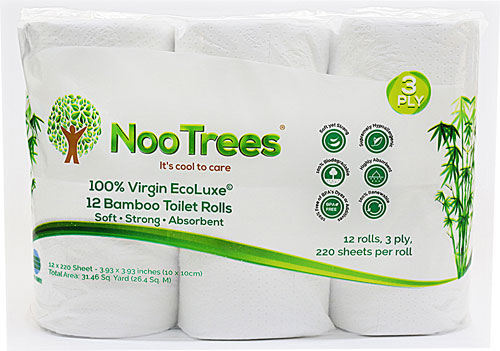 We use toilet paper multiple times a day in our most personal of areas. Yet, we hear about scary stuff that could be hiding in each roll. With so many options on the shelves it’s difficult to figure what to use and what to avoid. Here are the toxins to be wary of and a guide to help you choose the right brand for you.
We use toilet paper multiple times a day in our most personal of areas. Yet, we hear about scary stuff that could be hiding in each roll. With so many options on the shelves it’s difficult to figure what to use and what to avoid. Here are the toxins to be wary of and a guide to help you choose the right brand for you.
Chlorine Dioxide
Toilet paper brands made from virgin pulp (not recycled paper) are usually bleached with chlorine dioxide. When you hear or read about chlorine in toilet paper it’s misleading because chlorine dioxide is different from chlorine. Until the late 1990s, pure chlorine, or elemental chlorine, was used for paper bleaching and was a significant source of dioxin. Dioxins, which are persistent environmental pollutants and accumulate in the food chain, are among the most toxic chemicals on earth. The EPA began regulating the paper industry which led North American paper mills to convert from elemental chlorine to chlorine derivatives, such as chlorine dioxide, which are significantly less toxic and reduce the potential for dioxins by 90%. So, today’s toilet paper bleached with chlorine dioxide is safer than the paper produced decades ago with elemental chlorine. Unfortunately, that doesn’t mean chlorine dioxide is safe. It’s strictly regulated by the EPA as a hazardous chemical. And it still releases dioxins into the environment which is detrimental at any level.
This background is important to understand when reading marketing claims on toilet paper packaging. The following acronyms are used by the U.S. Pulp and Paper Industry to describe “safer” bleaching processes. Here’s what they really mean:
(ECF) Elemental Chlorine Free: Paper bleached with chlorine dioxide instead of elemental chlorine.
As we know, elemental chlorine is no longer used in the U.S. to bleach paper products, so this does not mean that products with this label are any safer than others. In fact, we know that chlorine dioxide is still a danger to humans and to the environment. Some brands also claim “Chlorine-Free”. Be wary of this as it can simply mean that they use a chlorine derivative such as chlorine dioxide.
(PCF) Process Chlorine Free: This is used for recycled paper. It means no chlorine or chlorine derivative was added during the production process. Ozone, oxygen or hydrogen peroxide are used for bleaching.
(TCF) Totally Chlorine Free: This is used for virgin paper. Ozone, oxygen or hydrogen peroxide are used for bleaching.
Formaldehyde
Some brands of toilet paper use formaldehyde to make the paper stronger when it is wet.
Formaldehyde is a carcinogen as well as an irritant. One study linked toilet paper to chronic irritation in women. If a brand claims that it is particularly thick, strong, or absorbent, suspect that it contains formaldehyde.
BPA
Recycled toilet paper is made from paper scraps. Thermal paper, such as cash register receipts are a known source of BPA. When they get processes to make recycled paper, trace amounts of BPA can end up in the finished product. A 2011 study found that 80 of 94 toilet paper brands contained BPA. However, for perspective, BPA in toilet paper was detected in microgram-per-gram concentrations while thermal paper receipts were measured in milligram-per-gram concentrations. That’s 1000 times more exposure from receipts than toilet paper!
Fragrances/Lotions
It’s difficult to get companies to disclose all of the chemical additives used for fragrance or added features like lotion. We know that fragrances are often a cocktail of chemicals and sometimes include phthalates, a known endocrine disrupter. Lotions can include parabens, which are linked to hormone disruption and breast cancer, as well as other harmful ingredients. It’s best to avoid any products boasting these features.
Buying Guide
Avoid: Toilet Paper made with Virgin Pulp
Sadly, this is the fluffy, white stuff that most people prefer. If chlorine dioxide, dioxins and the possibility of formaldehyde are not enough to deter you, think of the fact that 54 million trees are harvested per year for toilet paper production.
Better: Recycled Toilet Paper
These brands will likely contain trace amounts of BPA. While it is best to avoid all exposures to BPA, humans are at far greater risk of exposure from food and beverage containers and cash register receipts than from toilet paper. If you choose this option, look for brands that contain 100% recycled content and are bleached with PCF. Some brands do use ECF so look carefully.
It’s worth noting that Seventh Generation openly addresses the BPA problem on their website and are actively working toward solutions. They should be commended for their transparency. Plus, they use hydrogen peroxide for bleaching (which is PCF)!
Best: 100% Bamboo or Bamboo & Sugar Cane Toilet Paper
These brands do not contain BPA because there is no recycled content. They do not need formaldehyde for strengthening because bamboo fibers are naturally strong. Most of them use hydrogen peroxide for bleaching, although some use a combination of hydrogen peroxide and ECF. An added benefit is that bamboo and sugar cane are grasses, not trees, which are naturally renewable.
Do they work?
None of these bamboo and sugar cane brands compare in softness or strength to traditional, virgin pulp brands. However, if you are used to using recycled brands you will probably find these less-toxic alternatives to be good options. Like the recycled brands, they vary widely in appearance and functionality. My family found 2 of the 5 brands we tried acceptable.
NooTrees
This was my favorite in the category. The 3-ply sheets are the strongest of the five tested and did not break down during tough cleaning jobs. It is relatively soft and thick and looks the most like traditional toilet paper.
WHOLEROLL
Also 3-ply, this is soft and strong but not quite as thick as NooTrees.
ECOS
This is not as soft as NooTrees or Wholeroll but it holds up and does an acceptable job.
Tree Free
This did not work for me. It is thin and rough and sometimes crumbles.
Caboo
This did not work for me. It is thin and sometimes crumbles.
Non-Toxic Hangers
Question from Phoebe
I saw an older post about hangers, and I was wondering if anyone has any updated information. I am trying to fin non toxic hangers that will last that are preferably eco friendly as well. I cannot find the Ditto hangers for sale anywhere besides one sketchy seeming ebay seller. Did the whole non toxic, eco friendly hanger movement die? Any recommendations?
Lisa’s Answer
LifeStraw Glass Water Filter
Question from Kathryn
Hello! Curious if you’ve seen the LifeStraw glass water filter and think it could be valuable if not currently able to install a full filtration system… thanks!
Lisa’s Answer
It’s good to see a countertop filter with a glass jug and an activated carbon filter. Without doing a full analysis of other pitcher filters in the price range ($55), I can only give you a cursory assessment. It doesn’t seem to filter harmful chemicals such as chlorine and lead as well as mainstream brands like Brita. For example, Brita filters out 99% of lead and chlorine while LifeStraw filters 97% and 95.4%, respectively. You are making a tradeoff of a glass pitcher for less effective filtering.
If you can afford a bit more, Pure Effect, which is what I have in my house, offers a counter top model for $170. It does need to be hooked up to your faucet and does have plastic housing but it does the most comprehensive job of filtering chemicals and contaminants that I have found.
Titanium Dioxide in EnviroKlenz
Question from Lanette
Recently I’ve been reading a lot about the dangers of nano-particles of titanium dioxide and zinc oxide in products, particularly in sunscreen. I know Debra was a big fan of Enviroklenz (air cleaners and related air purifying products), as am I. They all contain titanium dioxide. Is theirs the nano type or the non-nano type? Also would you give more information on what this is?
Lisa’s Answer
I confirmed with EnviroKlenz that the titanium dioxide is much larger than nano-particles and poses no health risk.
Lemi Shine Detergent Booster
Question from Liz
We have very hard water and I am SO SICK of the scum that builds up on everything that goes into the dishwasher I’m ready to trash the beast and do dishes by hand. But there are three in our house and we always cook meals at home, so that would be quite a chore so I’m looking for a different solution.
A friend recommended adding Lemi Shine Dish Detergent Booster when running the dishwasher, but I can’t find much about its toxicity. The package says it’s “Natural, Safe, Biodegradable, Phosphate Free, Non-Toxic, Septic system safe” but who knows if that means anything?
Any thoughts on this product? Or is there another you would recommend for very hard water? I’ve been using Biokleen dishwasher detergent, but it really doesn’t work here.
Lisa’s Answer
The website lists citric acid and fragrance as ingredients. Citric acid is not a concern. Fragrance, as you probably know, can be a mix of many potentially harmful chemicals. The website’s Q&A section claims that only a small fraction of the fragrance is synthetic and most is essential oils. It doesn’t sound terrible but there may be non-toxic alternatives. Readers, any recommendations?
Futon Pad To Stop Slipping
Question from Shannon
After Debra Lynn Dadd educated me to the flame retardants and toxic foam in my sofa I replaced it with a futon. I have a solid wood futon frame and wool mattress with an organic cotton cover. My only problem is that the mattress keeps slipping off. Can you recommended a way to stop this? The Futon Shop has a product called futon stop slip. It is made of foam. Is this non toxic?
Lisa’s Answer
Finding Non-Toxic Dishwashers
Dishwashers are one of the more difficult purchases when planning your non-toxic home because they use many different materials and it’s difficult to get manufacturers or retail sellers to disclose those materials. Many sales representatives simply don’t know what’s used to make their products.
When I purchased my dishwasher a few years ago I was focused on finding models that didn’t use PCV in the racks. Recently, a new material of concern, bitumen, has been a popular topic in Toxic-Free Q&A.
Bitumen in Dishwashers
According to Wikipedia, bitumen, also known as asphalt, is a sticky, black, liquid or semi-solid form of petroleum. It’s widely used in dishwashers as a sound-deadening insulation. Some consumers complain of a tar smell from newly installed units.
But, just how dangerous is bitumen when used in these conditions? Research on the toxicity of asphalt focuses on the fumes that workers are exposed to in the pavement and roofing industries. It’s less clear how much it off-gasses once cured. Miele, a manufacturer of high-end dishwashers, claims that the bitumen is fully encapsulated and will never emit any vapor or fumes of any kind. The bottom line is more testing needs to be done to better understand the toxicity of bitumen in this application.
Some models use more bitumen than others depending on the type of tub. Base on the information I received from 7 manufacturers, dishwashers with stainless steel tubs generally use bitumen in the insulation on all sides of the tub. Dishwashers with plastic tubs generally only use bitumen in the door panel or lid. So, is it better to have less bitumen with a plastic tub or more bitumen with a stainless steel tub? Again, it’s hard to say without better understanding just how dangerous bitumen is under each condition.
Here’s where it gets even trickier. The one model I found that does not use bitumen uses other materials for sound-deadening insulation. The GE model GDF630PSMSS uses an insulation blanket and insulation mastic. The manufacturer was unable to tell me the materials used in those items but according to Wikipedia, among the commonly used materials in insulation blankets are PTFE laminates. That’s right, PTFE, otherwise known as Teflon. Mastics, like coatings and paints, have a range of VOC levels depending on the formula, so it is impossible to assess the toxicity without more information.
A further complicating factor is that it’s difficult to rely on information gathered from manufacturers. Some models that readers posted as free of bitumen are ones that I found to contain bitumen, but with a lower amount than other models. Again, I don’t believe this misleading information is intentional but more a lack of understanding by company employees. Nonetheless, it’s hard to know exactly what you are getting.
Here’s how 7 dishwasher manufacturers reported their use of bitumen.
Bosch: All models are made with bitumen.
Fisher & Paykel: Sides are insulated with cotton fiber and bitumen is used on the top of the lid.
GE: All models are made with bitumen with the exception of model #GDF630PSMSS which uses an insulation blanket and insulation mastic.
KitchenAid: All have bitumen in some degree. Models with stainless steel tubs use bitumen on all side. Models with plastic tubs only use bitumen in the door panel.
Maytag: All have bitumen in some degree. Models with stainless steel tubs use bitumen on all side. Models with plastic tubs only use bitumen in the door panel.
Miele: All models are made with bitumen, but it is fully encapsulated and will never emit any vapor or fumes of any kind.
Whirlpool: All have bitumen in some degree. Models with stainless steel tubs use bitumen on all side. Models with plastic tubs only use bitumen in the door panel.
Plastics in Dishwashers
This is actually some good news. Plastic components inside of new dishwashers, which can include tubs, racks, silverware baskets and spraying arms, are now being made with safer plastics. PVC used to be a commonly used material in racks but fortunately, most are now made of nylon. Plastic tubs, silverware baskets and spraying arms are usually made with polypropylene, which does not contain BPA or phthalates. It’s worth verifying, before you purchase a specific model, that the parts are made with these safer plastics.
Let’s continue to gather information on dishwashers. What has been your experience with new dishwasher purchases? Are there detectable odors after installation and for how long? Have you found a model that is free of bitumen? Keep me posted!
Fragrance Free Shampoo and Conditioner
Question from Audrey
First Granny’s went out of business and now Magick Botanicals is out of business. Need fragrance free shampoo and conditioner. Cannot tolerate odor of herbs or flower extracts – has to be totally fragrance free. Carters has olive oil shampoo, but after a while, the smell of the oil got to me and I had to stop using it. Any suggestions?
Lisa’s Answer
Debra’s List has a whole section of fragrance free body care products. These are usually not organic, but they qualify here because they have eliminated the very toxic synthetic fragrance. These products have no fragrance of any kind—synthetic or natural. NOTE: Some of these websites sell products with fragrance and without.
Untreated Towels
Question from Audrey
I used to get my towels from either LLBean or Blair Catalogs. They both now have their towels treated so it is fade resistant. LLBean has organic towels but are very expensive. Where can I buy bath towels the way they used to be – not treated for fade resistant. Thank you.
Lisa’s Answer
There are many untreated towels available on Debra’s List. Readers, please leave a comment if you have found other reasonably priced untreated towels.
CA Prop 65 warning of Cadmium
Question from Chris
I have a question about (another) CA Prop 65 warning.:
I’m finding a warning for Cadmium somewhere in a bathroom vanity I was about to buy.
I can only guess Cadmium is used in the white paint on this.
Since this an item subject to the most head/humidity in the house, is this particular warning one I should take seriously? Should I assume Cadmium in the paint will off-gas in these temperatures?
Lisa’s Answer
The concern about cadmium is not from off-gassing but from ingestion. For example, the European Standard bans the use of cadmium in children’s toys for fear that they will be exposed if they chew on the toy or put it in their mouth.
The greatest sources of exposure for a consumer to cadmium are through food and cigarette smoke. Absorption through the skin is negligible.
If you recall, reports of cadmium in children’s jewelry caused alarm in recents years. The reason for limits on children’s jewelry but not adults is the assumption that children are more likely to put things in their mouths.
I would consider this a low risk of exposure, but certainly try to find something without cadmium if possible.
Chemical Safety Regulations
In 2016, the Frank R. Lautenberg Chemical Safety for the 21stCentury Act was passed into law, updating the Toxic Substances Control Act (TSCA) which was enacted in 1976. Under TSCA, only a few hundred out of 85,000 chemicals approved for use were reviewed for safety. Only 5 of those were banned.
The Lautenberg Chemical Safety Act was intended to bring much needed improvement to our chemical safety regulations. It required 10 priority chemicals to be assessed immediately and by 2020 it requires 20 evaluations ongoing at any time. In 2017, the EPA changed the rules to allow the agency to only look at a subset of a chemical’s uses when assessing its safety. As a result, when the EPA evaluated the 10 priority chemicals it did not take into account the risks caused by the chemical’s presence in air, water or soil.
Here is the status of some of the most dangerous chemicals in use:
Chlorpyrifosis a pesticide used extensively in fruit and vegetable crops. Research has shown that even a small amount can slow children’s brain development and it is toxic to farm workers.
- In 2016, the EPA recommended to ban the chemical.
- In 2019, the EPA decided to keep it on market sighting insufficient data.
Asbestosis banned by most other industrialized nations. It is a known carcinogen.
- In 2017, the EPA refused to finalize the proposed ban claiming the science is unresolved.
- In 2019, the EPA chose to restrict rather than ban the chemical.
Trichloroethylene (TCE)is used as a degreaser and is used as an ingredient in adhesives, paint removers and spot removers. The EPA concluded that it causes cancer and other serious health effects.
- In 2016, the EPA proposed a ban for use as an aerosol spray degreaser and dry-cleaning spot treatment. This was the first EPA proposed ban in 25 years.
- In 2017, the EPA proposed to indefinitely delay the ban.
Methylene Chlorideis used in paint stripping. It is a likely carcinogen and has been linked to more than 50 deaths.
- In 2016, the EPA proposed a ban for use as a paint stripper.
- In 2017, the EPA proposed to indefinitely delay the ban.
- In 2018, the EPA banned the chemical for use in consumer products but allows for its continued use in commercial products.
N-Methylpyrrolidone (NMP) is used as a paint stripper. It can cause birth defects and reproductive issues.
- In 2016, the EPA prosed a ban or restrictions for use in paint strippers.
- In 2017, the EPA proposed to indefinitely delay the ban.
The EPA has not made progress banning harmful chemicals under the new TSCA law but it has been very quick to approve new chemicals, reviewing over 2000 and approving over half of them. Please consider supporting organizations like Environmental Working Group (EWG) which is a non-profit, non-partisan organization dedicated to protecting human health and the environment.
Styrofoam in Hydroponics
Question from TL
Hi, I have seen styrofoam float used widely in hydroponic farming. Agree hydroponic is pesticide free, but does styrofoam has similar”food grade” like PU foam MDI or is styrofoam used in hydroponic farming safe at all? Thank you.
Lisa’s Answer
So, you need to make the call for yourself. Personally, I don’t want to risk leaching of a probable carcinogen into my food. It is possible to uses polyurethane floats in hydroponics however, according to 365aquaponics, polyurethane is sometimes “improved” for better insulation by adding isocyanurates, which are hazardous chemicals. Its’ also worth noting that some XPS foam board is Greenguard certified. Don’t let this fool you; Greenguard does not test for leaching into food or water so it says nothing about the safety of eating food grown in this meduim.
Hydration Bladders
Question from Pedro
Hello, I recently started looking for hydration backpacks and I am finding that the bladders are made from either TPU or PEVA. Which one is less toxic? Are there better options? Help! I just want to keep my kids safe. Thank you.
Lisa’s Answer
ATC Trailers
Question from Kelly
Has anyone with MCS tried the ATC (Aluminum Trailer company)? It can be ordered with all aluminum interior. This option is impossible to find used and it seems I will need to order a new one. I have severe MCS, Athsma, COPD, and allergies (allergic to wood so can’t do the toxic free trailers). I cannot find any reviews on them for MCS on the ACT and am concerned with how long it will take to off gas.
Lisa’s Answer
Cadmium
Question from Olga
I recently purchased furniture from Wayfair.com. The smell is awful and not going away after several weeks. I contacted them and told them about it. They really don’t care. After looking into the furniture and maker I realized it has a warning for California proposition 65. I called them back trying to get more information on this and how it can affect my health and my children’s Health. The person I spoke to said we should be fine since we are not eating the furniture. The chemical in question is Cadmium. I have looked into it and all the side effects of this chemical. Is she right? Are we ok because it is on furniture and not being ingested??
Lisa’s Answer
I think you have two different issues. The smell is not likely due to cadmium, which does not have a detectable odor. The smell is more likely VOC off-gassing from adhesives, sealants or coatings. It’s difficult to identify the source without knowing what type of furniture you have purchased and what materials it is made from. One option is to seal any hard surfaces with a product like AFM Safecoat. It may also help to air it out outside for several days.
As for the cadmium, it is most likely from a pigment or coating on the furniture. While cadmium can be absorbed through the skin, that is not considered to be a major route of exposure. The most worrisome type of exposure after cigarette smoke, is ingestion, which is why it’s so important to make sure your cookware does not contain cadmium. Cadmium in your furniture is a lower risk than in your cookware but I still would not want it in my home.
Dental Compositites
Question from Kimberly
Hi Lisa,
Years of searching for dental composite replacements for simple fillings.
Most of them have BPA and TEGMA related compounds. The ones that do not still have horrible chemical tastes to them.
Would love some safer alternatives.
Lisa’s Answer
Zeolite Detox Symptoms
Question from Barbara
Hi Lisa,
Checking to see if taking the zeolite will produce detox symptoms? If so how severe or not? Can I start out slow in taking the product?
Lisa’s Answer
Safe Drywall
Question from Teresa
Hi Lisa,
Can you please share the best safest types of drywall? I was looking at Magnesium oxide but hearing things about cracking.
Thanks
Lisa’s Answer
Ants
Question from Jen
Hi there! I’m looking for advice on how to handle an influx of kitchen ants this summer. My usual methods (ie – clean counters, all food put away in sealed packaging, etc) aren’t working. I can’t even tell where they’re coming from specifically, can’t locate ant hills in the yard. Very confusing. I’m not ready to call in an exterminator quite yet (although my husband is quickly losing patience!) I’ve heard good results with the following products but since I have kids who play on the floor and pets who lick their paws I’m hesitant to use.
1-Terro ant traps
2-zevo ant spray
Thanks for your help and any recommendations you might have for me.
Lisa’s Answer
PVC and Microban in Air Conditioning
Question from Paula
Hi Lisa,
My situation is that I’m getting central air conditioning installed, and want to avoid all toxic components. I’m wondering if having PVC or Microban in my attic is something I should worry about (my attic isn’t air sealed from my living space, and air sealing is probably too expensive at this time). I guess my question is, is there a distance from which toxic chemicals aren’t a health danger?
Lisa’s Answer
The distance is not really the important factor since air will be moving through the AC system, through your vents, and into your home. I would avoid PVC and Microban if possible.
Non-Toxic Gardening
Its peak growing season in the northeast and we can’t wait for our first harvest of tomatoes, carrots and peppers. We’re already enjoying kale, lettuces, beets, and our house specialty, purple potatoes. My husband’s hobby is organic gardening, so my kids and I get to reap the rewards of his hard work. He is always experimenting with some new growing method or product and patiently allows me to research anything new before he buys it.
It’s always amazing to me that so many gardening products are made with harmful chemicals. Why go to the trouble of growing your own food, particularly organic food, if you are going to grow it in a bed made of pressure-treated wood or water it with a hose that leaches lead and BPA?
When you’re planning a non-toxic garden the first place to start is with high-quality, organic seeds. Some argue that it’s not necessary to buy organic seeds because studies have shown conventional seeds without trace chemicals from insecticides or fertilizers. I choose to err on the side of caution. Knowing that plants take in nutrients through their leaves, common sense would support that if leaves are sprayed with synthetic chemicals the plants will absorb those chemicals. There are other compelling reasons to buy organic seeds:
1. Organic seeds are grown to survive in organic systems. They may be more likely to thrive without synthetic chemicals than conventional seeds.
2. Buying organic seeds supports organic farming practices which is better for the environment, farm workers and consumers.
3. Organic seeds are relatively inexpensive at roughly $1 more per packet than conventional seeds.
Debra’s List has several high-quality seed companies to choose from.
If you are still using a garden hose that may be made with PVC or have lead-containing metal fittings, check out this study by healthystuff.org. It’s a bit out of date but it still provides great guidance. Debra’s List recommends Water Right hoses and Terrain Heritage hoses.
I’ll be writing more on garden products over the course of the summer. I am also working on an affiliate store where you will be able to buy recommended products. I plan to have a section on gardening supplies. Stay tuned…
PFAS Chemicals Found in Farm Produce
PFAS, or polyfluoroalkyl substances, are a family of chemicals that are used to make non-stick coatings such as Teflon. Sometimes called Forever Chemicals, they persist in the environment and body and have been linked to health issues such as hindered growth and learning and increased cancer risk.
There has been increasing concern about contamination from PFAS-containing firefighter foam that is used on military bases and some airports. The foam has previously been linked to groundwater contamination in neighboring communities. New reports show that PFAS chemicals have now been detected in milk and vegetables from farms located near military bases. Read more food contamination here.
How to Avoid Contaminated Foods
Federal and state agencies are testing samples from potentially contaminated farms, but until more is known it may be best to avoid food from farms that are located near contaminated sites. EWG has an interactive map that shows sites with known PFAS contamination.
Take Action
The Air Force is recalling PFAS-containing foam from the U.S. and overseas, but they have not found a safe way to dispose of it once it is reclaimed. The foam is being contracted out to private businesses for incineration, but incineration may not fully destroy the chemical. There is an amendment before Congress to hold PFAC polluters accountable for cleaning up contaminated sites. Click here to learn how you can help.
Handbag Materials
Question from Wendy
Lisa,
Can you tell me if it’s toxic to carry handbags made of these materials? I know I may need to find out more details about the chemicals but this is what I have so far.
Handbag 1:
Dyed Nylon with Water and Stain Resistant Coating
Dyed Italian Leather
Nylon Strap
Handbag 1:
70% Polyamide
30% Polyurethane
Vachetta Leather Trim
Wendy
Lisa’s Answer
Let’s take a look at each of the components of these handbags:
Handbag #1:
Nylon with water and stain resistant coating – Untreated Nylon is one of the least toxic plastics. It is still a synthetic fiber that is made from petroleum but there is little concern for its toxicity. It’s the treatment that is more concerning. It’s hard to say without more information but most stain resistant treatments are made with perfluorochemicals (PFCs) which can be highly toxic.
Dyed leather handle– the tanning process for leather can use 250 different chemicals including chromium which can be very toxic.
Nylon strap– If the Nylon is untreated it should be fine.
Handbag #2:
Polyamide– This is Nylon. If it is untreated it should be fine.
Polyurethane– There are different types of polyurethane. Read Debra’s post about polyurethane toxicity here. It is likely that this is a food-grade film which would have low toxicity, but you would need to confirm that.
Vachetta leather trim– This is vegetable dyed leather. Vegetable tanning does not use chromium which is a positive but since there can be 250 different chemicals used in the tanning process you might want to find out more about the specific chemicals used. Some vegetable tanned leather may use all-natural materials, but you would need to check to be sure.
Based on the information you have provided, it looks like Handbag #2 is the safer options, but more information would be helpful.
Removing Odors from Insulation
Question from Colleen
Hi Lisa,
Has anyone successfully moved into a house where the previous tenants used scented detergents and dryer sheets in the house. I was under the assumption that the fragrances got into the insulation in the walls, etc. How long did it take to outgass if ever? Would a “bake out” even take care of it?
Lisa’s Answer
Debra interviewed Daliya Robson from Nirvana Safe Haven and they discussed a number of ways to eliminate odors (click here for transcript).
I would first try some low-cost options like zeolite or charcoal to try to absorb the odors. As a next step I would try the “bake out”, which has proven successful for many situations. If neither of those work, you might try some of the products mentioned in the interview. Finally, a good air purifier can be very effective. While it is an investment, you will have it for many years to help reduce toxins in your home. There are many sealers on the market that are great for reducing formaldehyde, but I have read that they do not always reduce odors, particularly if they are organic.
Has anyone else had success minimizing these types of odors?
Feit
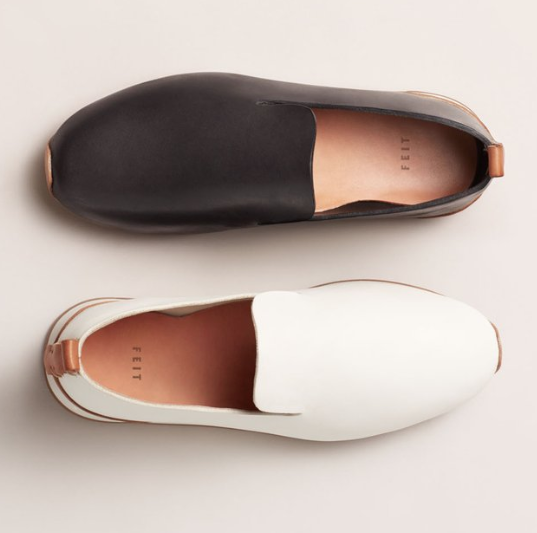 Shoes for women and men made with exceptional craftsmanship and materials. “In 2004 FEIT [fight] was born as a response—an evolution of consumerism and production that moves away from volume and excess, and towards quality and sustainability. FEIT footwear is built for longevity, from natural materials via human construction. All FEIT footwear is hand sewn and hand lasted by a master shoe maker. Few makers are skilled enough to produce footwear in this manner, hence only limited numbers can be produced…FEIT adheres to a strict policy of using biological materials and natural treatments whenever possible. Natural materials breathe, patina and become one with the wearer. Materials page.
Shoes for women and men made with exceptional craftsmanship and materials. “In 2004 FEIT [fight] was born as a response—an evolution of consumerism and production that moves away from volume and excess, and towards quality and sustainability. FEIT footwear is built for longevity, from natural materials via human construction. All FEIT footwear is hand sewn and hand lasted by a master shoe maker. Few makers are skilled enough to produce footwear in this manner, hence only limited numbers can be produced…FEIT adheres to a strict policy of using biological materials and natural treatments whenever possible. Natural materials breathe, patina and become one with the wearer. Materials page.
Undandy
 These shoes for men are a cut above ordinary shoes. Their about page starts with this quote “A man who works with his hands is a laborer; a man who works with his hands and his brain is a craftsman; but a man who works with his hands and his brain and his heart is an artist.” Made from vegetable tanned leather, there are many styles and colors to choose from…you can customize any pair and even design your own! About the leather.
These shoes for men are a cut above ordinary shoes. Their about page starts with this quote “A man who works with his hands is a laborer; a man who works with his hands and his brain is a craftsman; but a man who works with his hands and his brain and his heart is an artist.” Made from vegetable tanned leather, there are many styles and colors to choose from…you can customize any pair and even design your own! About the leather.
District Leathers
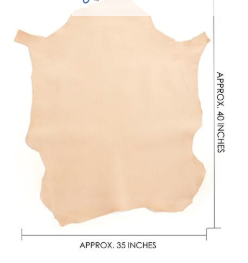 Vegetable-tanned hides for creating your own leather projects. In addition to the vegetable tans link here, also see the “cow hides” and lamb hides” menus and choose “vegetable tans.” See their very informative Leather Buying Guide . Free swatches. “Vegetable tanned leathers are tanned using strictly organic materials such as tree bark. They possess warm deep colors. As veg-tan leather ages, it absorbs the light, oils, and air that it is exposed to which cause their colors to become more rich.”
Vegetable-tanned hides for creating your own leather projects. In addition to the vegetable tans link here, also see the “cow hides” and lamb hides” menus and choose “vegetable tans.” See their very informative Leather Buying Guide . Free swatches. “Vegetable tanned leathers are tanned using strictly organic materials such as tree bark. They possess warm deep colors. As veg-tan leather ages, it absorbs the light, oils, and air that it is exposed to which cause their colors to become more rich.”
Marlondo Leather
 complete range of leather goods—including purses, backpacks, travel gear, and accessories—handmade individually by artisans using vegetable-tanned leather. Classic styles, reasonable prices. About their leather.
complete range of leather goods—including purses, backpacks, travel gear, and accessories—handmade individually by artisans using vegetable-tanned leather. Classic styles, reasonable prices. About their leather.
Etsy Vendors of Vegetable-Tanned Leather Purses
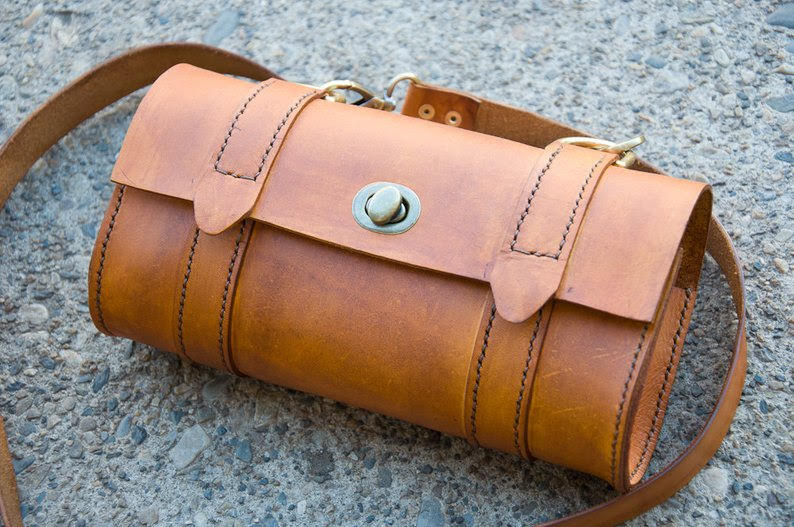 I had to include this because there are so many small artisans now working with vegetable-tanned leather that it was a joy for me to see their creations. You’ll find unusual designs here as well as traditional classics. Note the country items are shipped from as they are not all use. But here’s where you’ll find vegetable-tanned leather purses and accessories at prices well below other sources. Note: This is a search results page on Etsy for “vegetable-tanned leather purses.” Try reaching on “vegetable0tanned leather for other items.
I had to include this because there are so many small artisans now working with vegetable-tanned leather that it was a joy for me to see their creations. You’ll find unusual designs here as well as traditional classics. Note the country items are shipped from as they are not all use. But here’s where you’ll find vegetable-tanned leather purses and accessories at prices well below other sources. Note: This is a search results page on Etsy for “vegetable-tanned leather purses.” Try reaching on “vegetable0tanned leather for other items.
Frank Clegg
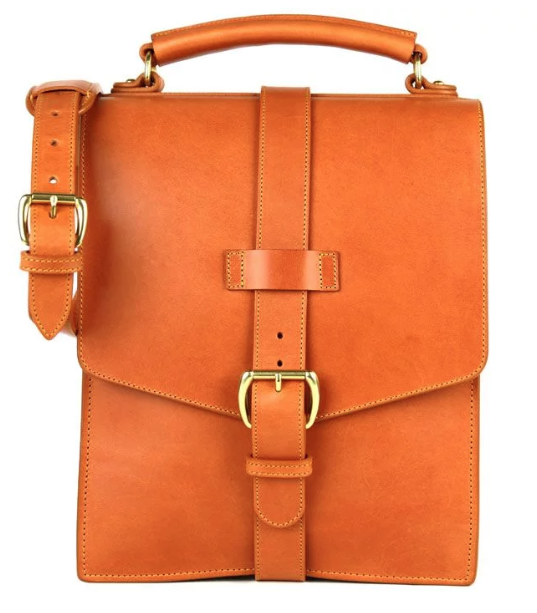 Fine leather goods handcrafted in the USA. These are very high quality and very expensive. About the leather.
Fine leather goods handcrafted in the USA. These are very high quality and very expensive. About the leather.
Eating “Plant-to-Mouth” From My Organic Garden
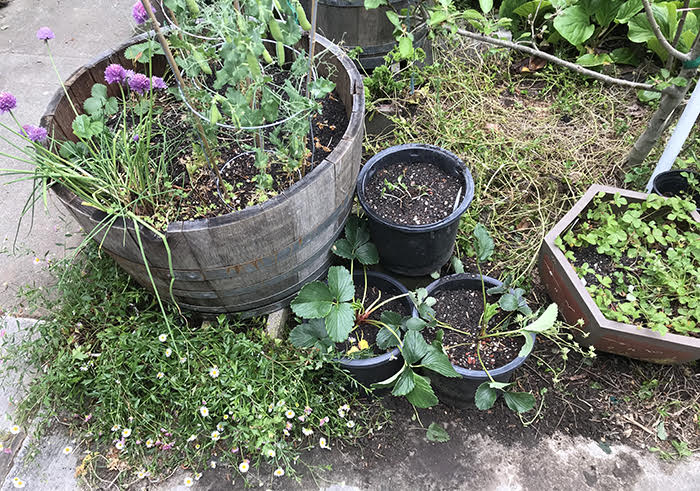
I started out last year with this tiny garden outside my office door. I took this photo yesterday morning after cleaning out the weeds. All these plants are from last year. Those purple flowers to the left are chive blossoms, several varieties of strawberries, Santa Barbara daisies (not edible but pretty). There’s another barrel with last year’s potatoes popping up again and a pomegranate tree, plus more over by the motorhome we are turning into a tiny house.
I spend a lot of time writing about how we can choose consumer products that are made without toxic chemicals, but “toxic-free” also includes doing and making thing yourself without toxics. Such as organic gardening.
This year we had a lot of rain, so my little garden is popping with plants I planted last year.
I’ve got chive blossoms ready to eat right now. English peas I planted earlier this year are about to give a harvest. Strawberry plants are sending out runners and the new plants are about twice the size of the original plants and already producing flowers. The two raspberry canes planted last year have produced so many new plants we have been digging them up and replanting because they are overflowing the barrel.
Ralph Waldo Emerson once said, “The Earth laughs flowers.” Today I am saying, “Here in my garden, the Earth is laughing vegetables and fruits!”
I’m fortunate to have Larry and his mom and a brother and a sister—all experienced gardeners—and enough fertile soil that we can each garden to our hearts content. This morning there was a large basket of java beans just harvested that I think we’re having for dinner.
Next weekend we’re going to some wonderful plant nurseries where we can buy heirloom seedings for edible plants. I can’t wait!
As I was walking around my garden, looking forward to pulling raspberries and tomatoes right off the plants and into my mouth I suddenly thought, “Oh, the next step after farm-to-table is plant-to-mouth!” I can hardly wait to do that in a few days when the peas pop. Fresh English peas with chive blossoms right out of my hand.
Is Silicone Inherently Antibacterial?
Question from Jennifer
Hi Debra,
Does anyone know if silicone touted as antibacterial and antimicrobial is that way because it is naturally a deterrent or if it is treated with a chemical? And if treated with a chemical to be antibacterial, is it inert in silicone in the final product?
I can’t find any information online about it at all for non medical products. For example I’m looking at buying a silicone dish drying mat because the cloth ones just get moldy fast and they all seem to say they are antimicrobial, but I can’t determine why, if it is a natural byproduct of being silicone or if treated like so many things are now.
If my dishes that eat off of will be touching I was wondering if I should be concerned. Thanks!
Debra’s Answer
Antibacterials is a big subject and antibacterials can range in toxic effect from silver having virtually no health effects to triclosan, which is known to be an endocrine disruptor and cause skin and breast cancer, among other health effects. There is even now an antimicrobial made from peppermint oil, so whenever you see the word “antimicrobial,” you need to find out the specific antimicrobial that has been used.
Antibacterials may be widely used and not on the label, for they can be used to prevent the deterioration of plastics, for example, which would not be on the label because it’s not a selling point for consumers. Again, the antimicrobial may be perfectly harmless or have health effects.
With regards to your question as to whether silicone is inherently antibacterial or whether a chemical is added, I would say from looking at online search results that silicone is NOT inherently antibacterial because additives exist to make silicone antibacterial for specific uses.
Would the antibacterial leach from the silicone? Well, depending on what form the antibacterial comes in, it would likely bind to the silicone and not be released. But again, we don’t know the antibacterial or the form it is in, or its toxicity.
I’m using my best logic here, based on my understanding, not on tests.
I always apply the Precautionary Principle, which is, when in doubt, don’t use it.
This is another example of why there needs to be improved labeling that reveals what all the materials are.
Ant Invasion in Home
Question from Caroline
Hi Debra,
My home is prone to ants; and this time , as well as regular foundation spraying with Termidor, and placing advion ant bait in heavily infested areas within the home 3 x over the past month, it has been over a month that the ants invade the master bath daily to the point of being unusable. Usual spraying of vinegar and water, sprinkling black pepper or cinnamon was to no avail. I had to call in a professional exterminator who is trying to work with me because of MCS.
Debra’s Answer
I’m going to say something that may sound obvious, but have you tried filling the holes where they come into the house?
This has been my tried-and-true method for controlling ants for almost 40 years and it always works. I even did it when I lived in an apartment building in San Francisco. All the other units were sprayed for ants, but I wouldn’t let them in my unit and did this instead. Even with the spraying the other units had ants. Mine was the only one that did not.
All you need is a bottle of Elmer’s White Glue and a damp sponge.
Trace the line of incoming ants back to where they are coming into your house and make note of the spot. Then wipe up the ants with the sponge. Fill in the hole with Elmer’s Glue. Then go to the next entrance and do the same.
The ants will continue to find new ways to get in until you’ve sealed all the holes. Then you will never have an ant problem again.
GDC/Building For Health
 The global leader of healthy home material supply, specializing in interior finishes and furnishings such as AFM Safecoat Paints and others,, toxin-free flooring, custom air purification systems and solutions, and other nontoxic building products. Healthy building expert Andrew Pace has over 25 years experience in the education of home health and human wellness. With over 20,000 satisfied clients all over the world, Andrew has a keen awareness of the issues relating to chemical sensitivity, green building, mold remediation and toxicity reduction.
The global leader of healthy home material supply, specializing in interior finishes and furnishings such as AFM Safecoat Paints and others,, toxin-free flooring, custom air purification systems and solutions, and other nontoxic building products. Healthy building expert Andrew Pace has over 25 years experience in the education of home health and human wellness. With over 20,000 satisfied clients all over the world, Andrew has a keen awareness of the issues relating to chemical sensitivity, green building, mold remediation and toxicity reduction.
Scarf Shop
 Long and luxurious scarves made from organic or conventional cotton or wool,dyed by hand in small batches in Minneapolis, MN. Low impact materials and methods are used whenever possible. Kettle dying in small batches with water based dyes gives fabric a rich and mottled appearance. These are gorgeous scarves. Lots of beautiful colors.
Long and luxurious scarves made from organic or conventional cotton or wool,dyed by hand in small batches in Minneapolis, MN. Low impact materials and methods are used whenever possible. Kettle dying in small batches with water based dyes gives fabric a rich and mottled appearance. These are gorgeous scarves. Lots of beautiful colors.
Pamut Apparel
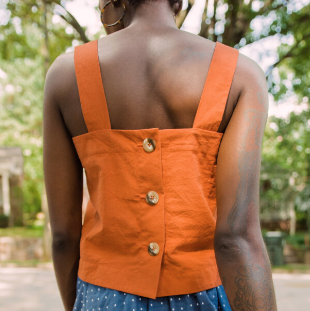 Simple yet styish clothing for women made from organic cotton, organic linen, or raw silk. “We use only natural fibers, sustainably sourced, in all of our clothing. We source only the softest natural fibers available. Our organic certified cottons and linens and sustainably sourced raw silks are beautiful, long-lasting, and pesticide free.”
Simple yet styish clothing for women made from organic cotton, organic linen, or raw silk. “We use only natural fibers, sustainably sourced, in all of our clothing. We source only the softest natural fibers available. Our organic certified cottons and linens and sustainably sourced raw silks are beautiful, long-lasting, and pesticide free.”
Nutmeg Fibers
Kelocabay
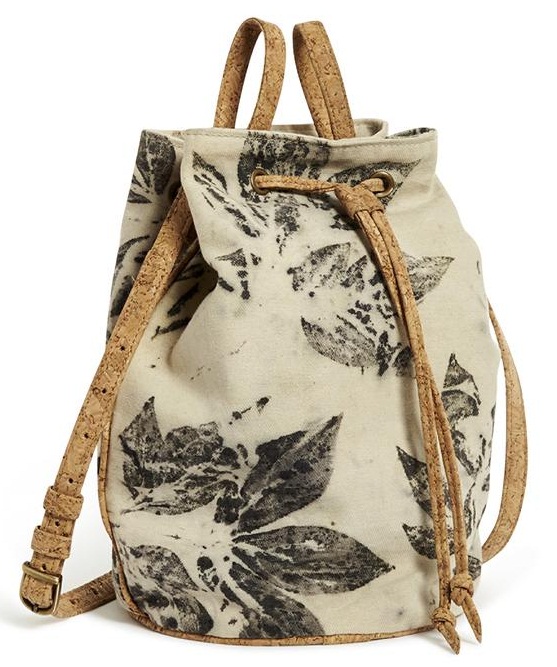 Bags of all sizes and natural fiber scarves “hand dyed naturally…We use plants, not pollutants, to create color for our accessories collection. The beauty of aligning our design, development and production with the East Coast seasons truly defines how guided we are by nature. Each season nature brings us many gifts, including the colors we create. We expand on and discover more colors from season to season through growing dye plants and natural dyeing our textiles in house. Our dye stuffs are mostly home grown, locally foraged or food scraps. At times we also use minerals and dye stuffs that we source from trusted suppliers.”
Bags of all sizes and natural fiber scarves “hand dyed naturally…We use plants, not pollutants, to create color for our accessories collection. The beauty of aligning our design, development and production with the East Coast seasons truly defines how guided we are by nature. Each season nature brings us many gifts, including the colors we create. We expand on and discover more colors from season to season through growing dye plants and natural dyeing our textiles in house. Our dye stuffs are mostly home grown, locally foraged or food scraps. At times we also use minerals and dye stuffs that we source from trusted suppliers.”
Camellia Fiber Company
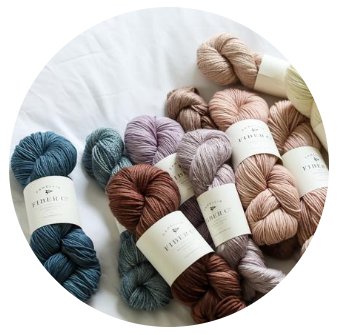 Natural fiber yarns colored with plant-based dyes. “We believe in the inherent beauty and superiority of natural fibers, and work exclusively with them. From cotton and linen to wool and mohair, our yarns lend beautiful texture to your most cherished projects…we dye our carefully sourced mill-spun yarns in small batches with the utmost care. Our new signature colorway collection is inspired by sun dappled florals, and our limited-edition seasonal collections are hand-dyed with natural seed, root, and flower based dyes.”
Natural fiber yarns colored with plant-based dyes. “We believe in the inherent beauty and superiority of natural fibers, and work exclusively with them. From cotton and linen to wool and mohair, our yarns lend beautiful texture to your most cherished projects…we dye our carefully sourced mill-spun yarns in small batches with the utmost care. Our new signature colorway collection is inspired by sun dappled florals, and our limited-edition seasonal collections are hand-dyed with natural seed, root, and flower based dyes.”
EST WST
Seam Siren
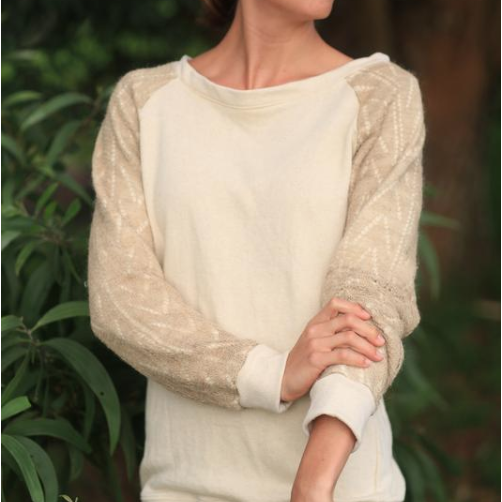 An extraordinary line of women’s clothing with a viewpoint and understanding far beyond any other website I’ve seen. Clothes designed for healing are made from “100% chemical-free” wild Himalayan nettle, flax, and hemp, colored with plant-based dyes. There is so much information available on the site about the fibers, dyes, skin detox, health and other related topics I could spend all day reading this. This is the purest clothing I’ve seen. “Seam Siren is fiercely committed to purity in every layer of the company from our plant-based care labels to chemical-free fibers. We have made a commitment to create relationships with the communities that both harvest the fiber from the wild, and those that are growing our fibers organically. We are proud to stand confidently behind terms like, “organic”, “sustainable”, “plant-based”, “wildcrafted” and “chemical-free”, knowing in our hearts that we are operating from a place of transparency and integrity….These botanical fibers and dyes act as a medicinal delivery system from the material to your skin. One of the oldest examples comes from the Indian tradition of Ayurveda. Now referred to as “Ayurvastra”, or “healing cloth”, this practice involves combining natural fibers and medicinal plants to dye clothing, bedding, and anything else that would come in contact with the body to promote healing. Two clinical studies proving the efficacy of this practice were conducted in India: One by the Kerala Ministry of Health and the other one by the Pharmacology department of the Government Ayurveda College…When we are unable to harvest our own colors due to volume, we source our dyes from a company that has created fully GOTS certified organic plant-based dyes, which are the most earth-friendly on the market with full traceability from the plants to the final colors.” This website gave me a whole new level of possibility about what clothing can be.
An extraordinary line of women’s clothing with a viewpoint and understanding far beyond any other website I’ve seen. Clothes designed for healing are made from “100% chemical-free” wild Himalayan nettle, flax, and hemp, colored with plant-based dyes. There is so much information available on the site about the fibers, dyes, skin detox, health and other related topics I could spend all day reading this. This is the purest clothing I’ve seen. “Seam Siren is fiercely committed to purity in every layer of the company from our plant-based care labels to chemical-free fibers. We have made a commitment to create relationships with the communities that both harvest the fiber from the wild, and those that are growing our fibers organically. We are proud to stand confidently behind terms like, “organic”, “sustainable”, “plant-based”, “wildcrafted” and “chemical-free”, knowing in our hearts that we are operating from a place of transparency and integrity….These botanical fibers and dyes act as a medicinal delivery system from the material to your skin. One of the oldest examples comes from the Indian tradition of Ayurveda. Now referred to as “Ayurvastra”, or “healing cloth”, this practice involves combining natural fibers and medicinal plants to dye clothing, bedding, and anything else that would come in contact with the body to promote healing. Two clinical studies proving the efficacy of this practice were conducted in India: One by the Kerala Ministry of Health and the other one by the Pharmacology department of the Government Ayurveda College…When we are unable to harvest our own colors due to volume, we source our dyes from a company that has created fully GOTS certified organic plant-based dyes, which are the most earth-friendly on the market with full traceability from the plants to the final colors.” This website gave me a whole new level of possibility about what clothing can be.
Cloth Foundry
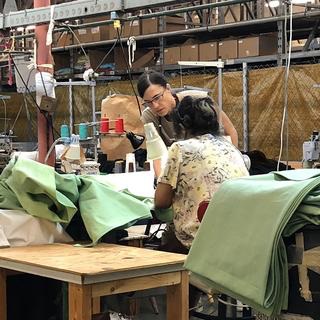 Textiles and apparel (for women) in collaboration with nature. Natural Fibers. Natural Finishes. Natural Dyes. Our extraordinary textiles are obtained from prized and certified sustainable natural fibers. We manufacture in California with clean ingredients utilizing strict biological and ethical principles…We make textiles to be worn by people. Our fabric is designed to be in direct contact with our bodies. Produced with clean green ingredients such as cotton, a carbohydrate, real botanicals like indigo dye and minerals, for example calcium carbonate, the main component of pearls and eggshells; it is our belief that textiles and apparel should be made with the same consideration as food — naturally, and with nothing we can’t consume. What’s on our bodies should be just as good as what we put in them….Every product is designed to be cared for, repaired, and passed on–not landfilled. It is our hope that after a long life of use, it can be composted worry free.” Just go to their website and read everything. Especially their blog. A whole different viewpoint on textiles.
Textiles and apparel (for women) in collaboration with nature. Natural Fibers. Natural Finishes. Natural Dyes. Our extraordinary textiles are obtained from prized and certified sustainable natural fibers. We manufacture in California with clean ingredients utilizing strict biological and ethical principles…We make textiles to be worn by people. Our fabric is designed to be in direct contact with our bodies. Produced with clean green ingredients such as cotton, a carbohydrate, real botanicals like indigo dye and minerals, for example calcium carbonate, the main component of pearls and eggshells; it is our belief that textiles and apparel should be made with the same consideration as food — naturally, and with nothing we can’t consume. What’s on our bodies should be just as good as what we put in them….Every product is designed to be cared for, repaired, and passed on–not landfilled. It is our hope that after a long life of use, it can be composted worry free.” Just go to their website and read everything. Especially their blog. A whole different viewpoint on textiles.
Industry of all Nations
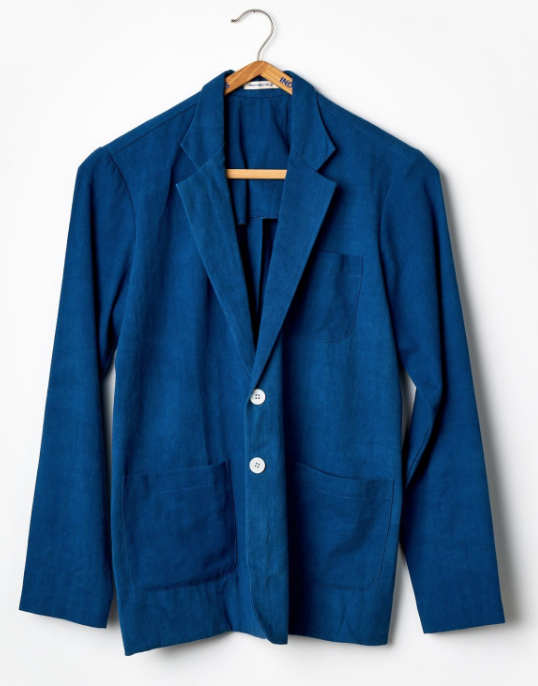 This website has some of the purest clothing I’ve seen for men (but I would wear this clothing too). Just one example is a 100% organic cotton twill blazer, unbleached and undid, with river shell buttons. Same jacket also available in blue, made with fermented natural indigo dye. Espadrille sneakers made of cotton and jute. Shop by style or material: undid & unleaded, natural dyes, alpaca, organic cotton, and more. Simple, natural, organic, loose.
This website has some of the purest clothing I’ve seen for men (but I would wear this clothing too). Just one example is a 100% organic cotton twill blazer, unbleached and undid, with river shell buttons. Same jacket also available in blue, made with fermented natural indigo dye. Espadrille sneakers made of cotton and jute. Shop by style or material: undid & unleaded, natural dyes, alpaca, organic cotton, and more. Simple, natural, organic, loose.
Sustain By Kat
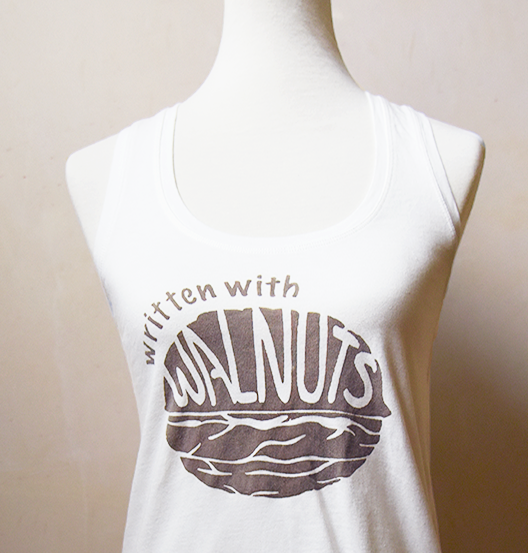 Casual clothing for women and kids, in timeless basic styles designed to be worn season after season. “Sustain makes healthy clothing from organic, natural fibers that are good for your body and good for the world. Unlike traditional manufacturing processes, we avoid using synthetic dyes and toxic chemicals that could absorb into your skin and cause health issues. Our selection of plant-dyed clothing made with certified organic materials and ayurvedic processes promote well-being…All our clothing is 100% natural, from the organic fibers, to the natural dyes, all the way down to the organic thread sewing it together. We sweat the details to make the cleanest clothing around, so that our clothing is safe for both you and our world.”
Casual clothing for women and kids, in timeless basic styles designed to be worn season after season. “Sustain makes healthy clothing from organic, natural fibers that are good for your body and good for the world. Unlike traditional manufacturing processes, we avoid using synthetic dyes and toxic chemicals that could absorb into your skin and cause health issues. Our selection of plant-dyed clothing made with certified organic materials and ayurvedic processes promote well-being…All our clothing is 100% natural, from the organic fibers, to the natural dyes, all the way down to the organic thread sewing it together. We sweat the details to make the cleanest clothing around, so that our clothing is safe for both you and our world.”
Maiwa Clothing
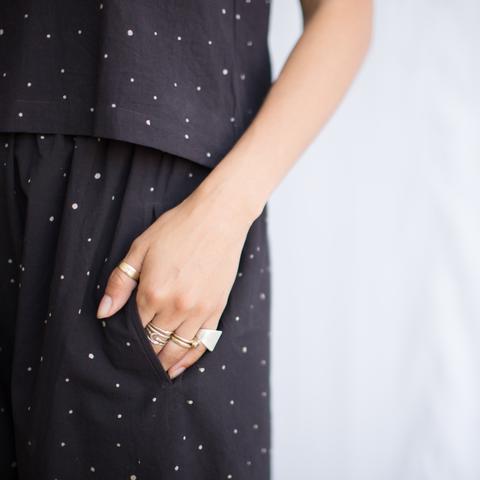 Clothing for men and women, hand made in India using traditional methods. “Our garments feature a range of artisan techniques. Depending on the garment these may include, handwoven cloth, block printing, ikat dyeing, natural dyes, and many forms of surface design. We make naturally dyed clothing and accessories designed to be worn everyday. We want to make it easy to find clothing that you love that isn’t made using toxic dyes and chemicals or plastic fibers…Whenever possible, we search for the highest quality all-natural and organic dyes and fibers, including grown-in-Texas organic cotton, biodegradable coconut husk beads, and organic indigo. Our mission is to show that it’s possible to make clothing that’s good for people and good for the environment, and still make it something you want to wear every day.”
Clothing for men and women, hand made in India using traditional methods. “Our garments feature a range of artisan techniques. Depending on the garment these may include, handwoven cloth, block printing, ikat dyeing, natural dyes, and many forms of surface design. We make naturally dyed clothing and accessories designed to be worn everyday. We want to make it easy to find clothing that you love that isn’t made using toxic dyes and chemicals or plastic fibers…Whenever possible, we search for the highest quality all-natural and organic dyes and fibers, including grown-in-Texas organic cotton, biodegradable coconut husk beads, and organic indigo. Our mission is to show that it’s possible to make clothing that’s good for people and good for the environment, and still make it something you want to wear every day.”
Native Color
Soluna Collective
 Handmade clothing for women. “Our promise is to use as many natural materials as possible while also identifying other eco-friendly alternatives. Some of the materials we use include organic cotton, wool, cruelty free silk, linen, corozo, cupro and Tencel. We also promise to be accountable for our materials and will take back any garment in order to keep it out of the landfill!. We only use low-impact and natural (plant-based) dyes. We are devoted to keeping color a part of our world but in an environmentally responsible way. All of our dyes eliminate harmful chemicals from the process, while some of our dyes contain only naturally occurring ingredients. Lastly, many of our dyes are Oeko-Tex and/or GOTS certified.
Handmade clothing for women. “Our promise is to use as many natural materials as possible while also identifying other eco-friendly alternatives. Some of the materials we use include organic cotton, wool, cruelty free silk, linen, corozo, cupro and Tencel. We also promise to be accountable for our materials and will take back any garment in order to keep it out of the landfill!. We only use low-impact and natural (plant-based) dyes. We are devoted to keeping color a part of our world but in an environmentally responsible way. All of our dyes eliminate harmful chemicals from the process, while some of our dyes contain only naturally occurring ingredients. Lastly, many of our dyes are Oeko-Tex and/or GOTS certified.
Megan-Ilene
 Beautiful clothing for women. ‘Hand dyed, made-to-order artisanal clothing and accessories for the discerning customer…sustainable, biodegradable, handmade….All items are made by hand in our Greensboro, North Carolina studio using organic natural fibers and cloth. All dyes used are either natural or low impact synthetic with a focus on low immersion techniques to prevent water waste. All textile off-fall is reconfigured, reused or revitalized creating a closed loop, zero waste system.Megan Ilene studio strives to create beautiful, well-designed, and long-lasting garments incorporating old and new practices to create fresh pieces.By creating items that can be worn a myriad of ways and utilizing materials that are ultimately safe for Earth’s reclamation we hope to change the thought process one utilizes with purchasing goods. Who made your clothes? What are they made of? It is our hope that by producing and consuming mindfully, we can focus on craftsmanship, reduce waste, and create truly impeccable clothing for the discerning customer.”
Beautiful clothing for women. ‘Hand dyed, made-to-order artisanal clothing and accessories for the discerning customer…sustainable, biodegradable, handmade….All items are made by hand in our Greensboro, North Carolina studio using organic natural fibers and cloth. All dyes used are either natural or low impact synthetic with a focus on low immersion techniques to prevent water waste. All textile off-fall is reconfigured, reused or revitalized creating a closed loop, zero waste system.Megan Ilene studio strives to create beautiful, well-designed, and long-lasting garments incorporating old and new practices to create fresh pieces.By creating items that can be worn a myriad of ways and utilizing materials that are ultimately safe for Earth’s reclamation we hope to change the thought process one utilizes with purchasing goods. Who made your clothes? What are they made of? It is our hope that by producing and consuming mindfully, we can focus on craftsmanship, reduce waste, and create truly impeccable clothing for the discerning customer.”
Olderbrother
Gaia Conceptions
 “Handmade Eco Chic Apparel for the Global Nomad” … every piece we offer is custom to you and handmade in North Carolina. Our goals at Gaia Conceptions are to ensure our clothing materials and production methods are rooted in sustainability and our garment designs are beautiful, comfortable, and highly versatile. The first step was to only use certified organic fabrics that are produced either locally (North Carolina, USA) or through fair trade practices abroad. We also made sure our dyes are as eco-friendly as possible often passing on certain colors because they didn’t meet our standards. A mixture of natural dyes and low impact fiber reactive dye color options is currently the most eco-friendly option. We are always experimenting with new techniques and researching new possibilities.” For women (including plus sizes) and children.
“Handmade Eco Chic Apparel for the Global Nomad” … every piece we offer is custom to you and handmade in North Carolina. Our goals at Gaia Conceptions are to ensure our clothing materials and production methods are rooted in sustainability and our garment designs are beautiful, comfortable, and highly versatile. The first step was to only use certified organic fabrics that are produced either locally (North Carolina, USA) or through fair trade practices abroad. We also made sure our dyes are as eco-friendly as possible often passing on certain colors because they didn’t meet our standards. A mixture of natural dyes and low impact fiber reactive dye color options is currently the most eco-friendly option. We are always experimenting with new techniques and researching new possibilities.” For women (including plus sizes) and children.
XSilk
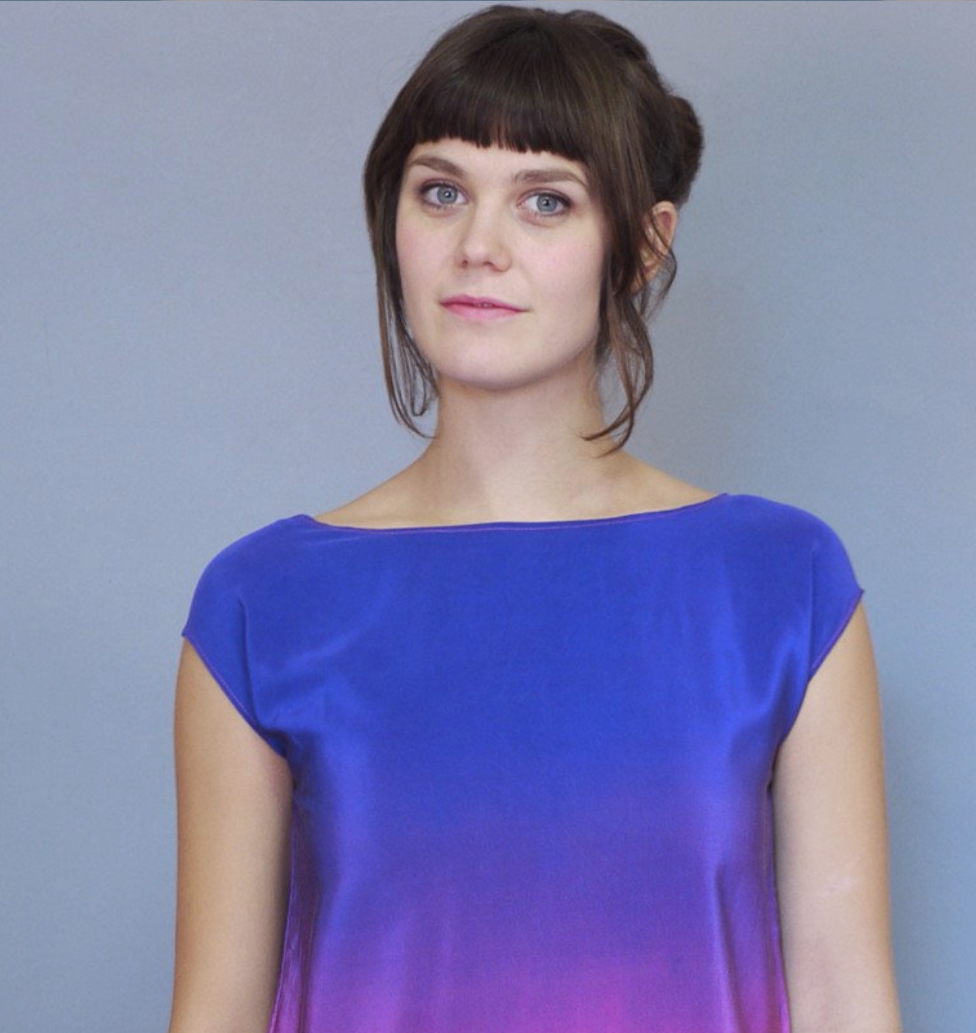 Made-to-order silk clothing for women, with a Japanese sensibility. This artisanal design & craft studio focuses on hand dyed and hand painted textiles. “We produce garments and accessories using time-tested traditional processes with a modern sensibility. Each piece is crafted individually, and often is a one-of-a-kind piece…We dye in a eco conscious way by using safest method of dyeing available to us. We operate on “made-to-order” mode of production so to keep our waste to minimal. Our materials are locally sourced. Our dye workshop is open to those who wants to learn about natural dyeing including indigo dyeing, botanical dyeing and several different traditional Japanese textile coloring processes.” NOTE: No mention is made of the silk being organic.
Made-to-order silk clothing for women, with a Japanese sensibility. This artisanal design & craft studio focuses on hand dyed and hand painted textiles. “We produce garments and accessories using time-tested traditional processes with a modern sensibility. Each piece is crafted individually, and often is a one-of-a-kind piece…We dye in a eco conscious way by using safest method of dyeing available to us. We operate on “made-to-order” mode of production so to keep our waste to minimal. Our materials are locally sourced. Our dye workshop is open to those who wants to learn about natural dyeing including indigo dyeing, botanical dyeing and several different traditional Japanese textile coloring processes.” NOTE: No mention is made of the silk being organic.

